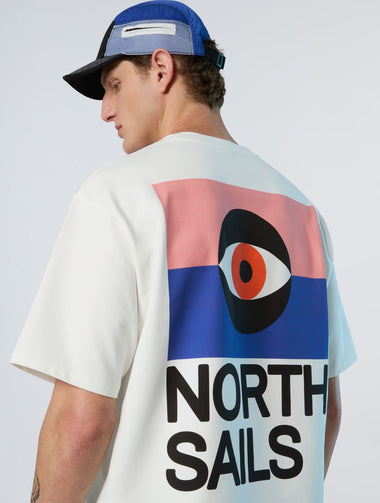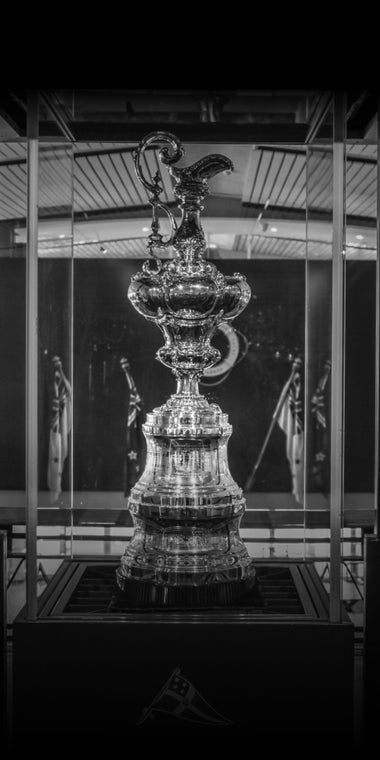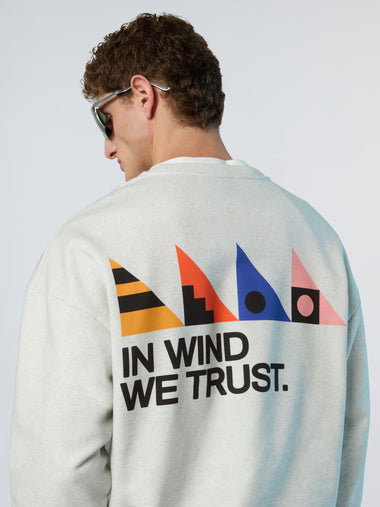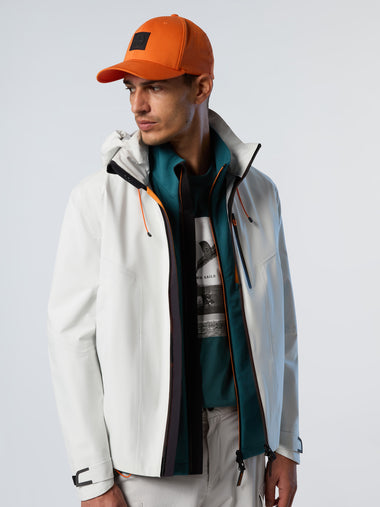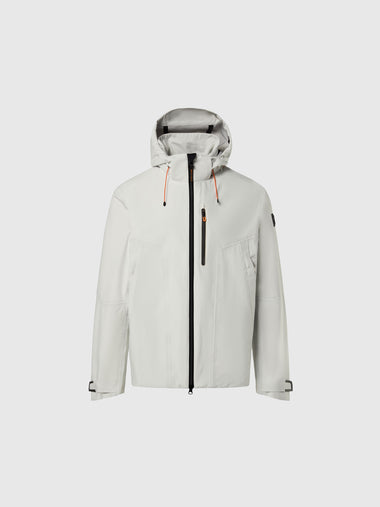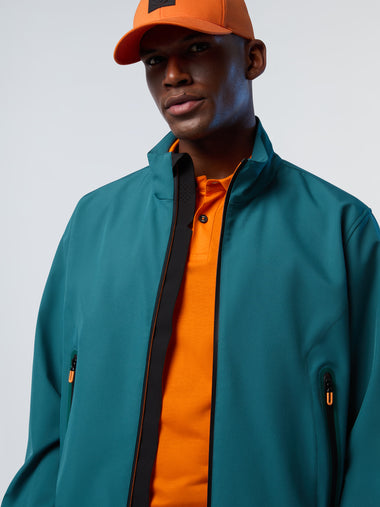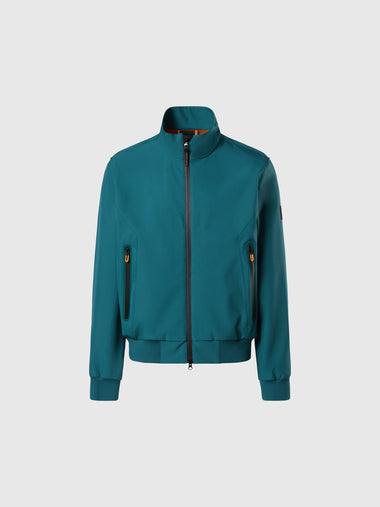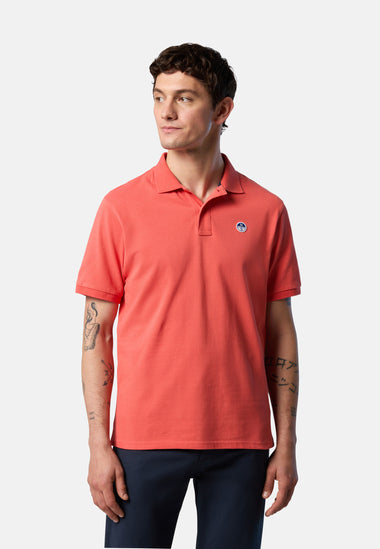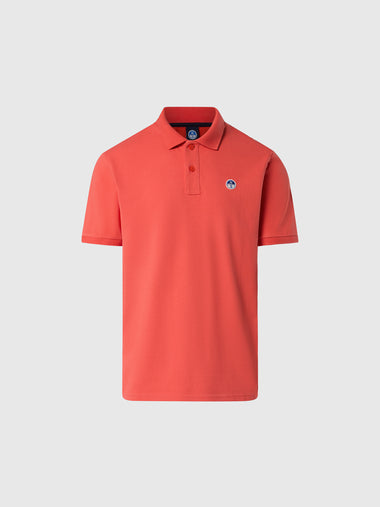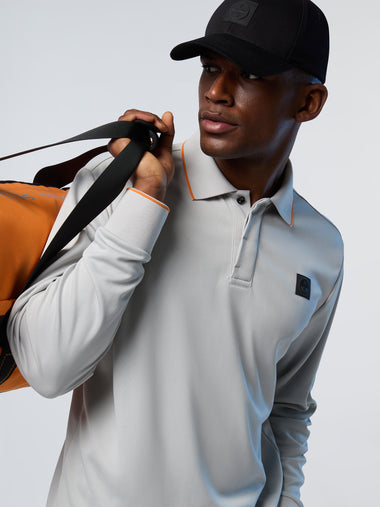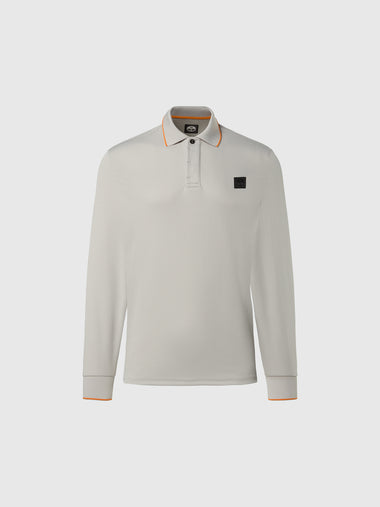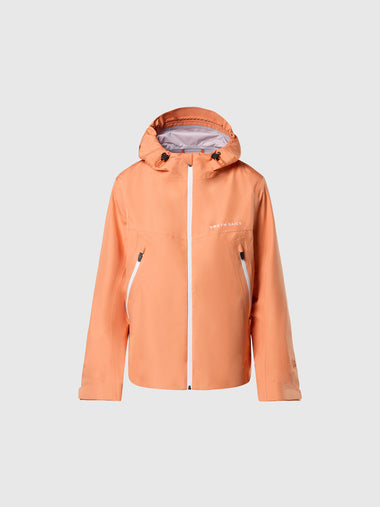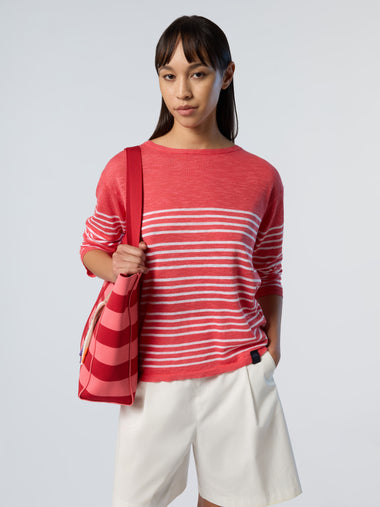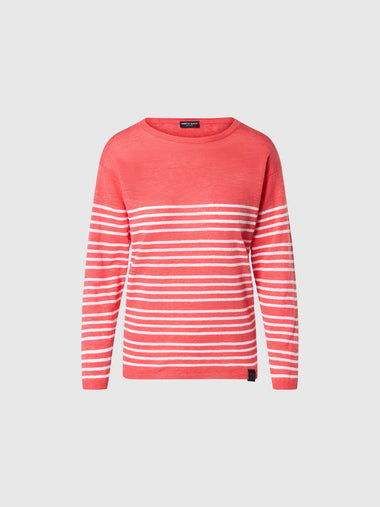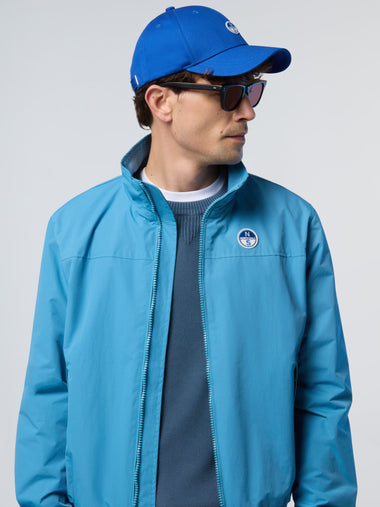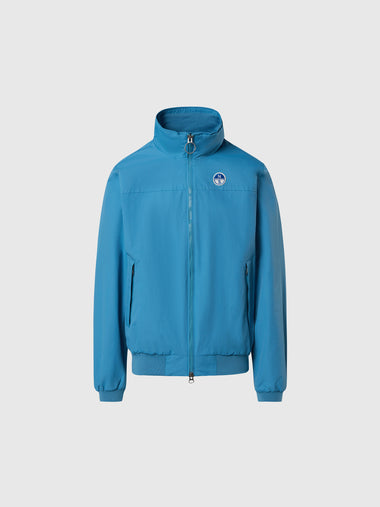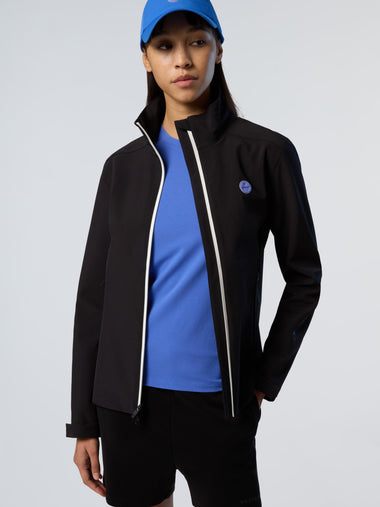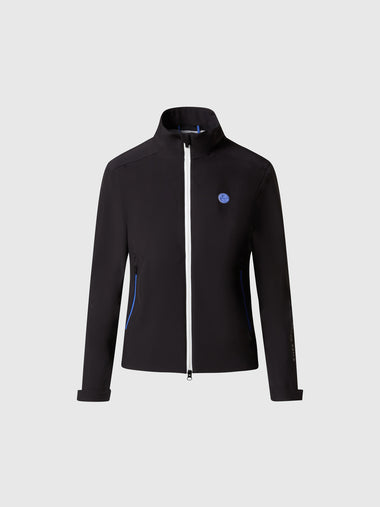NORTH SAILS BLOG
Todo
Events
Guides
News
People
Podcast
Sustainability
Tech & Innovation
Travel & Adventure
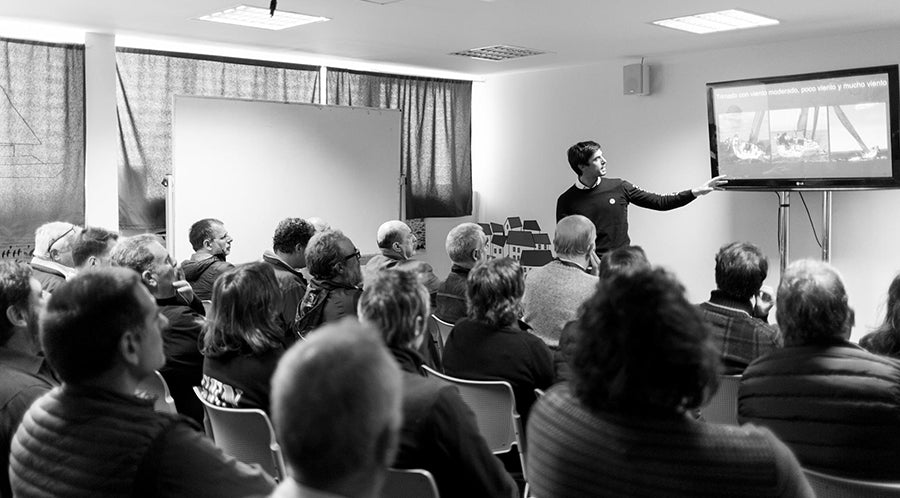
NORTH SAILS EN EL FESTIVAL SAIL IN
NORTH SAILS EN EL FESTIVAL SAIL IN
La pasada semana North Sails estuvo presente en el Festival SAIL IN de Bilbao, donde tuvo lugar diferentes y muy interesantes charlas.
Junto a muchas personalidades de la élite de la vela, como Santiago Lange o el Equipo Mapfre de la Volvo Ocean Race. Nuestro responsable en la Zona Norte de España, Jorge Martínez Doreste, impartió una Master Class sobre las últimas tecnologías en fabricación de velas y trimado en ceñida. Todo ello acompañado de una fantástica organización por parte de todo el equipo de SAIL IN, a los que agradecemos enormemente su invitación y esperamos volver el próximo año.
READ MORE
READ MORE
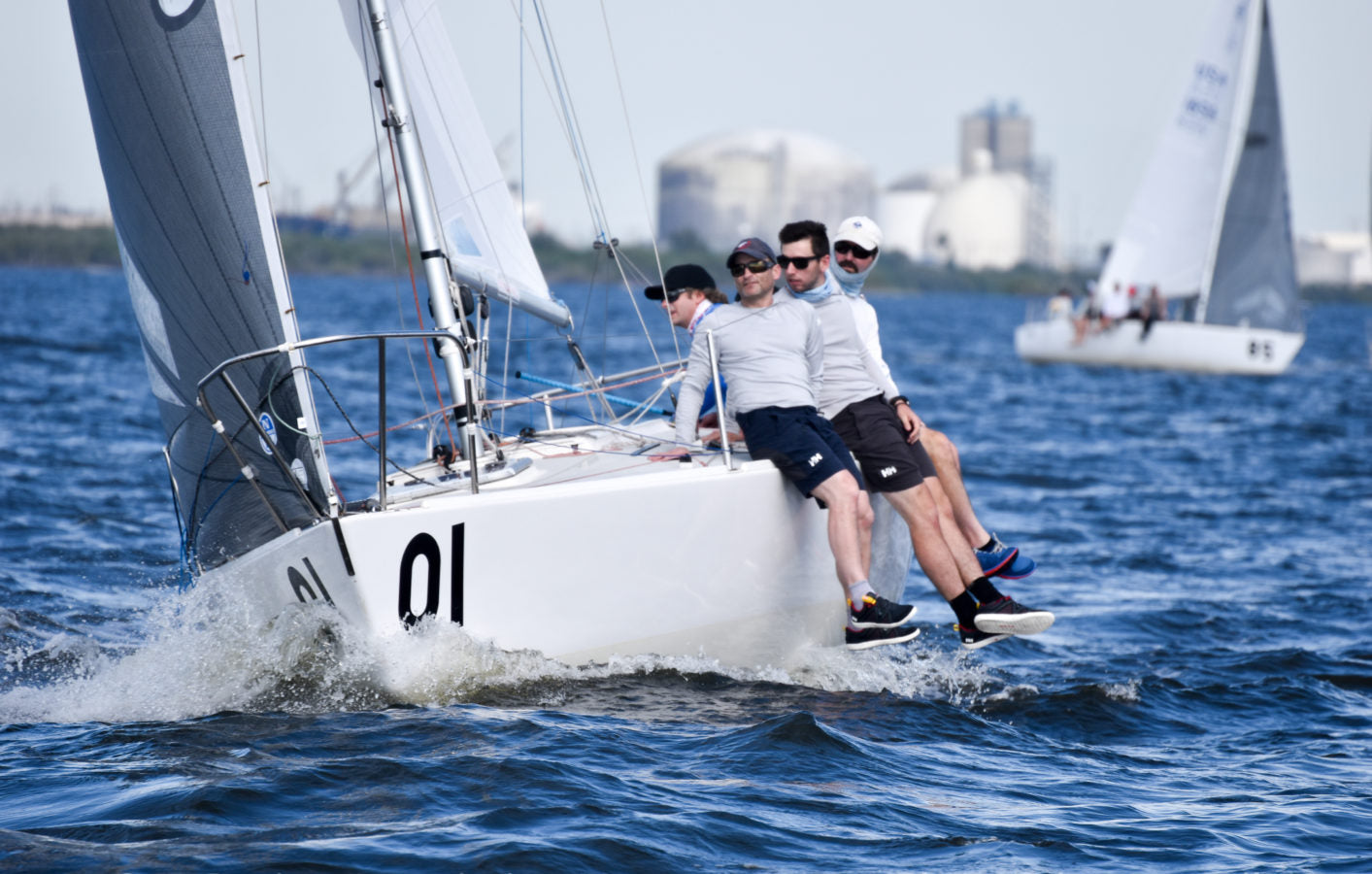
STARTING, TACTICS, & SET UP
STARTING, TACTICS, AND SET UP
Strategies From the 2019 Midwinters In Tampa, FL
2019 Midwinters Champion, Rossi Milev neck and neck downwind with Robby Brown, 2018 National Champion © Chris Howell
On the first two days of Midwinters in Tampa, the breeze built from a 5-8 knot SE to the ‘normal’ SW seabreeze. On the final day, the breeze filled first from the south and shifted southwest much sooner, eventually strengthening to 12-15 knots. Every day, the strategy remained the same.
Daily debriefs after sailing provided some great insights from sailors at the top of the fleet, including: North Sails Expert and J/24 World Champion Tim Healy, Hydra Sailing Solutions coach and Old Dominion All-American Marty Kullman, and Brown University Coach and Collegiate All-American John Mollicone. Marty was tactician for Bangor Packet. Tim Healy was tactician for New England Ropes. John Mollicone was Tim’s helmsman. Take notes!
Using your prostart properly
Q: When you tack onto starboard, how do you judge how far away from the line?
A: Time and distance using your Velocitek, ask yourself: how many meters- how many seconds?
Example: Your Velocitek reads 50 meters at 60 sec., so you are travelling at roughly two knots, which is actually pretty slow. When you are that slow, it’s hard to control the boat once you get on the line.
tip: You want to be a touch further away from the line so you’d be approaching at about one second per meter.
Q: How much time do I have to burn so I’m not over early?
A: It depends on what shift you are in at the start.
Main Point:
Get out there early and practice your accelerations, then distance and time from the line. This will help you figure out the best place to start accelerating and you can trust what the velocitek is telling you.
© Chris Howell
Q:How do you properly ping the line?
A: When you get your pings, you want to cross the starting line close hauled. Come in on starboard at the same angle you would be close hauled. That’s where your bow is on the line. Do the same at the pin. The far side is easiest for the bow guy.
tip: The slower the better when you do your pings. This is so you can do it the same every time and you can trust what the tool is telling you. When you get comfortable with that, one guy is in charge of meters, one is in charge of time, and you can figure out fast if you need to be coming up to the line faster.
Main point: Always come in on starboard/port at the right angle, your true close hauled course, so your ping is accurate. Do it the same every time. At some point you’ll develop a routine and it will all become easier each time. You’ll learn to trust what the velocitek is telling you.
Strategy at the start
After you get comfortable with all the prestart tasks you develop a routine. For a port approach you are looking for a place to tack at 1:30 or closer to 1:00 . When you do decide, if you have someone behind you and they may tack below you. It’s good to go behind a couple boats and tack so you can guarantee yourself a hole.
Think about it this way:
In the light air, when the wind goes left you are racing earlier, maybe even trying to make the pin end. When the wind goes right you are burning speed at the start, going head to wind more, keeping in mind that you can’t set up too early.
You really need to know what shift you are in. Right shift, starting on starboard, you are going to get to the line faster. Left shift? It will take longer for you to get there.
Main Point: Know what shift you are on before the start
Example: If you are 20 meters away from the line and get a 10 degree right shift there is less distance to cover to get to the line because you are now able to sail more perpendicular to the start line and will take less time to get there. In a 10 degree left shift, there will be more distance to sail to the line because you will be sailing much more parallel to the starting line and will take more time to actually get to the line. .
Tip: Your tactician needs to articulate to the skipper: “We need to get going, go quicker, it’s a left phase, etc.”
© Chris Howell
Prestart Sail Setup & Technique
Tip: Make sure your traveller is preset, even if you are on port at the time (port approach)
Don’t have a lot of backstay on, but you can preset if you need it (in windier conditions). Mainsheet and final genoa trim is all you need to focus on as skipper at the start.
Average Genoa Trim:
You want to go 3” off the spreader tip on average. Sometimes a little tighter or looser but 3” average. You can trim tighter when it feels right.
Main Point: Trimmer on final approach needs to be in sync with skipper to get up to speed. Make sure your main comes in tight, trim in, and how tight you trim in all depends on my lane off the line.
tip: Another thing that’s important is to make sure your mainsail is up all the way. We mark it so we can see if it slipped. It will always stretch the first time, so you gotta tighten it before the first race and between races.
At The Start
Q: Is there a boat to leeward of me off the start?
A: If there is, you need to put them away.
Foot over them at the start to get them out of the way early. This only applies to a threat to leeward. If your tactician tells you that you have to pinch off someone to windward that’s when you revert to high mode.
Ask yourself: Am I in height mode? If yes, you trim the main in hard. Then you can pinch off the guy to windward before he has the chance to roll me.
Your trim all depends on how much space to leeward you have. Should you climb or foot? Sailing higher is slower, but sometimes to pinch off the guy to windward you can get away with sailing your high mode to get rid of them.
Main Point: At the start, think about what mode you are in and get over-top the leeward boat ASAP
© Chris Howell
Strategy beyond the start
Local knowledge is great but you have to sail with what you see. On day one, we hedged right but the pressure was left. Day two you had to connect the pressure, but don’t spend time sailing to it in a header. Sail on the tack that’s pointing at the pressure if you can to get there quicker.
Q: Why is it important to go upwind early when you get to the race course?
A: So you get to know what’s happening. To get a good idea of the shifts that are happening, you have to give yourself time to sail upwind so you can figure it out. You have to go with what you feel and where the pressure is strong. Make sure your boat is set up correctly for speed.
Main point: You have to go with what you feel and see.
Q: When you are in the middle, and you feel light. What’s the next best step?
A: Be patient and get to an edge. Sail towards the pressure if you can, but get to an edge. Once you are at the edge, you want to make sure you are into the pressure all the way before you tack. If you are too shy of the pressure, you won’t get the full effect.
© Chris Howell
Technique off the line and on the beat
Q:If you are deep in the fleet, and you’re thinking about shifts vs. clear air, which do you choose and why?
A: You can’t be in bad air, you need to find a shift so you get out of there. The amount of air that twists off a J/24 sail is major. Sail in bad air for three minutes? NO, it’s better to do two tacks. There are times where you’ll have to hold out for a short time, but you don’t want to be in bad air for long. You need to maintain your boat speed as often as possible.
Example: It cost us five boat lengths in one race, but we double tacked because we could keep our speed. It was worth it.
Tip: As tactician, you ask the skipper, are you starting to feel it? Are you having a hard time? Then you have to tactically decide how to get out of there. Sometimes it can be worth sticking it out, but your skipper will tell you if they can hang on a bit longer. This can bide you some time if you are looking for a clear lane, but you can’t wait that long.
Main point: Your skipper will tell you if they are struggling. Then you can decide what the next best thing is.
Tip: The lighter it is the more bad air affects you. If you feel like you are getting affected, foot or tack away. Ask yourself: “Is it really painful worth tacking away? Or not so bad where you can hang a bit longer?”
Main point: You need to have a high mode. Yes high mode is slower, but, if you can sail fast in high mode you can stick out the situations where it’s necessary to wait for a lane to clear.
© Chris Howell
© Chris Howell
READ MORE
READ MORE

BIANCA COOK JOINS NORTH SAILS
KIWI BIANCA COOK JOINS NORTH SAILS
Following her latest circumnavigation, Cook joins the world's leading sailmaker for her next challenge
📸 Turn The Tide On Plastic / Volvo Ocean Race
North Sails is excited to announce the addition of Bianca Cook to its sales force. Based out of New Zealand, the talented sailor will focus on the local New Zealand market. She is a key hire who will be looking at further enhancing the depth of knowledge and expertise within the loft ensuring the best client experience possible.
Starting out in dinghies but quickly progressing to Classic yachts, match racing, and superyachts, Cook has an impressive CV for a 29-year-old. Hailing from a boat building background, she understands the need for early inclusion of sails into a design and development program to ensure optimum performance. With her wealth of knowledge and significant experience on large boats, having accumulated over 100,000 offshore miles, Bianca realized a lifelong dream to compete in the Volvo Ocean Race when she was selected to race on Turn the Tide on Plastic in 2017-18. She most recently was part of the first professional all-female crew to compete in the Rolex Sydney to Hobart Race with the Ocean Respect Racing Team on Wild Oats X.
📸 Sue Ellen / Live Sail Die
As one of the world's most exciting young sailing talents, she will be an important part of the North Sails team who will continue to help deliver a premium and unrivaled customer service, and ensuring that the company continues to stay at the forefront of innovation and performance.
Richard Bicknell, North Sails New Zealand General Manager commented: “Bianca is a well-known and hugely respected sailor, not only in New Zealand but around the world. She has a considerable amount of ocean miles under her belt and has sailed in a wide range of classes and events. We are delighted that she has decided to join us to bring her knowledge, experience, and infectious smile to the team - we know that she can help us further develop our network across New Zealand. She also brings with her the ability to grow our younger market and show the North range of product to the next generation."
Bianca Cook commented: “I have used North Sails across most of the boats that I have sailed on in recent years and there is no doubt it is a quality brand with outstanding products. Sailing around the world in the Volvo Ocean Race was the greatest challenge of my life but this is an exciting next phase in my career. The team at North Sails are second to none and I look forward to joining them and all that we can do together in the future.”
📸 Turn The Tide On Plastic / Volvo Ocean Race
📸 Turn The Tide On Plastic / Volvo Ocean Race
READ MORE
READ MORE
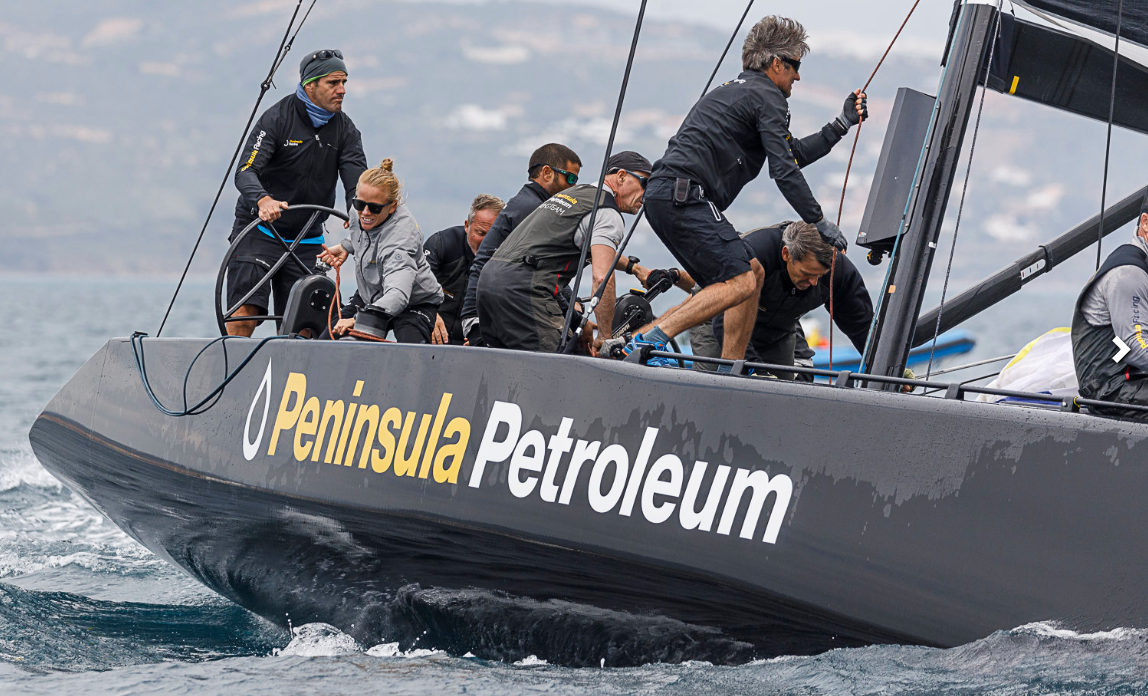
FLAVIA TOMISELLI: SAIL DESIGN
FLAVIA TOMISELLI: SAIL DESIGN
Key Roles Played By Women Within The Leading Sailmaking Brand
© Nico Martinez
Flavia Tomiselli is looking to make a big splash this coming season in the design world. Not only is she in the business of grand prix, she’s looking to break into the superyacht segment at our largest manufacturing facility in the world, as an up-and-coming sail designer.
As a teenager in Italy, Flavia got a taste of racing through a local summer camp. At the University in La Spezia, she studied ocean engineering surrounded by sailors. At 50 kilograms, her size makes her perfect for small one designs (420s, 29ers) and keelboats (Melges 24s, Este 24s, Melges 32s). Her weight helped earn her some pro racing opportunities early on, and now she combines a design-trained eye with sailing talent.
This year, Flavia will join Alegre for the TP52 Super Series. “I love racing. I learn more every time I get to sail. There is always a discussion about what could be better. It’s good for me to see what we do and how things work, both on and off the water. I try to be involved as much as possible in the performance debriefs, which helps me apply it to my every day at work.”
© Nico Martinez
When North Sails expanded in Palma, Flavia was a superyacht project manager. After the expansion, Flavia joined the design team. For 2019, she’s excited to gain more experience with superyachts and grateful for the chance to be a part of such an excellent team.
Flavia works closely with Heine Sørensen, a Dane who’s designed North Sails for 18 years. “Heine comes to Palma once a month, and we are always making sure we are on top of the current projects. He has taught me a little bit of everything about sail design. I enjoy learning from him because he is calm and precise, and a great teacher. It’s nice to learn from someone who is so articulate because everything makes sense and has order. He’s got a ton of experience, working on superyachts for many years. He is my mentor; we’re having fun.”
“Flavia is very dedicated and easy to work with,” Heine says. “She is eager to learn and working with Future Fibres and Southern Spars has given her a wide range of technical knowledge within our industry. She is a keen sailor in the RC44 and TP52 too. She doesn’t say no to a good Italian lunch either, which we all are benefitting from!”
-Heine Sorensen
“I’ve always looked for a job that could allow me to keep sailing and that wasn’t going to work with engineering,” Flavia responds. “I like my job with North Sails because it allows me to do what I love, but still all ties together. One day we are fitting new sails, then measuring the boat, then we go out and see how the sails look.
“Designing sails isn’t just what you see on a computer screen. You see how the whole boat revolves around sail power which for me is the big picture. The two come hand in hand.”
This season, Flavia will be sailing on team Alegre with mainsail trimmer and North Expert Noel Drennan, and lead Sail Designer Kevin George.
“I learn from what I see on the boat,” she explains. “Being on the water helps me relate to North Design Suite back at the office. Applying all the little things discussed on the boat gives me a much better understanding of how to be better designing sails.
© Nico Martinez
“Winning is always a great feeling,” she continues, “whether it’s a little regatta or world championship. When each team member is doing their job and doing it well, it helps create a positive atmosphere. In this level of sailing, a big part of our job is making sure the owner is happy, and that’s also the feeling of winning. Last year we placed third at the 52 Worlds and it was a great achievement.”
When asked about being one of only a few women in sail design, she replied; “I’ve never had any doubt that I could do the same work that a man could do, whether sailing competitively or designing sails. I knew that it was what I wanted to do and I managed to make it happen. I still work hard every day to get better.”
As a female sailor, Flavia has had unique sailing opportunities that have helped further her career.
“To excel you have to be confident,” she says. “For girls, it may be hard because we are not always the strongest physically, which could exclude women from many jobs onboard; that doesn’t mean there are not jobs that a woman would be perfect for.”
© Nico Martinez
When Flavia isn’t learning about sail design or on the water racing, she focuses on building and maintaining the strength she first found as a gymnast. This year she’s added running to her workouts, including training for a marathon later this year. She also loves hiking, cycling, and rollerblading. “That’s one of the reasons why I moved here ,” she says. “During the winter it’s quiet and I can focus on various things to keep me in shape. Palma has excellent terrain for outdoor activity, so I easily keep myself busy year-round.”
Flavia starts training for the TP52 Super Series season later this month and is excited to get back on the water. “We worked hard last season and got better each time. I hope that we’ll be able to start from where we left off at the Worlds. This year I’ll be more prepared from a design standpoint, and can learn more about what I am looking at onboard.”
Flavia knows she’s in the right place. “The good thing about North is that you are surrounded by so much knowledge. Their technology is very advanced. There are many people within the company that specialize in all sorts of things. From small boats to superyachts, there is an expert that knows it well. Having advanced knowledge of sailing is what makes me proud to work for a company like North Sails.”
Her advice to girls trying to break in?
“Don’t ever give up,” she says. “Do what you like and keep doing it, stick to the plan, keep learning, and you’ll get where you want.”
© Nico Marinez
READ MORE
READ MORE
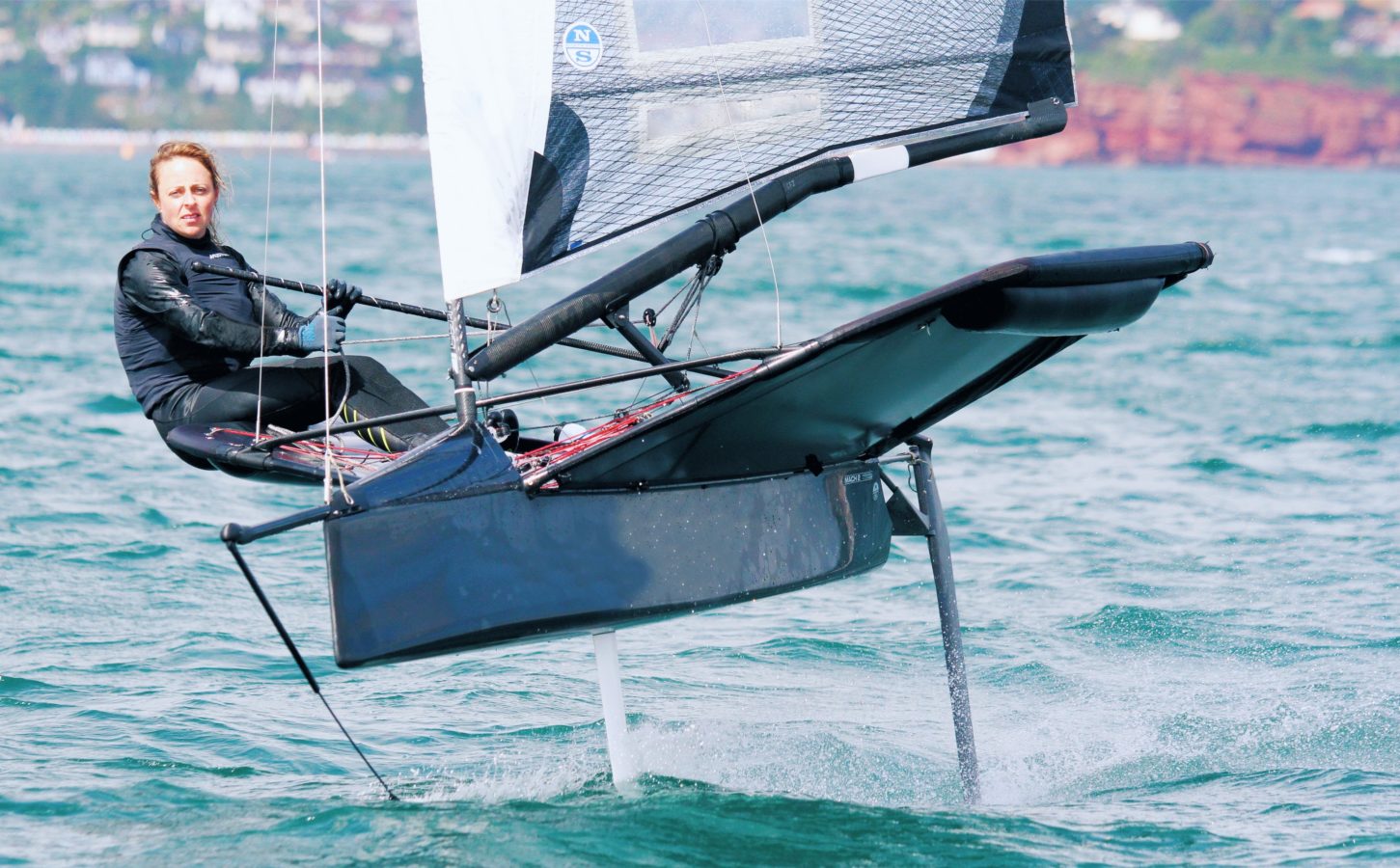
JOSIE GLIDDON: ACCOUNTING
JOSIE GLIDDON: ACCOUNTING
Women Who Play Key Roles Within The Leading Sailmaking Brand
© Mark Jardin
Josie Gliddon is Global Finance Transformation Lead at North Sails, based in Gosport, UK. Day to day, you can find her making sure our numbers can be reconciled. After work and on the weekends, you’ll find her on the water.
How did she start sailing? At eight, Josie went to sailing camp with her sister and got hooked. Her dad bought her a wooden Optimist, which she named Snoopy.
Her parents had a Norfolk Dinghy, but racing as a family was nothing compared to the independence of sailing an Opti down the river with friends, playing pirates and having a great time. Josie she will compete at the J/70 Worlds this year. She will also be racing the Fastnet on a J/122, her second year with the team; she is hoping to be navigator again because she enjoys that role.
“You feel like a complete beginner again, and foiling tacks are difficult. Being able to make it around the racecourse in 25 knots of breeze is extreme.”
© Mark Jardin
“I’m not top 10 of the Moth fleet yet, but I’m fully mixing it up with the rest of the sailors. Being able to foil around the course and properly race the Moth to its full potential is the best feeling in the world.” Josie is small, so she uses a “kiddy” rig to compete against larger sailors.
Josie’s next big Moth regatta is Foiling Week in July. Last year six women registered, and Josie placed first overall in the women’s division; she also finished in the top third overall, “which is more of the win in my books because I don’t necessarily compete at a female level. I compete on the same start line like everyone else.” The boat’s developmental approach gives plenty of opportunities for women to be competitive once they get the technique down.
© Martina Orsini
Josie gets out in her Moth as much as she possibly can. Her husband Paul also races Moths, so she is grateful to have his support and time with a good teacher.
“He’s a bit of an adrenaline junkie, so he likes his mountain bike, windsurfing, and he loves the Moth. It’s great. We can go sailing after work, and we can also go sailing at weekends and spend much time all week together.”
Since accounting jobs never disclose the company in the job specifications, Josie says;
“Try and find a company that you’re passionate about is almost unheard of. I just happened to be in the right place at the right time, and someone rung me up and said, “Are you looking for a job?” This was my dream job.”
Asked what she likes about working for North Sails, she said she enjoys the challenge. “Yes it is hard sometimes but everybody’s really passionate about doing the right thing. Whether it’s the Design team, Sales, Manufacturing or us in Finance, we’re all trying to do our very best, and that doesn’t exist in many companies that I’ve worked for in the past. I believe in the brand. I believe in the company. I want the business to grow. That’s why I like working here.
“Everybody’s passionate about doing the right thing,” she says. “Whether it be the design team or the sales team or the manufacturing team or us in finance, we’re all trying to do our very best, and that doesn’t exist in many companies that I’ve worked for in the past. I believe in the brand. I believe in the company. I want the business to grow. That’s why I like working here.”
Josie , top female at 2018 Moth Europeans © Martina Orsini
Josie enjoys her job for many reasons and enjoys working to help get more women into the sport of sailing. Knowing she has many sailmakers to choose from when she goes out on the water, she sticks to North because “The results speak for themselves. The thing which stands out for me from a client perspective is that there’s this element that North Sails gives that perhaps isn’t the physical, tangible thing that you buy. What you’re buying are these added intangible services. North provides expertise across the board. The services teams go beyond to assist clients globally, as well as North’s designers and experts, who are also excellent sailors and spend time on the water to create the best possible products. You can’t put a price on that, and that’s what sets North apart from the many other sailmakers.”
Juggling her day to day job and her passion?
“The answer is I work hard to play hard,” says Josie. I immerse myself in everything I do. I’ve always had this philosophy that if you have two passions that both inspire you, it makes you more efficient at both.”
When Josie isn’t at work or on the water, she’s staying fit. She works out five days a week, with her Spotify playlist as her gym buddy. Other than her goals of staying fit and keeping her head in the game both in the office and on the water, her goals for this sailing season other than to be top female finisher are to break into the top 20 at Foiling Week, Top 20 at J/70 Worlds, and to complete the Fastnet.
We are excited to see what her 2019 season brings, and we’ll keep an eye out for her on the starting line, where she is known to take an occasional port-tack flyer.
📽️ Day Three of Moth Worlds in 2017, Josie races in from the port end of the line in big breeze. Go Josie!
READ MORE
READ MORE
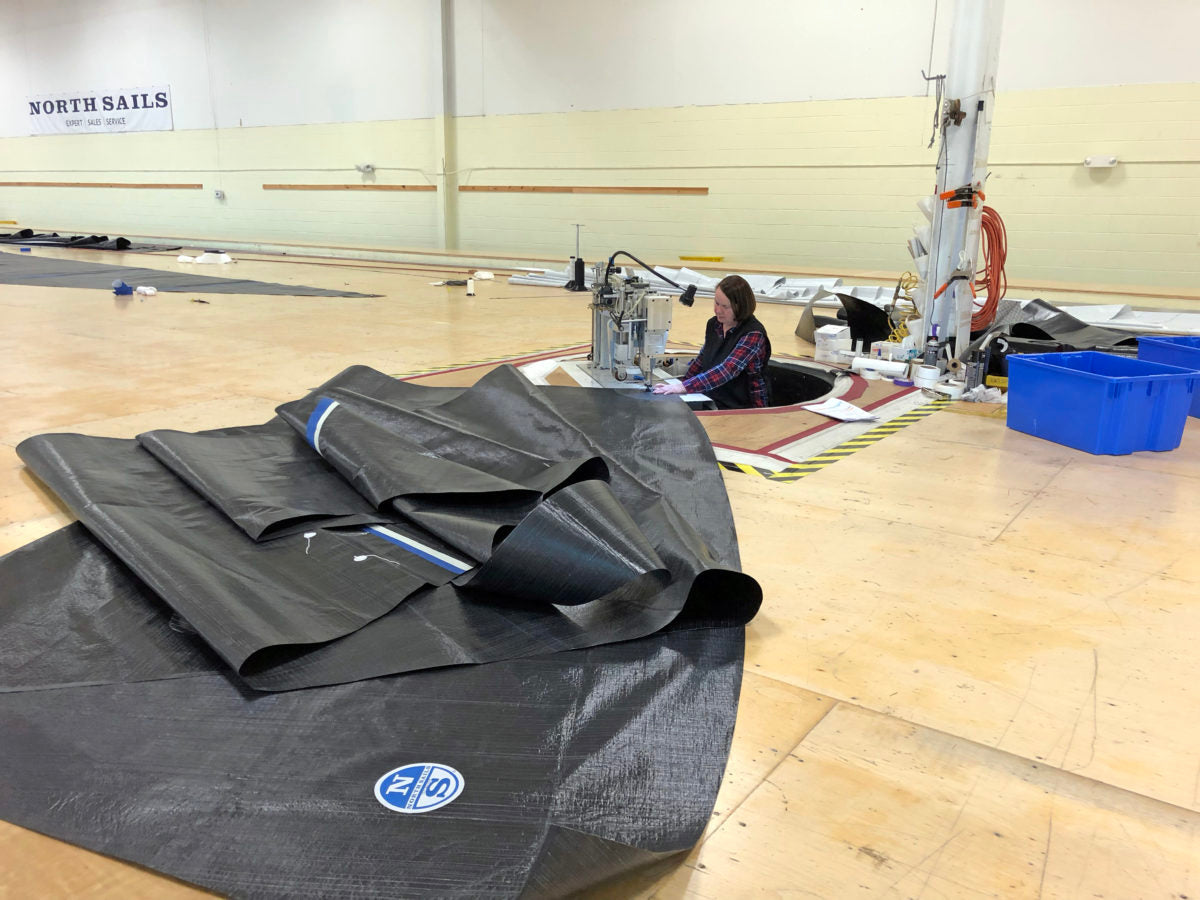
POLISH TRIFECTA OF TRADES: SAILMAKERS
POLISH TRIFECTA OF TRADES: SAILMAKERS
Women Who Play Key Roles Within The Leading Sailmaking Brand
At one of two North Sails production sites in the United States, three female sailmakers are devoting their highly trained eyes to building the best products for our clients. Regina, Margaret, and Basha all moved from Poland to Milford, CT to raise their children and make a career out of their lifelong love of sewing. Thirty-plus years later, they continue to form a “Polish trifecta of trades,” specializing in prefabrication, finishing, and assembly. They’ve even helped with larger projects like the Volvo Ocean Race and the America’s Cup.
“The expertise that Regina, Margaret, and Basha bring to our company is enormous,” says Steve Gruver, Floor Supervisor. “They are outstanding employees and a delight to work with. They enjoy working hard and do an excellent job with any project they are assigned. Whether it’s prefabrication or in the pits perfecting larger-scale projects, we can trust they will go above and beyond. We are very lucky to have them here- part of our Milford family.”
-Steve Gruver, Floor Supervisor
Regina Golimsek was the first to start working at North Sails in 1980. Trained to make clothing, she says at first that sailmaking was a lot harder. “The material is much stiffer, not like a dress. My first time I couldn’t sew in a straight line, and I almost quit! They told me to take my time, and I’d get used to working with the materials. They were right; I’m still here.” 2019 marks her 38th year at North Sails.
Another challenge was learning the sailing language to understand what each project required. “At our old facility in Stratford, I remember having to work with a furling sail and we had half of it inside, and the rest went out the door, where we tied it to the van to pull it tight. There we could get it furled up, and I could see how it worked. It was interesting to see the finished product, how it worked, how it should look, and also very funny to see everyone looking at us like we were crazy.”
Since the larger loft as built, there’s enough space to work inside. “Having more space to be able to take on the larger scale projects was what everyone was excited about. Providing the right tools allowed our staff to be the best it could be.”
Today you’ll find Regina in prefabrication, where she collects the correct parts for each sail— choosing rings, tapes, cords, cutting reinforcements for headboards, clews, batten pockets, snaps, and covers. She takes pride to make sure every box is checked, and each tack, clew, and headboard has the correct fittings and proper reinforcements.
“I like this job because it allows me to use my brain. Creating something, making things fit together; I get to figure out how to do it and make it perfect.”
Margaret Skakacz also left Poland to raise her family and start her career. “Raising a child and balancing work is hard. Childcare is not affordable. North Sails made it possible for me to work and take care of my children, and I’ve been very successful because of it.”
Before moving from Poland in the early ’80s, she attended school for physical therapy and prosthetics. Though her hobby was sewing and making clothing, she never thought she would make sails. 31 years later, she’s the leader in Quality Control at the Milford loft. “I make sure everything is right before it leaves the building,” she says. “I check every detail, make sure each sail has exactly what was requested. I make sure it looks good. It’s satisfying. Seeing a project through from start to finish is what I like the most. I can say ‘I did that’ and it looks good—like, America’s Cup good.”
Margaret gained a more technical understanding of sailmaking when she spent three years helping build 3DL string sails in Minden, Nevada. She worked alongside mentors like Jeff and Dan Neri to develop the original 3Di finishing standards. She says Mark Taylor, a North designer, was also very helpful. “To make the best sails, for certain projects they’ll bring in the best from all over the world to get the job done,”she says. Margaret also thanks Lucio Bolognani, who focuses on superyachts and specializes in hardware. “He came up with new ideas for bigger sails, which has made an impact on how we manufacture them today.”
“3D sails are much harder to work with,” said Margaret. “They come out from the factory in one piece, and are very stiff. It can be hard to work them through the machines, especially when the headboards, tacks, and clews are reinforced with webbing and much thicker. Reefs are by far the hardest since there are no sections to connect, it leaves no room for error.”
Margaret likes seaming panels the best. “Each sail order comes with a blueprint, and you see what the sail needs to look like finished. All cut into sections, and each section is numbered. How wide the seam allowance is, what thread weight to use, and what color to stitch with are all significant details. On each ticket, the details are listed in Blue Book codes, everything you’d need to know to make sails. The main goal? To make every sail look seamless.”
She also worked with PUMA in the Volvo Ocean Race and for one of Dennis Conner’s America’s Cup teams. “Margaret is one of our master sailmakers,” North Sails CEO Dan Neri says. “She has built thousands of North Sails, ranging from One Design to Superyachts, and nylon to 3Di. I had the chance to work with her for a few years in Minden. She always had a better, simpler idea.”
“What I like about this job is that it’s challenging,” Margaret says;
“New improvements processes, new designs—that’s what makes it hard but fun at the same time. We have a great crew here in Milford; we’re perfectionists. You know you’ve got a good thing going when they want America’s Cup sails made here.”
Part three of the Polish trifecta is Barbara “Basha” Balikowsky, who has been assembling sails on the North Sails floor for 30 years. “I like this job because it is always interesting,” Basha says. “There is always something to learn.”
Most of the sails that get made in Milford are custom, so no two projects are the same. The most critical part about sailmaking, explains Basha, is following directions. “Even if you think you’ve seen it before, you can’t skip it. I read the ticket two times first, always. You cannot repair a 3Di sail like you would a paneled sail. With 3D it’s all one piece—which means no mistakes.
“The North Sails logo stands for quality,” she continues, “and that’s what you get. Seeing the products from start to finish is what makes us proud to work for a company like this, and has allowed us to contribute what expertise we have. Even if it’s just sewing, we are proud of each sail that goes out the door and know our customers are getting the best sails.”
“I love this job,” she adds. “It’s like a big family. It makes it worth coming to work. I may not be able to sail, but I can run a sewing machine and make a great product for sailors. Not many sailors can do that.”
READ MORE
READ MORE
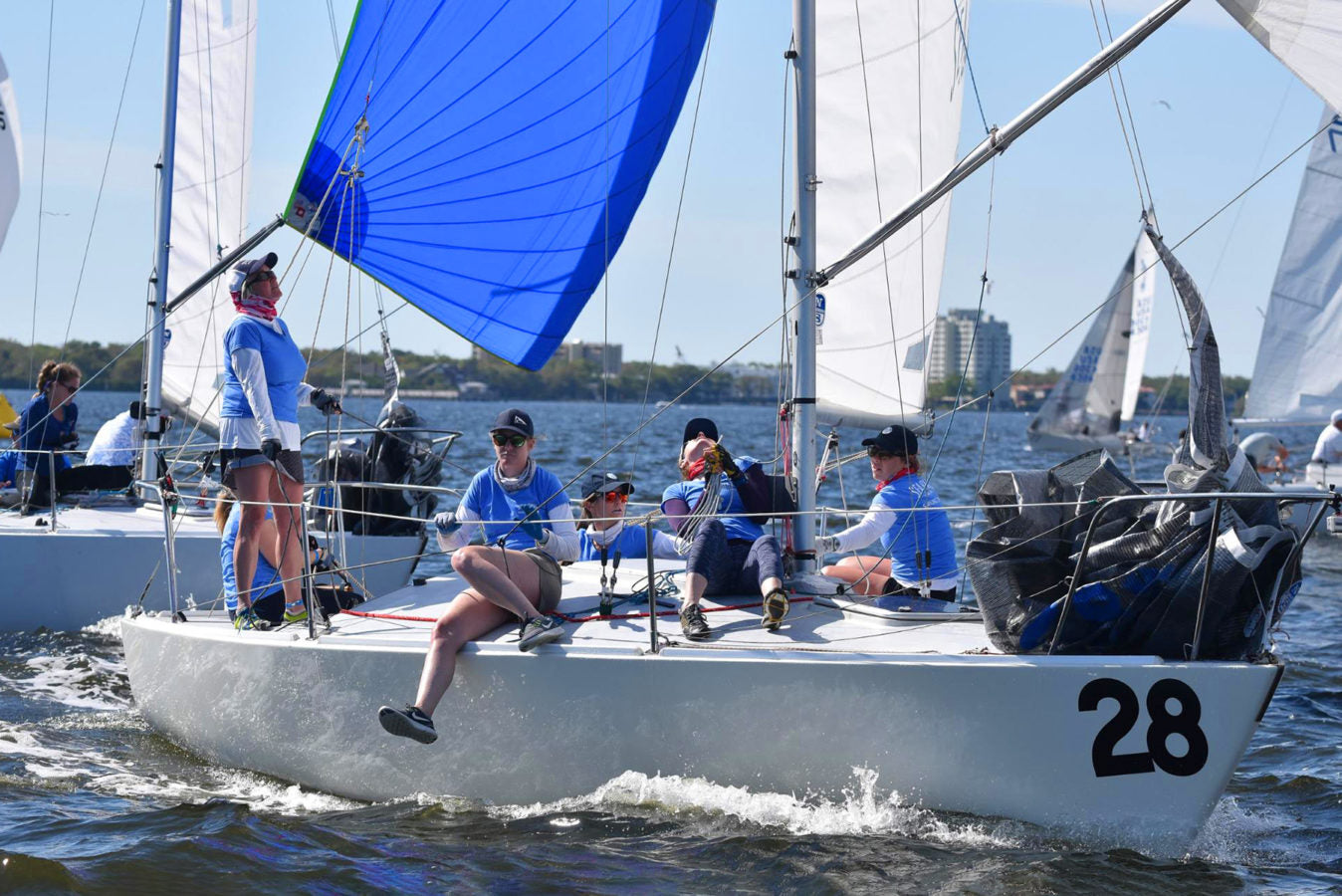
SPEED READING: TEAM BUILDING
SPEED READING: TIPS FOR TEAM BUILDING
Forming A Team Is Just Step One
For the past three years, Hillary Noble– North’s content marketing manager— has called tactics for the Women’s Seabags Sailing Team. Successfully sailing a J/24 with six women requires a strong team, both mentally and physically.
“We’ve come a long way since the 2017 Worlds,” Hillary says of the team’s first big regatta, where they won the Yaeger Women’s Trophy. “It’s been very rewarding in many ways.” Along the way, all six women have learned what it takes to be a great teammate, in order to make their next regatta more successful than the last.
“It’s so much fun to race with these amazing women!” she says. “They are powerful, and we keep getting better together—it’s a lot of fun.”
The team competes on the J/24 circuit year-round, and they are currently preparing for the 2019 World Championship in Miami, which they qualified for at the district one championships at Kittery Point Yacht Club, NH in 2018.
“It felt great to qualify on the water for this upcoming Worlds,” Hillary says. “This has opened two spots for other women’s teams to compete.”
“We are working hard this season,” she continues. “Making sure we have the right players for each event is really important. There will be plenty of opportunities to improve and we are always looking forward to the next regatta together.”
Hillary has collected five tips that form the basis for the team’s success. They apply equally well to her day job as part of the North marketing team—or to a mixed or men’s J/24 team. As Hillary points out, “We all want to win and get the most out of our experiences together.”
© Chris Howell
Hillary’s Tips for Team Building:
Focus on your individual job. Each team member can contribute to the team’s success. Many hands make things easier!
Know your team’s strengths, make a plan, communicate it early, and put your team in situations where they can shine.
Always work together towards a common goal. Any contribution by another set of eyes is valuable. If you see something, say something.
Help each other out. Any job on the boat can get difficult from time to time. Look out for your teammates and prevent them from failing.
Debrief after each race, but keep it short. Focus on the good things; admit mistakes, and learn something from your teammates. It’s all about growing together.
© Chris Howell
© Chris Howell
© Chris Howell
READ MORE
READ MORE

WOMEN OF NORTH SAILS TORONTO
MEET THE WOMEN OF NORTH SAILS TORONTO
Talented & Experienced, Our Teams Focus Is Maximizing Your Sailing
In the sailing industry we're faced with intense seasonality on the Great Lakes (compared to other areas who can sail year round) which means the season is short and the pressure to maximize results is high and a guessing game of conditions. A shorter season means most racers want to achieve the greatest results they can within the 4 or 5 month span of Summer, which is usually flagged by lack luster wind (sorry Mother Nature, it's true). Cruisers want to maximize their time on the water, enjoy the sunshine and breeze as well. Everyone's trying to maximize our short season, so our job at the Toronto loft is vital as we try to keep sailors on the water as much as possible and manage the stress of sails in for repair or delivery of new sails.
Kyann is on the floor majority of the time servicing sails while I spend most of my time upfront working on marketing and interacting with customers. Come Summer we spend more time outside the office than in, helping customers install sails, picking up sails or delivering them, measuring boats or doing sea trials. Last year at the 2018 Susan Hood Trophy Race, we installed a new mainsail on a Perry 57 - with hardware - hours before the skipper meeting and start of the race. Not something you see everyday - both the install or the two women doing it. Not something of the norm yet in the community (yet) which results in a little bit of surprise when we are seen coming down the dock with battens or sails.
It is a great feeling when someone asks who they should talk to for a quote or a new sail and you respond by saying they can talk to you. You can quote them - then delve into questions about what they're looking for, what type of sailing they do and what the best options are for them and the technology in the sails. This feeling continues when delivering sails; most people are pretty surprised to see a young female lugging sails down the dock or up a mast fixing things. To say we're used to it would be an understatement however we enjoy surprising customers and helping with all aspects of sailing + sailmaking.
While sailing has historically been a male dominated industry, there are a great numbers of female sailors and athletes who can a) sail and b) help customers with their sailing needs, especially at a company like North Sails. Kyann and I both have the experience. Kyann has been sailing since she was 11 years old, starting in junior sail at Etobicoke Yacht Club, working here way up to racing by the age of 13. She's also raced down south on Open 60's in places like Malta and Antigua while also sailing 8 Metre's, Shark's, Beneteau's and Soto 40. I have nine years in the marine industry with lots of experience in event coverage, management and support for sailors. I've also sailed Beneteau's and J/Boats, growing up sailing a Beneteau 36.7. It's a wonderful thing to work for a company that recognises this experience and work ethic; aiding in the continued growth of our skills and knowledge.
Beyond our office, athletes like Sally Barkow, Marie Riou and Carolijn Brouwer are competing in the Volvo Ocean Race, America's Cup and World Match Racing Tour. Riou is the only sailor competing in the Sail GP event with the French Sail GP team while Brouwer is looking to be the first female skipper in the America's Cup and Barkow is trying out for Stars + Stripes Team USA. Additionally, we’ve seen teams like Team SCA from the 2014/2015 Volvo Ocean Race to Team Magenta 32 who competed in the World Match Racing Tour have helped change the stage for women in professionally yachting.
We're both fortunate to work for a company that supports women in sailing and the marine industry as a whole. North Sails has welcomed our enthusiasm and supported our drive to get out on the water more, supporting customers as much as we can. We love the industry that we both never thought we'd ever be working in and it's fantastic to witness the growth over the last couple of years for female sailors. Kyann and I are both looking forward to the season ahead with our North Sails team and customers.
Happy International Women’s Day to all!
Check out more leading ladies changing the tides in sailing.
READ MORE
READ MORE
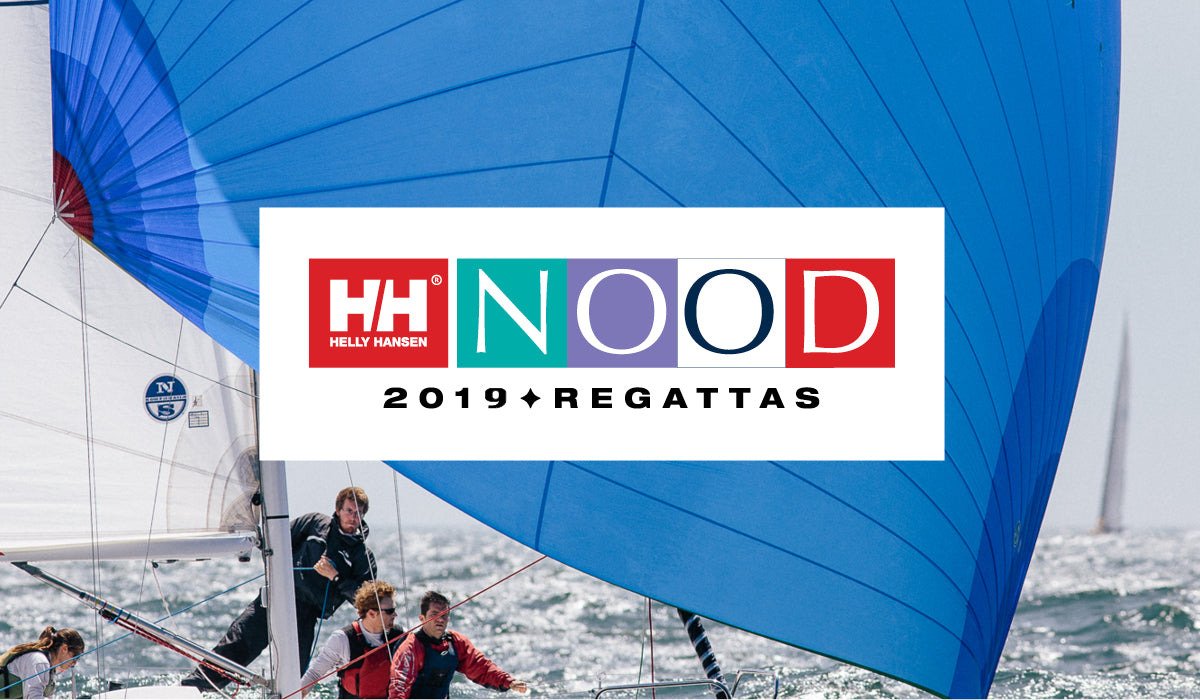
HELLY HANSEN NOOD REGATTA IN SAN DIEGO
HELLY HANSEN NOOD REGATTA SAN DIEGO
The Kick Start To The Season | March 15 - 17
The Helly Hansen NOOD Regatta is coming to San Diego March 15 - 17, and our San Diego and Long Beach teams will be there for all your sailing needs. Local experts will be on hand during the regatta for any sail care issues you have and our overnight regatta repair will ensure you're back on the racecourse without any worries.
Overnight Repair
It's the last thing you want to deal with after a day of racing, so let us. Our Certified Service experts will be on shore for you after each race day to collect sails for overnight repair. The North Sails van will be at CYC after racing on Friday and at SDYC on Saturday. You can pick up your sails at 8am on Saturday and Sunday at SDYC. If you have any questions, contact Bobby Richards: 619-846-3967
Dock Talks
North Sails experts, Eric Doyle, Brian Janney and Chris Snow will be holding a series of dock talks, focusing on the immediate feedback from the race course. Look out for the North flag and crew and join your class dock talk to work on how you can improve, or keep on doing it right, for the next race day.
Friday March 15 | Coronado Yacht Club
J/70 with Chris Snow
RS21 with Brian Janney
Viper with Jay Golison
Saturday March 16 | Corondao & San Diego Yacht Club
Etchells with Eric Doyle
RS21 with Brian Janney
North Sails Rally Race
Back for its 5 edition, the North Sails Rally Race is the perfect event for all types of cruisers. Rally racers are able to get all the benefits of a regatta with one day of racing. To top the day off, the NOOD after party at SDYC is the place to be for the Rally Race prize giving. Make sure you attend and claim your award and spot on the podium.
READ MORE
READ MORE
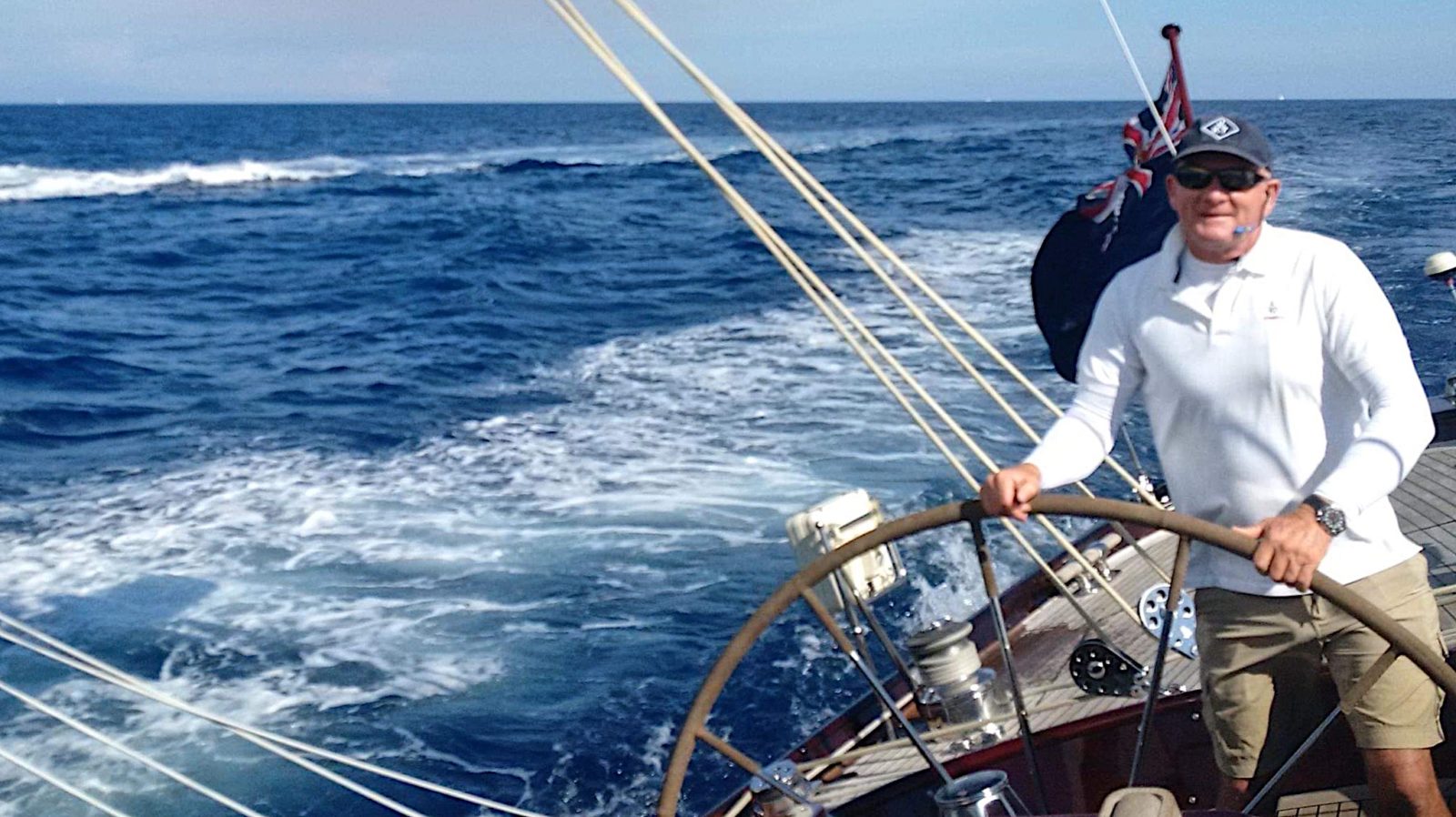
TOM DODSON RETURNS TO NORTH SAILS
TOM DODSON RETURNS TO NORTH SAILS
Kiwi Sailing Legend A Key Hire For Supporting Superyacht Clients
Following a long career in sailing spanning two Olympic Games, numerous America’s Cup cycles and everything in between, native Kiwi Tom Dodson has rejoined North Sails as a Sales Expert with a particular focus on the vibrant superyacht segment. Based out of New Zealand, Dodson will bring his knowledge and expertise to an already impressive team and will work with superyacht owners and crews around the world including regattas in the Caribbean and Mediterranean, ahead of the expected influx to the Pacific in time for the 2021 America’s Cup in Auckland.
Having first joined North Sails New Zealand as Managing Partner back in 1986, he left to join Team New Zealand in 1998 then joined Southern Spars as President in 2004. The well-known sailor has retained his connection with North Sails over his years as a professional in the sport, and now brings his wealth of experience back to the company to help to continue to grow the highly successful superyacht sails part of the business.
“In some ways, I never really left,” Dodson says. “I’ve always supported the company, its products, and people. The North team has been doing a great job, but what we see in the next few years is that there is going to be a lot more traffic coming down to New Zealand around the America’s Cup, and definitely lots more superyacht activity in the region. Through sailing on boats like Velsheda and Silvertip I have kept up with the latest products and what’s happening in these fleets and I am really looking forward to working with the team at North Sails on how we can help clients have the very best sails for whatever sailing they want to do.”
Ken Read, President of North Sails, commented: “We have an unrivaled breadth and depth of talent here at North Sails, from designers and materials experts through to sailors and our sales team. Tom Dodson is a consummate and seasoned professional, who ever since he first joined the company in the 1980s has remained part of the wider North Sails family. As a business we have focused on building for the future and investing in technology and innovation so that we stay at the very forefront of the industry but we have also invested in our people, and Tom Dodson coming back to join us is testament to this long term relationship we have with the people that work with us.”
Jens Christensen, North Sails superyacht segment leader, said: “We are pushing boundaries in the superyacht industry, leading the way with new products and striving for the ultimate customer service experience. But we can only deliver the type of world-class service to complement the hardware if we have the best people working for us. We pride ourselves on making sure that we understand the individual needs of all types of boats and sailors, and are able to support them across the world with continuity and consistency of product offering and maintenance. We are delighted that Tom joins us to help us continue our work at our superyacht centers of excellence around the world, showcasing the best of the best talent in the superyacht industry.”
READ MORE
READ MORE
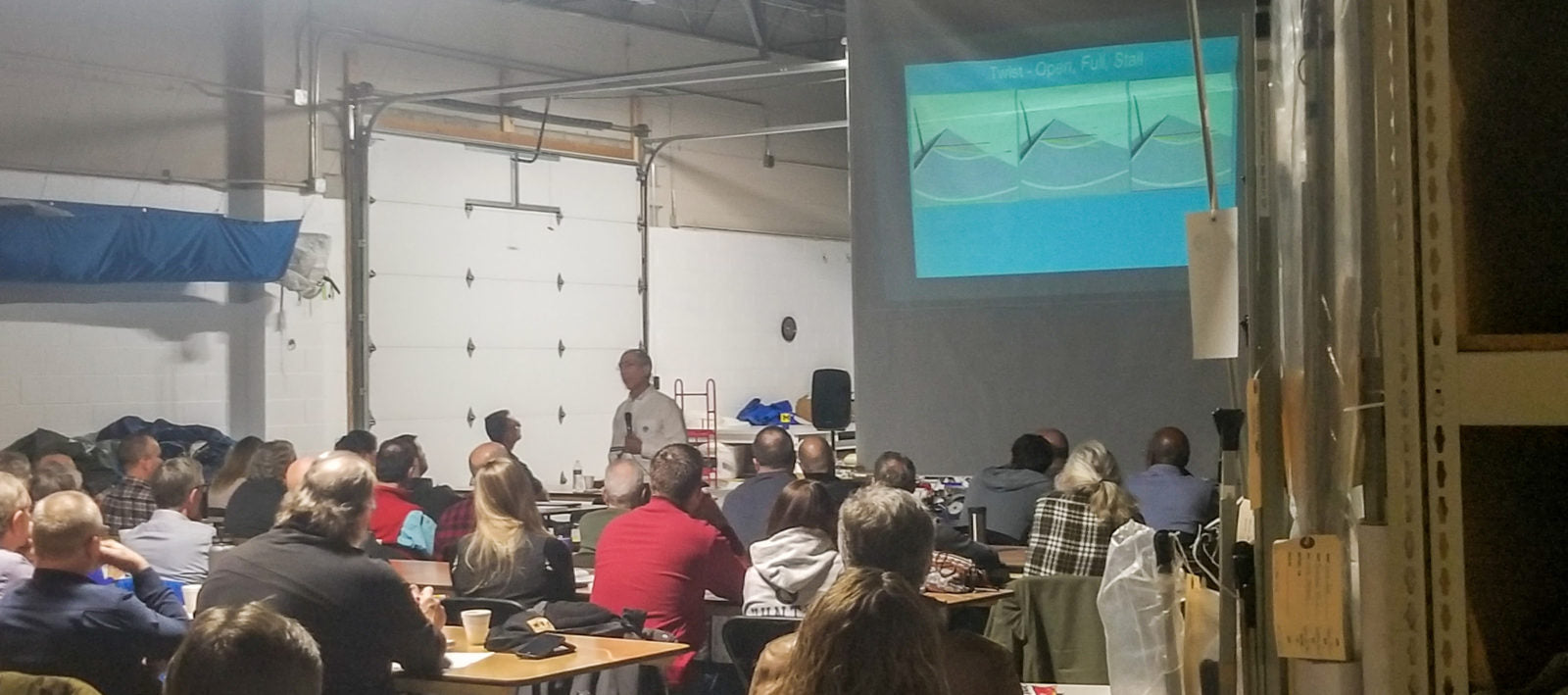
NORTH U AT NORTH SAILS DETROIT
NORTH U AT NORTH SAILS DETROIT
North U Expert Bill Gladstone Stop By To Discuss Sail Trim And Boat Speed
We had 54 people (near capacity of 60) attend North U's full day Seminar Feb. 23rd on sail trim and boat speed. This on the heels of the 110 people that attended the January Thursday Evening Seminar covering tactics and trim. Everyone who attend the Full Day Seminar seemed to enjoy it. How can you not, Bill Gladstone is an excellent speaker!
The local loft provided coffee, water, soda and snacks throughout the day. We even had beer out during the last break. This was not included in the price of the seminar. We did have a donation can out to benefit DRYA Jr Sailing. Karl Kuspa, loft manager, personally committed to match dollar for dollar for the first $150. We raised $120. At the next seminar we will be asking for donations to benefit the Bayview Mackinac Foundation.
The next free seminar is March 14th, from 7-9pm covering Mackinac Race Strategy, weather and routing. This is event will be at Bayview Yacht Club. Please RSVP to Detroit Office Manager, Chelsie Strong at chelsie.strong@northsails.com.
READ MORE
READ MORE
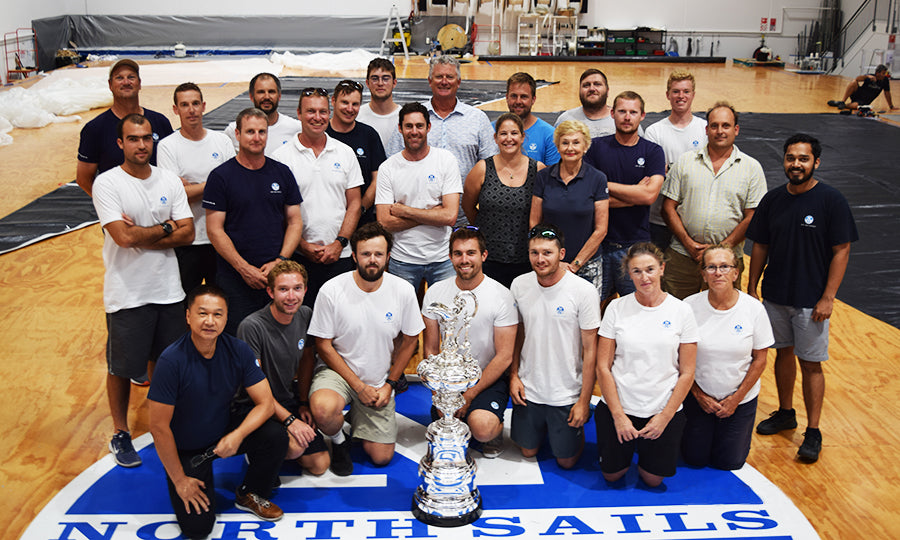
SPECIAL VISIT AT NORTH SAILS IN AUCKLAND
SPECIAL VISIT AT NORTH SAILS LOFT
A thank you from Emirates Team New Zealand, to welcome North aboard on their journey toward the 2021 America’s Cup.
Not everyone gets to touch the America’s Cup — but the lucky team at North Sails’ Auckland loft recently had the privilege, where the historic trophy came and paid a visit.
A group from Emirates Team New Zealand, including the Cup’s own personal ‘bodyguard’, brought the silverware from its home at Auckland’s Royal New Zealand Yacht Squadron to the Glenfield loft, where the staff were able to hold and be photographed with it.
The special visit was a thank you from Emirates Team New Zealand, to welcome North aboard on their journey toward the 2021 America’s Cup. North Sails is the international supplier of choice for not only Team New Zealand but also the Luna Rossa Challenge, Stars & Stripes Team USA and INEOS Team UK.
Blanks for the new sails will be made at the specialist North Sails three-dimensional moulding loft in Minden, Nevada, and finished and detailed to Team New Zealand’s specifications in Auckland. The North Sails Auckland team will work closely with Rob Salthouse from Emirates Team New Zealand, himself a former sailmaker with years of experience in Cup competition.
The Cup made its trip over the Auckland Harbour Bridge in a case specially designed and built by North Sails, from 3Di fabric, for its journey to London jewellers House of Garrard for a check-up last year.
The 2021 event is seeing a return to the use of more ‘traditional’ sails than the hard wingsails used in Bermuda and San Francisco, but the new America’s Cup 75 foiling monohulls will still break new ground with their innovative ‘softwing’ double-skinned mainsails. Long-time North Sails designer Burns Fallow, who is currently embedded with Emirates Team New Zealand, was a key member of the team developing the AC 75 class rule and was instrumental in developing the new softwing system.
The North Sails team has a busy few months ahead, with the first new Cup boat to be launched in late winter.
"It was a great chance for our team to get to see the 'Holy Grail' and to really show them why we do this," says North sales and marketing manager Andrew Wills, who got his own 'selfie' with the silverware. "We are very proud to be part of the campaign — it’s going to be an exciting few years coming up."
READ MORE
READ MORE
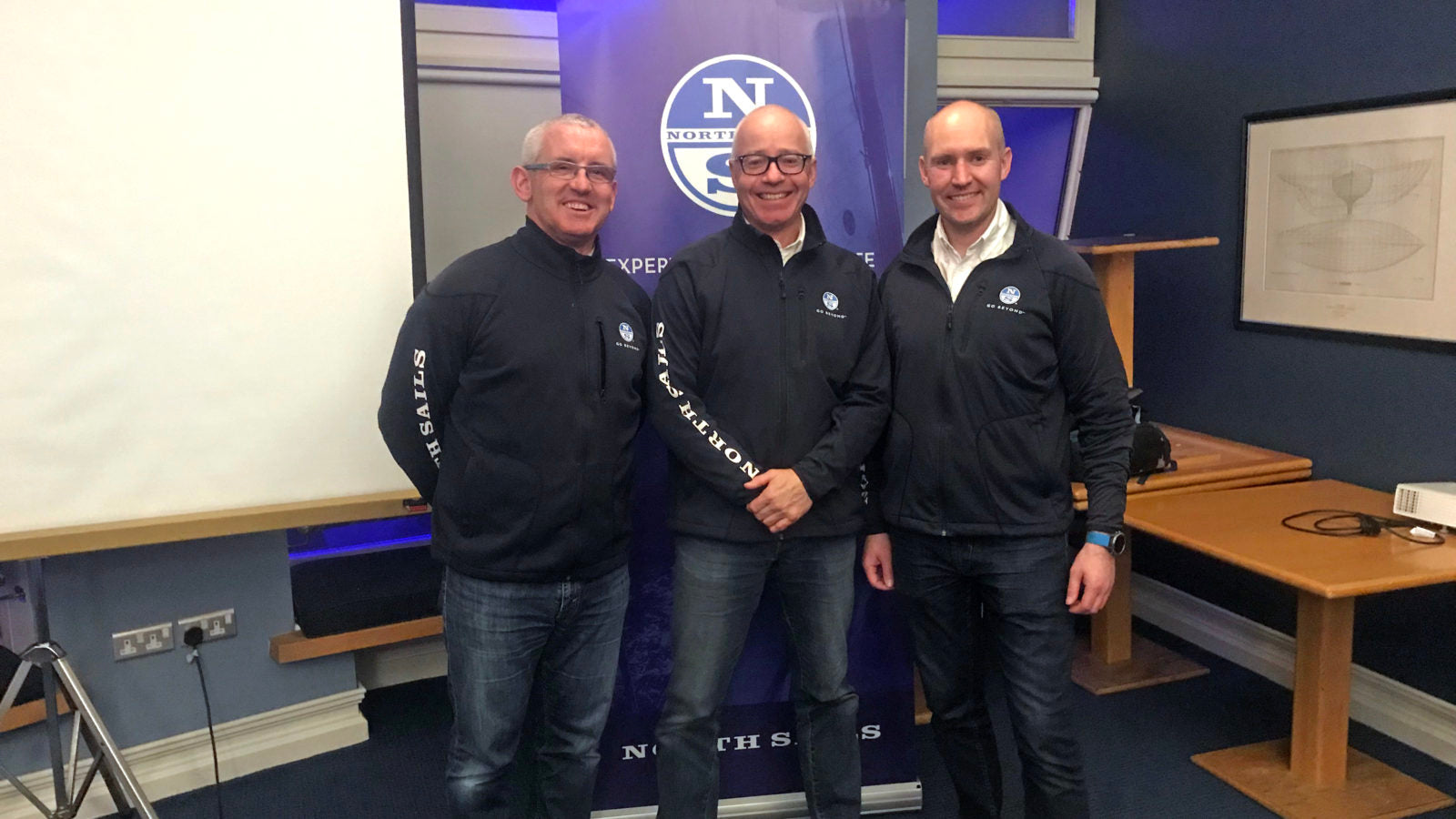
NORTH SAILS TRIM SEMINAR AT HOWTH YACHT CLUB
NORTH SAILS TRIM SEMINAR AT HOWTH YACHT CLUB
Training Provided By Your Local Experts
North Sails Ireland had the pleasure of presenting their latest sail trim seminar at Howth YC last night for its members and guests. I counted over seventy people in the audience and my colleague Maurice "Prof" O'Connell took the lead backed up by Shane Hughes the newest member of the North Sails Team here in Ireland.
Both Maurice and Shane as well as being top level sailors are exceptional coaches both on and off the water. Not only do they know their subject inside out they have a really nice way of presenting that makes the complicated subject of sail trim understandable for expert and beginner alike.
One of the big features of the latest talk is the use of North Sails Trim simulator. Please take a look at the link to download your own copy to experiment with at home: North Sails Trim Simulator
This fantastic training tool was developed by Bill Gladstone and his Team at North U, the training and teaching arm of North sails. The simulator uses real information from the North Sails Design Suite to produce a really accurate presentation of the real changes to sail shapes when you make a change to the set up. You get to view the changes from on board and off the boat all in the comfort of your own home without getting your feet wet!
The North Sails Roadshow has been all over the country during the last few weeks and Prof is in action again this weekend in The Royal St George YC Saturday, March 2nd at 12pm. Then we are off to the East Antrim Boat Club on the following Wednesday, March 6th.
"Keep an eye out for a North Sails Talk near you! Sail Fast and have fun!"
-Nigel Young, North Sails Ireland
READ MORE
READ MORE
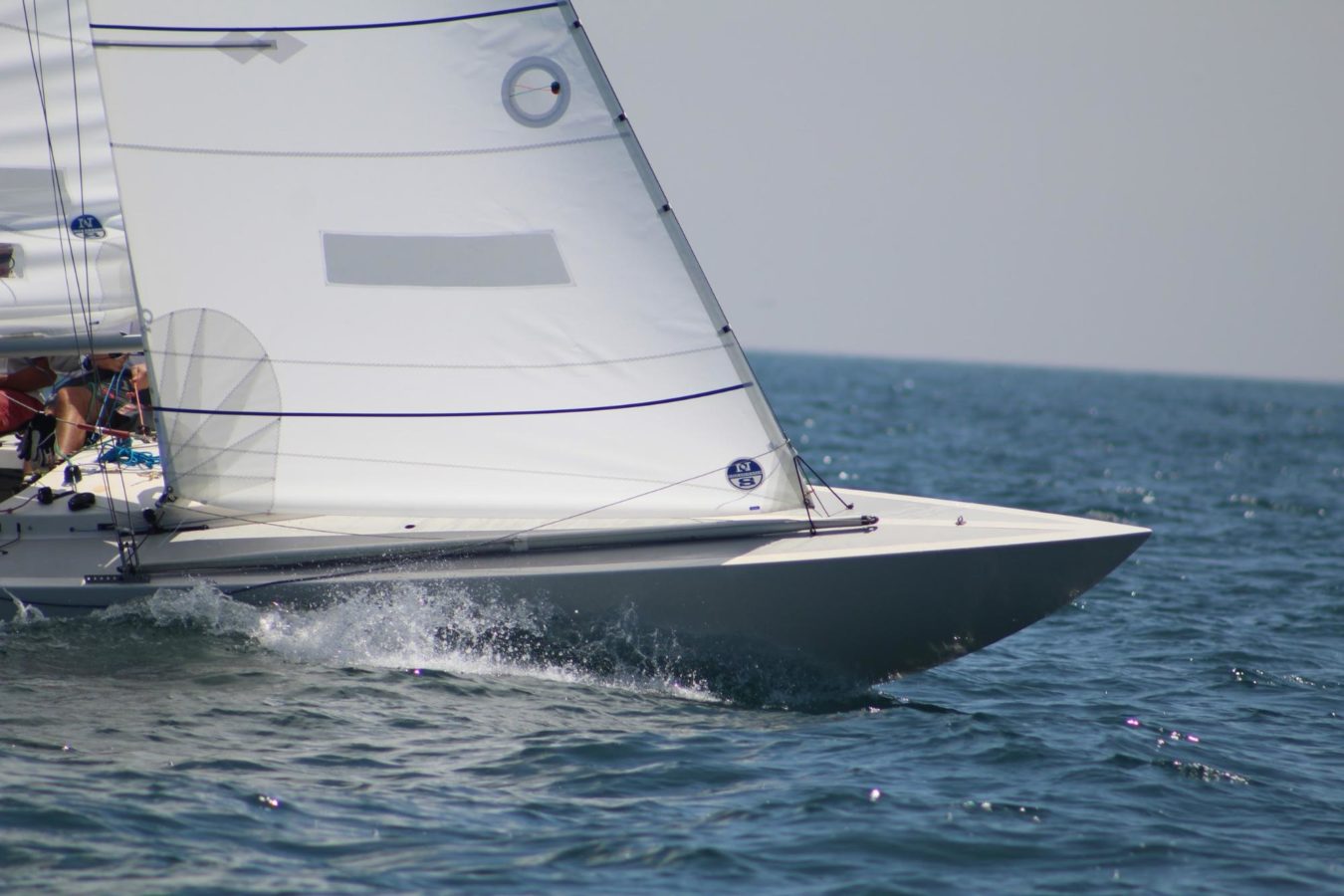
SPEED READING: ETCHELLS MAST LEVER
SPEED READING: ETCHELLS MAST LEVER
Tips From Expert Andrew “Dog” Palfrey
The Etchells is one of the most competitive and prestigious one-design classes in the World. Sailors have been challenged to find the boat’s extra speed for over fifty years. We had a chance to interview two-time Etchells World Champion Andrew “Dog” Palfrey, the developer of the popular Mast Lever System.
Dog, thank you for all your great contributions to the Etchells class. Compared to a few years ago, the boat sure seems easier and more fun to sail. Being able to make some very simple, but substantial adjustments easily makes the boat easier to sail fast across the wind range.
Many thanks for the nice comments and also for the opportunity to help spread the good word to our fellow Etchells sailors. It is gratifying for me to go to Etchells events and see almost universal take-up of the Lever system. As you mention, it does make life easier for the teams to extract best performance from the aero package.
Focusing specifically on the use of the mast lever, in simple terms: What is the correct move with the lever and the mast at the deck as you go from light to moderate breeze to stronger breeze during a race?
Along with the sheets, the traveller and backstay, the mast lever control is a primary control in helping to get the best from the mast and sails.
The most challenging thing about the Etchells mast and rigging geometry, is that we lack direct control of the headstay (via runners). Also, we can only declare one mainsail and two jibs for the big events, so the ability to power-up and de-power both sails is fundamental to extracting the best performance from an Etchells across the wind-ranges and sea-states we sail in.
I primarily consider the lever system to be a tool that either stiffens or softens the bottom two-thirds of the mast. In basic terms, we want to stiffen the mast in heavy airs and soften in lighter airs. So, to answer your question, on a day where the breeze is strengthening, we would progressively move the mast (via the lever) aft at the deck – thus stiffening the lower two-thirds of the rig.
We need to remember that the effectiveness of the lever is limited by the position of the mast, relative to the mast partner hole (in the fore-aft plane). Headstay length and mast-step position are the variables here.
“In an ideal world, we are always going upwind with the mast all the way back in the partners hole. Why? This gives us the ability for the mast tip be as far forward as possible on the downwind leg. We know this to be fast in all but very windy conditions.”
If we are sailing upwind before the start, and the perfect position sees a gap between the trailing edge of the mast and the back of the mast partners hole, I will consider going aft on the step or lengthening the headstay to close that gap. However, if the forecast is for the wind to increase, I will make sure there is a gap there. This way we have the ability to effectively stiffen the mast by pushing the mast back with the lever. So, having the step a little further forward and/or the headstay length a little shorter than perfect is good insurance in a building breeze.
© Onne Van der Wal
As you either move the lever back or let it forward, what changes are happening to the headstay sag and lower mast bend?
Really good question. In basic terms, moving the lever alters where the maximum bend is allowed to happen vertically in the mast, with the application of backstay and/or mainsheet load.
Simply put, if the lever is pushing the mast aft at the deck, the bend will occur higher up the mast (and vice versa).The effect of a stiffer lower section of the mast also sees the headstay become firmer with the application of backstay and/or mainsheet.
When looking for power, we are generally looking to induce headstay sag. So we allow the mast to bend below the hounds (this also helps the mainsail shape in light airs). The lever will either be pulling the rig forward at the deck (creating pre-bend), or in a neutral position. The mainsail is designed so that minimal backstay is required in lighter winds. Sometimes we are looking to sag the headstay more without changing the mainsail shape at all. This is possible with subtle changes of the lever, backstay and mainsail changes together.
When it is windy and we are looking to de-power, we are generally looking for a firm headstay. This generally means stiffening the mast below the hounds, so the effect of backstay and mainsheet more directly tightens the headstay.
“When I look around the fleet when I’m sailing or coaching, the biggest variances I see are in headstay sag. When I am sailing, I find the hardest thing to set up accurately is the headstay sag. This is because it is not easy to see and replicate and there is no way to accurately reference the sag directly with a mark. But it is one of the key drivers in extracting best performance out of an Etchells.”
I look closely at the entry angle of the jib. If it is very fine, we probably need more sag. Likewise, if it very blunt, I will either ease more jib cunningham or look to remove some headstay sag with the application of mast lever and a little backstay. I also carefully observe the dynamic behavior of the headstay. If it’s windy and wavy and the headstay is moving around a lot, I will prioritize firming it up with more aft lever, tighter backstay and mainsheet.
Is there ever a condition where you leave the lever uncleated? Just allowing the mast to float in the partners?
Never. Allowing the mast to move, or “pump” over every wave will be constantly changing the shape of both sails in a subtle, but counter-productive way. However, in light to medium winds, I do like to know where neutral is.
In our tune-up, I will ease both the forward and aft control lines and observe where the mast is happy sitting. That tells me where the step is positioned relative to the gate and helps me make decisions on whether I should think about moving the step or the headstay length. But then I will cleat the lever controls off again.
Regarding the boat hardware: In 2014, when I first set up the lever in an Etchells, there were lines on both the forward and aft controls. But for the past three years I have set up the forward puller with shock-cord, so that is automatic. The advantage of this is that you only have to deal with one control line (the aft puller). I set the shock cord system up with a cleat, so I can disengage it in heavy air (when it is not required). I also disengage it when checking where neutral is. The disadvantage is more weight, as you do need heavy shock-cord to offset any “pumping” and a 6:1 system. But I think the weight is worth it. Being able to adjust the important controls easily (and from the windward rail) is key.
Is there a good rule of thumb that can be used for how much “gap” behind the mast to start with? Say at the dock with light tension (10 the the Loos gauge) on the headstay and the mast floating?
Yes. As I mentioned above, one of the hardest things to accurately quantify is headstay sag. So any tools that help me replicate fast settings are valuable. The “gap” you mention is one of those tools.
On my personal tuning guide, I have the shroud calibration numbers to suit the North Sails tuning guide tensions. But I also have a column for the “gap”. It’s really important, as it is a key indicator of exactly how the mast will behave in the fore-aft plane when sailing upwind and down.
When on the dock, I will set the backstay up so it pulls the headstay firm. Making sure the lever controls are uncleated, I then apply more backstay and watch the mast at the partners. When it moves forward slightly (the mast starts to bend), I stop pulling the backstay and then ease a small amount so that the mast moves back to its neutral position. This is approximately 10 on the Loos Gauge, but I find this method is better than measuring the headstay with the Loos Gauge (as they are inherently unreliable at low loads).
I then look at (and measure) the gap. I also check shroud tension and headstay length at this time.
In light airs, I am looking for no gap at all – even to the point where the mast is hard against the aft edge of the mast gate and bending around it by a factor of 5 or so mm.
In heavy airs I like the gap to be around 20mm, or 3/4’s of an inch.
The gap is controlled by both the step position and headstay length. Personally, I adjust both step and headstay. But there are many ways to skin the same cat. John Bertrand rarely changes his headstay length and does more adjustment on the step.
I would say the most important thing is to develop your own boat’s tuning guide. When racing, make sure you know where you are relative to that. So, if conditions change, or you are lacking speed or height (or have too much – or not enough power), you are best armed to make high percentage decisions on what to change.
“Keep in mind that the sails are a living organism. As they age, they do grow a little. This generally means they become a little deeper and a little rounder in the aft sections. This may not be a negative thing in lighter winds and a bumpy sea. When you add a new sail to the boat, be prepared to exercise some flexibility to your setup to achieve the same effect.”
We are engaged in a wonderful game that is both complex and yet quite simple at the same time. Our sport rewards experience, so don’t be afraid of trying things. But try to keep a record of what works and what doesn’t. Above all, don’t stop asking questions!
Andrew sailing with John Bertrand
Andrew “Dog” Palfrey is a two-time Etchells World Champion, professional sailor and America’s Cup coach. Follow Dog’s blog at www.sailing.dog
READ MORE
READ MORE
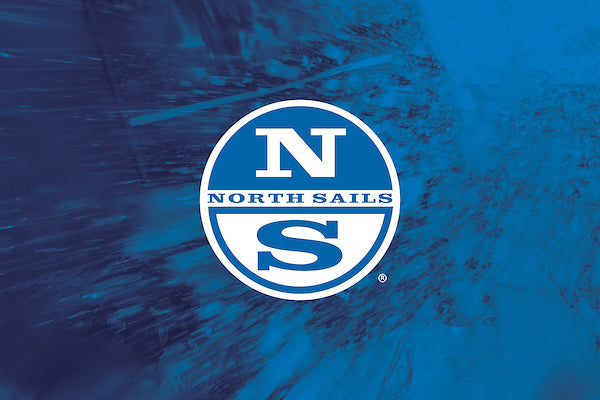
NORTH SAILS NO TORNEIO DE CARNAVAL
CARNAVAL EM VILAMOURA
A North Sails vai estar presente em Vilamoura, durante o Torneio de Carnaval.
Procurem-nos para Tips & Advices sobre a vossa North Sails e também para qualquer informação sobre as nossas velas.
Velejadores de Optimist e Snipe não percam a oportunidade de saber mais sobre as campanhas em vigor, válidas até ao dia 11 de Março de 2019!
Se não nos estiverem a encontrar podem sempre ligar, pois estamos por perto:
Vicente Pinheiro - 916 857 896
Joana Pinheiro - 916 830 166
Good Luck & Sail Fast!
READ MORE
READ MORE
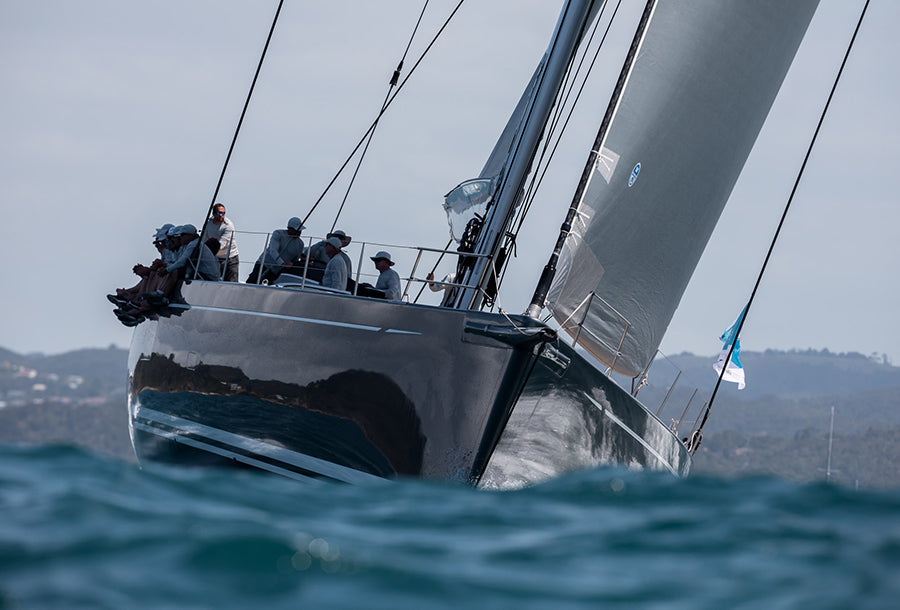
MILLENNIUM CUP 2019
EXCITING TIMES AHEAD
Five yachts enjoyed close racing throughout the three-day regatta in the Bay of Islands at this year's Millennium Cup.
📸 Jeff Brown / Breed Media
This year’s Millennium Cup superyacht regatta was just a taste of what is to come in the next few years, as momentum builds towards the 2021 America’s Cup in Auckland.
Five yachts, including stalwarts Tawera and Silvertip, enjoyed close racing throughout the three-day regatta, but they could be joined by more than 25 others as numbers grow over the next two years.
All five yachts competing this year had sails by North, and many had North Sails experts aboard. Coming out on top after five races was the Ron Holland design Tawera, which also won the event in 2016 and 2017, skippered by Mike Mahoney and with Chris Dickson as tactician. This year her main competition was provided by Swan 90 Freya, a first-time entrant in the Millennium Cup. Also competing were Silvertip, with veteran Kiwi sailors Tom Dodson and Tom Schnackenberg calling the tactics and navigating, Thalia and Sassafrass, which unfortunately had to withdraw after the first day with gear damage.
📸 Jeff Brown / Breed Media
North Sails Auckland superyacht specialist Matt Smeaton says exciting times lie ahead for the regatta and for the superyacht industry, as owners start planning a visit to New Zealand to tie in with the America’s Cup regatta and its lead-up. This was the first year the event had been run using the ORC superyacht handicapping system, to bring the regatta in line with international regattas.
"ORC is a great thing for the event," says Smeaton. "A team of handicappers came to New Zealand from Italy and sailed a race on each of the boats, to make sure the ratings were accurate, as most of the yachts competing here haven’t raced under the rule before."
Smeaton says ORC is “really going to grow the regatta”, hopefully even beyond the size it was during the 2000 America’s Cup, when 36 boats competed in the event. A motor yacht division is also going to be added.
This was also the first year the regatta was held separate from Bay of Islands Sailing Week, giving race organisers more scope to lay courses around the islands of the bay and in differing wind directions. Veteran race officer Harold Bennett was at the helm of the race committee, and on shore “the voice of New Zealand yachting”, Pete Montgomery, took on MC duties for the social events, based at Russell’s historic Duke of Marlborough hotel.
Unlike during the 2000 and 2003 America’s Cups, when the Millennium Cup event was held in Auckland, future regattas will stay based in the Bay of Islands, giving visiting owners and crews the chance to enjoy one of the world’s most beautiful sailing grounds. Smeaton says he and the North Sails team plan to work closely with superyacht owners and crews over the coming years to ensure they are getting high-quality service.
"We are already looking at the boats that are going to follow on from this and come next year," he says. "We are expecting to start seeing more people come down next season, so there will probably be double the number of boats at the Millennium Cup next year. We are really looking forward to seeing these boats coming down into the Pacific, and are going to look after them as best we can."
📸 Jeff Brown / Breed Media
READ MORE
READ MORE
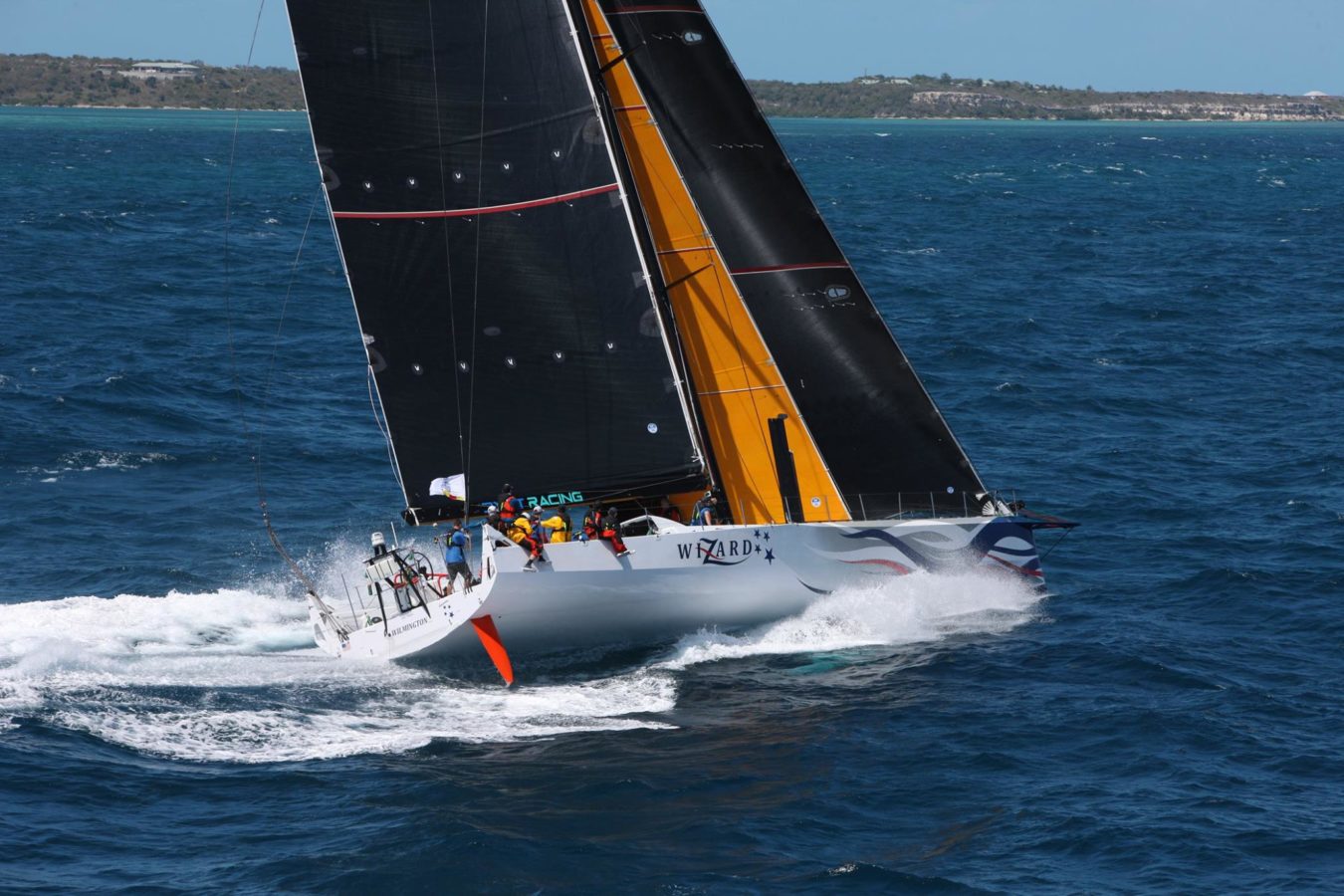
2019 CARIBBEAN 600 SCOREBOARD SUCCESS
RACE RECORDS, LINE HONOURS, AND TOP PODIUM POSITIONS
Caribbean 600 Is A Showcase of Success for North Sails Powered Entries
📸RORC / Arthur Daniel / Tim Wright
The 2019 RORC Caribbean 600 proved successful for North Sails clients, who captured top podium positions, claiming multi and monohull line honours, and setting a new race record. The 600-mile non-stop race is the Caribbean’s premier offshore ocean race and a highlight of the winter sailing season.
Peter and David Askew’s VO70 Wizard claimed monohull line honors and also the coveted RORC Caribbean 600 Trophy, scoring the best corrected time under IRC in their event debut. Skippered by two-time Volvo Ocean Race veteran Charlie Enright, Wizard was powered up and planing around the islands in what the Askew brothers agree is a great race. Starting the year with an early victory sets Wizard up for an intense 2019 sailing schedule which includes the Transatlantic Race, Rolex Fastnet, and Rolex Middle Sea Race.
Multi 70 Maserati, skippered by Giovanni Soldini raced around the islands in a record-breaking 1 day, 6 hours and 49 minutes. Soldini and crew had a formidable opponent in Jason Carroll’s Mod 70 Argo who made a quick recovery from a training day capsize and followed Maserati less than ten minutes behind. In a race that almost didn’t happen, Soldini commended Argo for an all-hands-on-deck effort to make the start line on Monday. “It was the first time in history that a multihull so big came back from a capsize like that – incredible,” commented Soldini. I was very happy to agree to delay that start, to race against one of the best teams in the world.”
Wizard claimed first place IRC overall, with TP52 Tala up in second. The Caribbean 600 was the first event in the ex-Spookie for David Collins who recently outfitted Tala with the North Helix sails. Tala deployed their Helix Fractional Zero on the first leg North and launched their Helix Masthead Zero on the way to Saber and Rodonda.
Gunboat 62 Chim Chim sits on top of the podium with the best correct time under MOCRA in the multihull class. Owner John Gallagher was quick to comment on having a great regatta, crediting mother nature for putting a Super Moon on display for the fleet. Second place Fujin was back for the 2019 race after experiencing a capsize and safe rescue off Saba Island in 2018. Back on the dock in Antigua, Fujin owner Greg Slyngstad remarked that crossing the finish line was emotional, and a milestone in moving past the events of 2018.
After CSA time correction, the overall winner of the CSA Division was Wizard. Franco Niggeler’s Cookson 50 Kuka 3 skippered by veteran ocean racer Chuny Bermudez claims second place. Todd Stuart’s Carkeek 47 White Rhino 2 rounds out the CSA Overall podium with third place.
Class 40 Earendil from France won their class against a record number of entries in 2019. This is the second consecutive win for skipper Catherine Pourre who said the race was stressful and boils her team’s success down to smart sail selection. “The key factor was having the right sails for the different legs,” remarked Pourre. “It was match racing all the way, especially at the end and we were really under pressure all of the time.
Superyacht Nikata saw 12-18 knots of boat speed as they dashed around the Caribbean islands. Navigator Askel Maghdal remarked, “the Caribbean 600 is super busy, we’re turning corners all the time. We didn’t get much sleep, but this race is a must do to put on the calendar.”
READ MORE
READ MORE
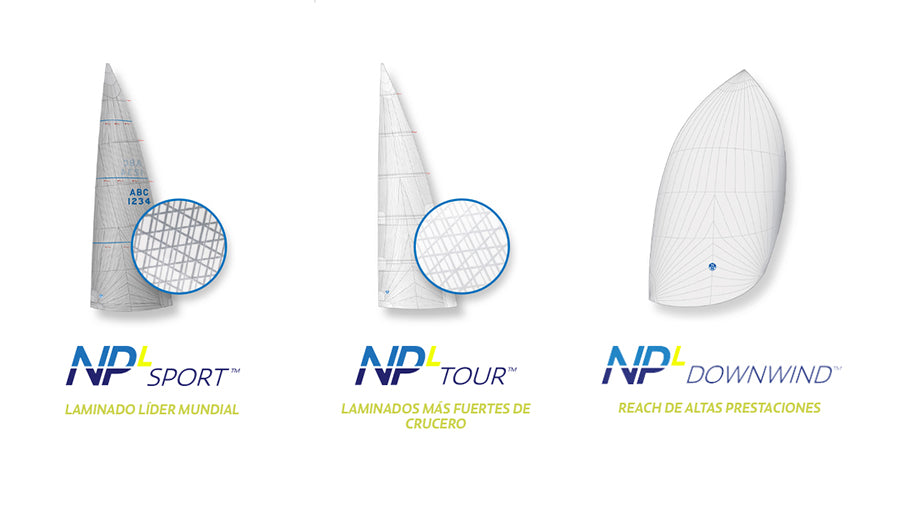
Consejo North Sails
CONSEJO NORTH SAILS
¿Qué significa NPL?
NPL es el acrónimo de North Panel Laminate y hace referencia al material producido utilizando el laminador de tejido más avanzado del mundo. La magia de nuestras velas NPL se encuentra en el proceso integrado Exact, que permite la aplicación instantánea de x-scrims de ángulo variable (hilo unidireccional entre dos films). Nuestro proceso exclusivo permite una magnífica adherencia con la mínima utilización de adhesivos. El resultado son velas más ligeras y robustas, con menor rango de estiramiento y una durabilidad superior a la de otros laminados.
Nuestra gama de velas laminadas NPL ofrece tres versiones: NPL Sport, NPL Tour y NPL Downwind.
Para más información, contacta con tu agente North Sails, visita www.northsails.com o escríbenos a info@es.northsails.com
READ MORE
READ MORE

REUNIÓN DE DISEÑADORES
REUNIÓN DE DISEÑADORES
La localidad estadounidense de Marblehead (Massachusetts) acogió la reunión anual de los principales diseñadores de velas de North Sails.
Durante tres jornadas, 23 expertos de ocho nacionalidades compartieron ideas sobre los avances realizados en 2018 y los proyectos de 2019, con especial énfasis en el desarrollo de velas, el perfeccionamiento de la herramienta de diseño North Design Suite y los paquetes básicos para equipos de competición, donde se aplican innovaciones que una vez probadas en regatas de alto nivel se podrán aplicar a las velas que comercializa North Sails.
"Contamos con diseñadores de talento apasionados por hacer que los barcos naveguen más rápido", explica JB Braun, director de diseño e ingeniería de la firma.
"North Sails nos ofrece una oportunidad única en software, maquinaria y organización, permitiéndonos operar a un nivel súper alto, fabricar velas y conseguir opiniones inmediatas de regatistas profesionales".
READ MORE
READ MORE
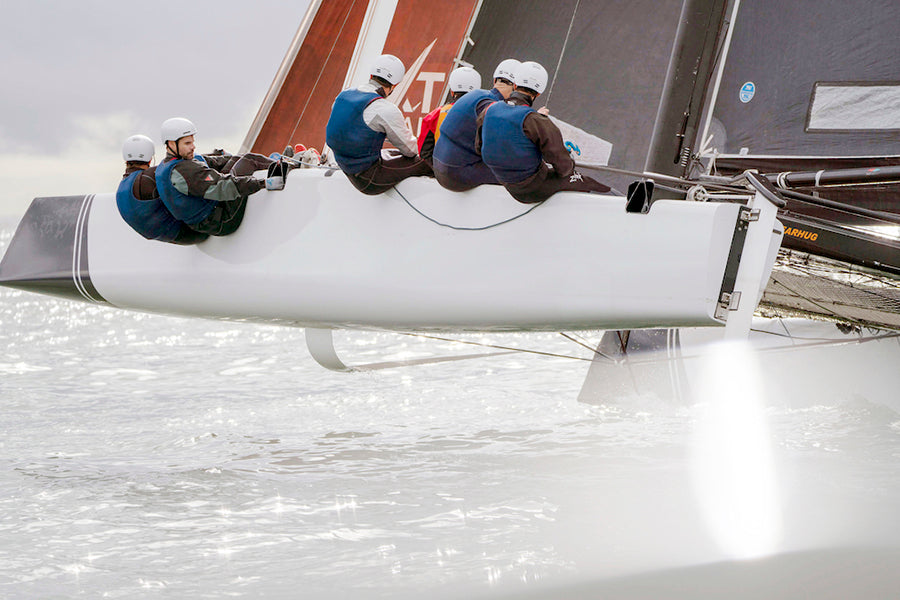
STARS & STRIPES TEAM USA TAMBIÉN ELIGE NORTH SAILS
STARS & STRIPES TEAM USA TAMBIÉN ELIGE NORTH SAILS
El equipo estadounidense Stars & Stripes Team USA ha elegido North Sails como diseñador y proveedor oficial de velas para su desafío por la 36 America’s Cup.
📸 Stars & Stripes Team USA
Este anuncio se une a los de los desafíos italiano Prada Luna Rossa y británico INEOS Team UK, y del defensor neozelandés Emirates Team New Zealand, quienes también confían en el líder mundial. JB Braun, director de diseño e ingeniería de North Sails, será además el director técnico de Stars & Stripes Team USA.
"Llevo más de 18 años involucrado en la America’s Cup, y en ese tiempo he visto cómo tecnología e innovación han cambiado las cosas a niveles irreconocibles", explica Braun.
"Pero una cosa permanece invariable: siempre gana el barco más rápido. Nuestro desafío esta vez, con un barco nuevo y tanto por aprender, es cómo asegurarnos de que navegamos con trimado óptimo un mayor porcentaje de tiempo que nuestros rivales".
READ MORE
READ MORE
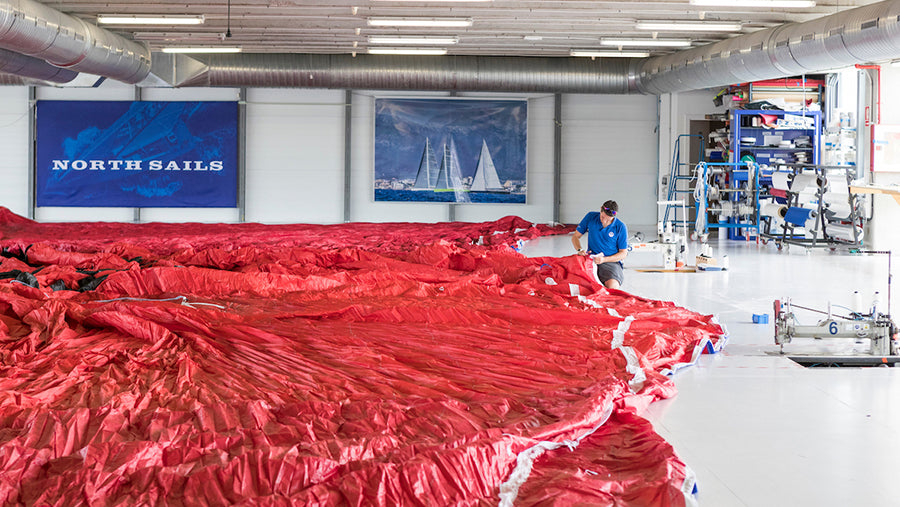
NORTH SAILS ESPAÑA, AL SERVICIO DE LA VELA
NORTH SAILS ESPAÑA, AL SERVICIO DE LA VELA
North Sails cuenta en España con cuatro velerías, incluyendo la mayor en servicio para superyates y una de las siete que fabrican velas de la firma en el mundo. Una estructura de más de 70 profesionales al servicio de la vela.
📸 Ian Roman
Las plantas estadounidenses de Milford (Connecticut) y Minden (Nevada), la neozelandesa de Auckland, la esrilanquesa de Colombo, la británica de Gosport y la española de Cuntis cubren la demanda mundial de velas North Sails, que asciende nada menos que a 33.000 unidades anuales. La firma cuenta con 1.600 empleados, 110 velerías con servicio certificado y 150 puntos de venta. En España, la estructura de North Sails está compuesta por cuatro velerías en Palma, Valencia y Cuntis, además de las oficinas comerciales ubicadas en Barcelona y Málaga. En total, algo más de 70 profesionales, incluidos 40 comerciales, que en 2018 vendieron cerca de 700 velas en nuestro país. Pero la labor de North Sails España es mucho más que la de vender las mejores velas del mundo.
"Nuestra vocación es la de dar servicio al cliente, que esté contento y conseguir fidelizarlo para mantener con él una relación que se prolongue en el tiempo", explica Luis Martínez Doreste, director comercial de North Sails España. "La calidad de las velas North Sails es innegable, pero la clave del éxito está en el servicio".
El equipo liderado por Martínez Doreste comercializa todas las referencias del extenso catálogo de la firma, desde Óptimist hasta superyates, desde clásicos hasta monotipos, desde crucero hasta vela de alta competición.
"Por número de unidades, lo que más vendemos son productos de vela ligera, pero por facturación los más importantes son el nicho Premier Race –barcos de serie utilizados en regata– y los One Design".
Cuntis, una de las siete
La velería de Cuntis (Pontevedra) es uno de los siete centros de producción de North Sails en el mundo, uno de los tres de Europa y el único que fabrica velas en España. Sus instalaciones constan de tres plantas y cerca de 4.000 metros cuadrados que incluyen una espectacular sala diáfana de más de 1.000 metros cuadrados. Al frente se encuentra toda una institución, Manolo Lastra, auténtico gurú del sector con más de cuatro décadas de experiencia. Aunque fabrica también velas de portantes, la velería de Cuntis es una de las dos plantas North Sails especializadas en clásicos, junto a la estadounidense de Milford.
"Fabricamos del orden de 400 velas al año, de las que alrededor del 25% son velas de clásicos", explica Lastra.
Para responder a la demanda del mercado, el personal de la velería recurre al saber hacer de entre 20 y 30 expertos veleros en función del ciclo de producción.
Superyates, en Palma
Gracias a su posición estratégica en el Mediterráneo, Mallorca concentra prácticamente la mitad de la estructura de North Sails España. Sus dos velerías de Lluchmajor y Palma suman 6.500 metros cuadrados de superficie, y su plantilla asciende a 42 trabajadores, erigiéndose como referencia absoluta entre las velerías especializadas en superyates del mundo.
"Nuestro objetivo es que los capitanes de los barcos no se preocupen de nada desde que llegan a puerto", explica Marc Patiño."Descargamos las velas, las transportamos hasta la velería, realizamos un informe detallado de cada una de ellas, completamos las reparaciones o modificaciones que nos pidan, y las devolvemos al barco".
Por las velerías de North Sails Palma pasan una media de 180 velas al mes, y sus instalaciones tienen capacidad para almacenar más de 2.000 velas.
"Damos servicio a barcos de todo tipo, desde Óptimist, windsurf o crucero regata, hasta colosos con velas 3Di de una tonelada de peso".
La estructura de North Sails en la isla incluye una veintena de veleros, diez comerciales y diez especialistas en logística.
Multiservicio, en Valencia
La velería de North Sails Valencia cuenta con una ubicación privilegiada junto al Real Club Náutico de Valencia. Sus instalaciones constan de aproximadamente mil metros cuadrados de superficie donde se ofrece todo tipo de reparaciones y modificaciones de velas para todo tipo de embarcaciones.
"Ofrecemos desde asesoramiento técnico hasta confección", explica Nacho Braquehais."El servicio es prácticamente integral, e incluye desde desmontar, revisar, reparar, modificar y limpiar velas, fundas y capotas, hasta almacenarlas para hibernar o probarlas con el cliente".
La actividad de la velería no cesa durante todo el año, aunque los meses con mayor carga de trabajo se concentran entre marzo y junio. Al final de la temporada, North Sails ofrece un interesante servicio de chequeo
"que permite detectar con tiempo las reparaciones o modificaciones que requerirá la vela para aumentar su rendimiento y vida útil, y así poder programarlas de manera que la vela esté en perfectas condiciones cuando el cliente la necesite".
Las cuatro velerías cubren la demanda del mercado nacional, pero la ambición de North Sails España es no sólo consolidar su posición como líder del sector en nuestro país, sino incrementar su presencia por las costas españolas y fidelizar al cliente con una relación todavía más directa y cercana.
"De cara a 2019 queremos evolucionar en oferta de servicios y ampliar nuestra red de puntos North Sails para cubrir todos los puertos y marinas de la costa española", concluye Martínez Doreste.
READ MORE
READ MORE
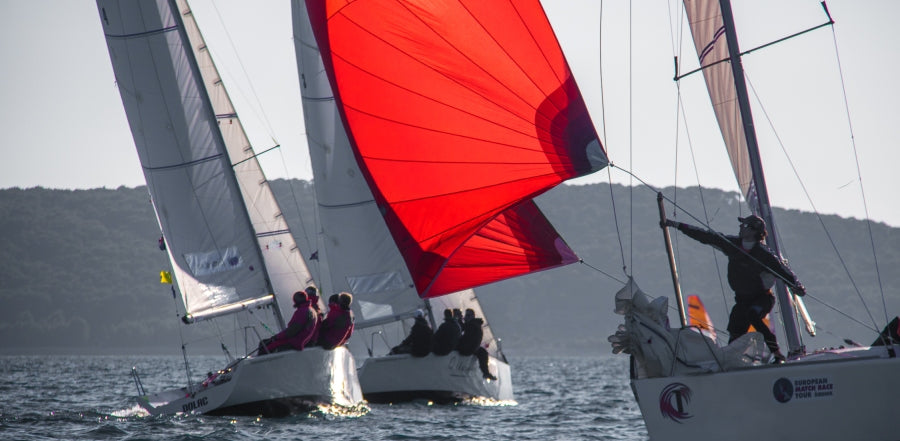
PRVO PH U 2019. JE USPJEŠNO ODJEDRENO
PRVO PH U 2019. JE USPJEŠNO ODJEDRENO
foto: Hrvoje Duvančić – www.regate.com.hr
Jedriličarski klub Val iz Šibenika i Wave Sailing Center bili su organizatori Prvenstva Hrvatske u dvobojskom jedrenju, na regati koja je ujedno bila i uvodni događaj u ovogodišnji ciklus European Match Race Toura.
Sudjelovalo je sedam ekipa iz Hrvatske, Slovenije i Danske. Iz Danske je stigao, Downhill Sailing Team, mladi momci predvođeni Emilom Kjaerom (ISAF rank: 100), kojem je ovo bio treći nastup na jednoj match race regati u Šibeniku. Od slovenskih jedriličara tu su bili Jure Jerkovič (ISAF rank: 226) i Bojan Presen (ISAF rank: 142) koji su sa svojim posadama već odjedrili nekoliko regata u Šibeniku. A Hrvatsku su predstavljale lokalne zvijezde u usponu, posada WSC Sailing Team-a, sastavljena od srednjoškolaca i brucoša kojima je glavni i odgovorni Marko Smolić (ISAF rank: 169), turbo iskusni Murterski jedriličari koje je nakon duže pauze još jednom okupio Tonko Rameša (ISAF rank: 333), te dvije posade iz Splita. Posada Tome Stipanovića (ISAF rank: 803) koji je već ranije krenuo sa skupljanjem bodova za ISAF match race ljestvicu, dok je premijeru u match raceu imala posada splitskog Pomorskog fakulteta koju je predvodio Toni Bušić.
Od standardnog termina u kojem se PH jedrilo nekoliko prethodnih godina, odustalo se nakon problema s organiziranjem istoga za 2018. godinu. Zato je iskorišten termin EMRT-a, a regata je ujedno dobila i na dodatnoj kvaliteti nastupom iskusnih inozemnih posada.
Program regate je predvidio kvalifikacijski dio s dva Round Robina, te finalni dio s King of the Castle, polufinalom i finalom.
Regatu su otvorili parovi Kjaer - Bušić i Rajar - Stipanović. Jedrili su po buri koja je konstantno puhala oko 20 čvorova. Snaga vjetra i čudljivost burinih refula bili su razlog mjere predostrožnosti koju je zadao Regatni odbor natjecateljima. Riječ je bila o obaveznom prvom kratu i nekorištenju spinakera.
foto: Hrvoje Duvančić – www.regate.com.hr
Uvjeti na moru su malobrojnoj publici uskratili pogled na više atraktivnih situacija u predstartnim nadmudrivanjima. Uglavnom su se jedriličari držali na sigurnim udaljenostima jedni od drugih, ali svejedno su se desila dva manja sudara. U jednom je ekipa Gibanca udarila jedrilicu Panja i zaradila pola kaznenog boda, dok su u drugom incidentu Panji imali bliski susret s brodom RO-a.
Tek nakon 15 sati bura malo slabi i podižu se kompletna glavna jedra, a u posljednja dva odjedrena flighta dozvoljava se i upotreba spinakera. Ali unatoč svim pokušajima ostaje neodjedren posljednji match prvog Round Robina.
Vodeća ekipa na kraju dana su Panji s impresivnim 100 postotnim učinkom! Iza njih petak završavaju danci s 83% i domaćini iz WSC-a sa 67%.
Sutradan jedriličare dočekuje prekrasan sunčan dan, ali s minimum vjetra. Odmah nakon izlaska na more, po laganom maestralu, uspijeva se samo završiti započeti Round Robin. Jedini potez koji je tada RO-u ostao na raspolaganju bio je izlazak kroz kanal Sv.Ante i prebacivanje regatnog polja pred Jadriju. To se već za vrijeme prolaska pored tvrđave Sv.Nikole pokazalo izvrsnim potezom jer je maestrala bilo više nego dovoljno za nastavak regate čim se postave bove.
S obzirom na količinu vjetra odlučeno je da se drugi Round Robin jedri do kraja dana, bez prekidanja i započinjanja finalnog ciklusa. Jednako tako je i vremenska prognoza obećavala dovoljno vjetra i u nedjelju, pa nije bilo potrebe za forsiranjem završnog dijela. Spomenuti prekid je bio opcija jer je u match raceu dozvoljeno da se prekine Round Robin na sredini, kad sve posade imaju jednak broj odjedrenih matcheva, a također je uvedeno i novo pravilo o polovičnim bodovima koje je iskorišteno u ovom slučaju.
Naime, maestral koliko god je bio dobar dok je puhao ipak je sa smirajem dana počeo smanjivati svoj intenzitet. Uspješno se kraju privelo 8 flighteva, a neodržanih ostaju tri (u stvari dva i pol, jer je u kombinaciji 7 posada posljednji flight samo s jednim matchem).
Da bi se dobilo konačno bodovno stanje za formiranje finalnih parova trebalo je usporediti tablice prvog i drugog Round Robina. U njima je trebalo pronaći matcheve u kojima su bili isti parovi i tu se pobjednicima dodjeljivalo za pobjedu po pola boda umjesto dotadašnje upisivanih jedinica. To je razlog malo neobičajenijoj brojevnoj slici koja se može vidjeti u rezultatima.
U odnosu na petak, redoslijed se promijenio samo po pitanju vodećeg dvojca. U posljednjem subotnjem matchu susreli su se upravo Panji i Downhill Sailing Team, uvjerljivo najbolje ekipe regate. Ovaj put je pobjedu odnijela danska ekipa i tako se bodovno izjednačila s murterinima, ali kako su klinci iz Danske bili bolji u kasnijem dvoboju po pravilima preuzimaju ulogu lidera na bodovnoj ljestvici.
foto: Hrvoje Duvančić – www.regate.com.hr
Nedjeljno jutro je bilo jednako subotnjem i regata se odmah nakon napuštanja veza uputila prema Jadriji. Nije više bilo maestrala, već je puhalo lagano oštro. S obzirom da se nije očekivalo značajnije jačanje vjetra tijekom dana program je skraćen na minimum. Za pobjede u King of the Castle srazovima bila je dovoljna samo po jedna pobjeda, dok su se polufinala i finala jedrila na dvije pobjede.
Prvi match derbija začelja imali su 6. i 7. s rang ljestvice. Kao bolje plasirana, posada PFST-a je u match ušla pod žutom zastavicom, odnosno s desne strane s mogućnošću dočekivanja protivnika na favoriziranim desnim uzdama. Protivnička ekipa, s Tomom Stipanovićem na kormilu ulazi s lijeva, s plavom zastavicom i u zanimljivom nadmudrivanju po vrlo laganom vjetru starta s par sekundi prednosti. Cijelu prvu orcu i prvu krmu jedre jedni blizu drugih, izmjenjuju se u vodstvu, ali u posljednjem duelu, Stipanović iskorištava preklapanje s kojim iizgurava Bušićevu ekipu dovoljno daleko od željene rute da se uspije prvi spustiti do bove od krme i u drugu orcu ući sa značajnom prednosti koju ne ispušta do kraja.
U drugom matchu iz ciklusa King of the Castle, Stipanovićevu ekipu dočekala je petoplasirana posada, slovenci iz Gibanca tima. Na nešto kraćem regatnom polju mnogo iskusnija posada iz Slovenije nije dala puno šanse našim mladićima. Od početka do kraja dvoboja imali su inicijativu i ostvarenu prednost su uspješno održavali do kraja plova.
Nakon što se ovako razriješio redoslijed od 5. do 7. mjesta ostalo je još da se odjedre polufinalni matchevi. Po pravilima je vodeća posada izabrala svoje protivnike, a i ovaj put je bilo kao što se to najčešće radi, izabrali su četveroplasirane slovence iz posade Eureke. U drugom matchu su jedrile preostale naše dvije posade.
U oba polufinala rezultat je na kraju bio po 2:0., a u finale su otišli Rameša i Kjaer, dok su se za treće mjesto nadmetali Smolić i Rajar.
Jednaki rezultati, po 2:0, su bili i u posljednja dva flighta. U srazu za prvo mjesto uvjerljiviji su bili murterini, dok je Smolićeva ekipa odnijela pobjedu za treće mjesto.
Osim titule apsolutnih pobjednika European Match Race Tour - stop Šibenik, posada Panji ovjenčala se i titulom prvaka Hrvatske za 2019. godinu, dok su drugoplasirani završili momci iz Šibenika, a na trećem i četvrtom mjestu su posade predvođene Tomom Stipanovićem i Tonijem Bušićem.
foto: Hrvoje Duvančić – www.regate.com.hr
Nakon ove regate EMRT se nastavlja na još šest regata po slijedećem rasporedu: Tivat (Crna Gora), Neusiedl See (Austrija), Limano (Rumunjska), Gothenburg (Švedska), Swinojuscie (Poljska) i Ledro (Italia), a finale za 2019. godinu će ove godine biti po prvi put u Šibeniku. Rezervirani termin je 4 - 6. listopada, tjedan dana prije seniorskog Europskog prvenstva koje će se jedriti u istom akvatoriju.
READ MORE
READ MORE

A LONG TIME COMING
A LONG TIME COMING
How Client Stephen Jones Won The 2018 Shark Worlds
Stephen shares how he and his crew, comprised of North Sails expert Geoff Moore and Breck McFarlane, took home the 2018 Shark World Championships in Kingston this past August.
While the crew had minimal amount of training together before the Worlds, the crew was able to come together in tough conditions and sail smart. That said, the crew did do a lot boat prep work and preventative maintenance to the boat before the event started after they arrived in Kingston. Included in this was time spent mast tuning, specifically individual shroud tuning matrix, which Moore says contributed to their success. The maintenance continued throughout the event, each day before and after racing; allowing them to ensure the boat, the rig and the sails were in the best condition for racing.
Tell us about how the journey to the Worlds and what steps you took to ensure success?
I got to Worlds because my brother said, “I can't make it, but you can take the boat if you want.” He started a new job, and he didn't have any vacation time. So I said, “Okay, great!” and I immediately contacted Geoff and I said, “Geoff, do you want to do the Worlds?” And he said, “Sure, I'm in.” Then we recruited Breck McFarlane who has also done lots of different Shark events with us. And I've raced with him on J/22s and he raced on my J/22s.
How were the conditions in Kingston? Usually it can either be raging winds or light air.
It blew hard all week. Moderate on the last day, but we were on the jib for, I think, the first four days. The distance race, the squall came through where, reportedly, the Kingston Yacht Club's weather station reported 37 knots. For the first six races we had nothing worse than a three, so we were looking pretty good. Then we won the distance race, more just by keeping our heads together in the squall, and then for Friday, the last day of the event, we just kind of lifted the foot off the pedal a bit. I think we had a 6 and an 11, then we dropped the 11. It was an 11 and then a 6.
Tell us about the squall and the distance race more.
We actually changed from the Blade to the Genoa, that kind of moderated halfway through the race, and then we dropped to the low mark and we went back to Genoa, cause that's what was hinked up, the squall came through and it jumped from 18 to 38 knots. Boats were wiping out all around us. One guy went bare-headed and one guy dropped main and jib just to ride out this storm. Meanwhile Geoff was able to keep the boat going, keep the boat upright. And he told me to do something that I would not have done; he said, “Let the jib out.” I said, “Okay, are you sure?
He says, “Yeah!” and then he said, “Let it out more, more.” Like, I let it out a meter, a meter and a half. I just thought, “That can't be right.” But we ended up actually still making progress upwind, where everyone else was basically just being bumped backwards, or sideways. we went from 8th or 9th in that race to winning it.
North Sails expert Geoff Moore recalls the distance race was 4.5 hours and required the team to switch from little jib to big jib upwind (bare handed). Moore said "When the squall came thru most people left jibs over trimmed so they couldn’t fly their mains. We let out the main then eased the genoa so we could fly both sails at the same time." In addition to expert boat handling in the windy conditions, Moore also doubled up on battens in the mainsail to allow for better control, going so far as to "hand stitch battens into pocket."
How would you say the sails have contributed or have they contributed to your success over the years, especially at the Worlds?
We've always been loyal with North and I just think that the Shark sails won't let you down, they're known commodities, there's nothing radical about them. I had North on my Shark, well, I had actually a mixed inventory, but I came 2nd in the '06 Worlds, which is a very light air event. It's like how back in the day they'd used to say that no one would get fired for choosing IBM. You're not going to go wrong choosing North.
Moore shares how “Our jib fit the boat beautifully” and the conditions required them to trim their sails perfectly throughout racing.
For more information on our Shark products and how you can win the next Worlds, check out our inventory and contact your local experts today!
READ MORE
READ MORE

CONDICIONES ESPECIALES PARA VELAS ENTREGADAS EN MARZO
CONDICIONES ESPECIALES PARA VELAS ENTREGADAS EN MARZO
Si estás pensando en actualizar tu inventario de velas, ahora es el momento. Pide ya tus nuevas North Sails y recíbelas en marzo con magníficos descuentos.
Las oportunidades están para aprovecharlas. En North Sails entendemos la inversión que supone actualizar un inventario de velas y por eso ofrecemos condiciones especiales cuando nuestras velerías disponen de mayor capacidad para aceptar pedidos de entrega inmediata.
Si encargas ahora tus velas North Sails en tejidos NPL o NPC podrás beneficiarte de un suculento descuento y recibirlas en marzo.
Y si lo tuyo es el 3Di, pregúntanos cómo equipar tu barco con las velas con mejores prestaciones y durabilidad del mundo. Te sorprenderás.
Utiliza el código MARZO al realizar tu pedido y conseguirás condiciones especiales.
Contacta con tu agente North Sails o pídenos presupuesto sin compromiso en info@es.northsails.com
READ MORE
READ MORE
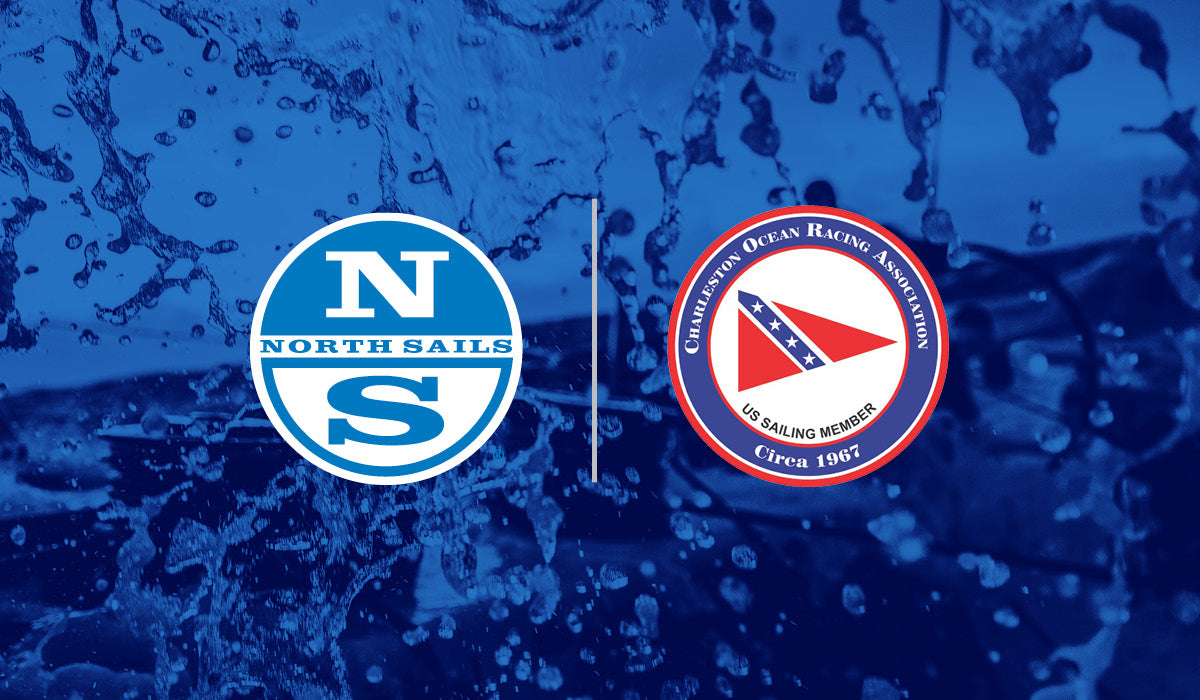
CORA MEETING FEBRUARY 2019
DINNER IS ON US
We're Swapping Sails For Spatulas At The February Meeting
READ MORE
READ MORE

WILL WELLES J/24 CLASS LEADER
WILL WELLES J/24 CLASS LEADER
Two-time World Champion Loves to Share His Tricks
© Chris Howell
As a double world champion in the J/24, Will Welles has made good use of all the lessons learned over the years. “It’s pretty different than a lot of other boats,” he admits, adding that having a genoa changes how the boat is sailed (and tuned) compared to other small keelboats. Then he passes along a few other tips as well, because even during a winter office-bound interview he can’t resist sharing his knowledge.
Favorite job, favorite boat
Now based out of the Portsmouth, RI loft, Will learned to sail as a kid on Maine’s Mount Desert Island. “We always had a lot of boats around our place and were always fixing boats and working on boats,” he remembers. He sailed J/24s on and off but didn’t “fully get into it” until high school. After college, he bought a J/24 cheap and fixed it up himself.
“I just like driving boats,” he laughs. “One of my favorite jobs ever was working on the dock crew at Hinckley’s as a high schooler. I basically drove boats all day, in and out of the lift, to the dock, to the mooring. Powerboats, sailboats, whatever. I just loved it.”
As for the J/24, one aspect he enjoys most is the five person team, he says.
“It really is a little big boat, and you get on the road with a crew that you like. It’s fun on the water. It’s fun off the water. And I’ve been doing it a long time. It’s kind of what got me into all this with North Sails.”
Since his first job at North in 1997, Will’s worn a lot of hats. “I would sell big boat cruising and racing sails. I sailed a lot of events in larger boats, but always did the one design. That’s what I focus on now, one design sailing and selling.” In addition to the J/24, Will also sails Etchells, J/70s, Shields, and IODs. “I’m a strong believer in sailing what’s in your backyard, and the two biggest classes here in Newport are J/24s and Shields.”
© Chris Howell
Inventory Update
North’s J/24 inventory has proved itself by winning the past five Worlds, but Will says “We’re always looking at different things. A lot of things have been tried numerous times over the years. We feel pretty happy with the upwind sails, the main, genoa, and the jib.” There are two genoa options, and he says most people choose the DX7TT genoa, which excels in waves. But “they’re both good,” he clarifies. “You can’t go wrong. We usually tell our clients to stick with the genoa that they’re used to using.”
For spinnakers, most people buy the FR2. “We’ve worked on that quite a bit,” Will says. “It’s a full radial sail and it’s great in zero to 40. So that’s definitely the sail of choice.” Spinnaker design has evolved a lot over the last several years, he adds,
“So that’s one sail we’re working on. We haven’t found anything better than the FR2 yet, but we’re still trying… always looking to make sure we’re providing the best product possible.”
Number one J/24 trick
Why does Will keep coming back to the J/24, even after winning two Worlds? “I like that it is a super technique boat,” he says. “Once you learn the little tricks, it can be pretty good.” Asked for specifics, Will talks first about sail trim.
“You really overtrim the main to get headstay tension once you’re going. There aren’t many boats where you trim the main that hard, so that’s a big thing.”
And his number one trick? That’s a question he gets quite often at regattas, so he has a quick answer. “The biggest thing is to get comfortable with sailing the boat flat—once you do that, you really have something. The helm feels awful, but it’s the key to getting upwind the fastest. So you gotta go out there and practice it and get comfortable with it.”
© Chris Howell
Dock talks and helping customers
Will does dock talks at most big J/24 regattas, because he feels so strongly that sharing information is a big part of keeping classes going. “You gotta put back, especially into classes that have been good to you. It’s good for the class. It’s good for North Sails.” And even beyond the call of duty, Will says he enjoys helping people get faster—especially when a customer is actively taking notes. “That’s what you want to see when you’re standing up there, putting the time in. It’s good.” So, thanks to his sharing ways, all of Will’s customers can make good use of the lessons he’s learned as well.
Read more about Will’s 2018 Worlds victory
© Chris Howell
READ MORE
READ MORE
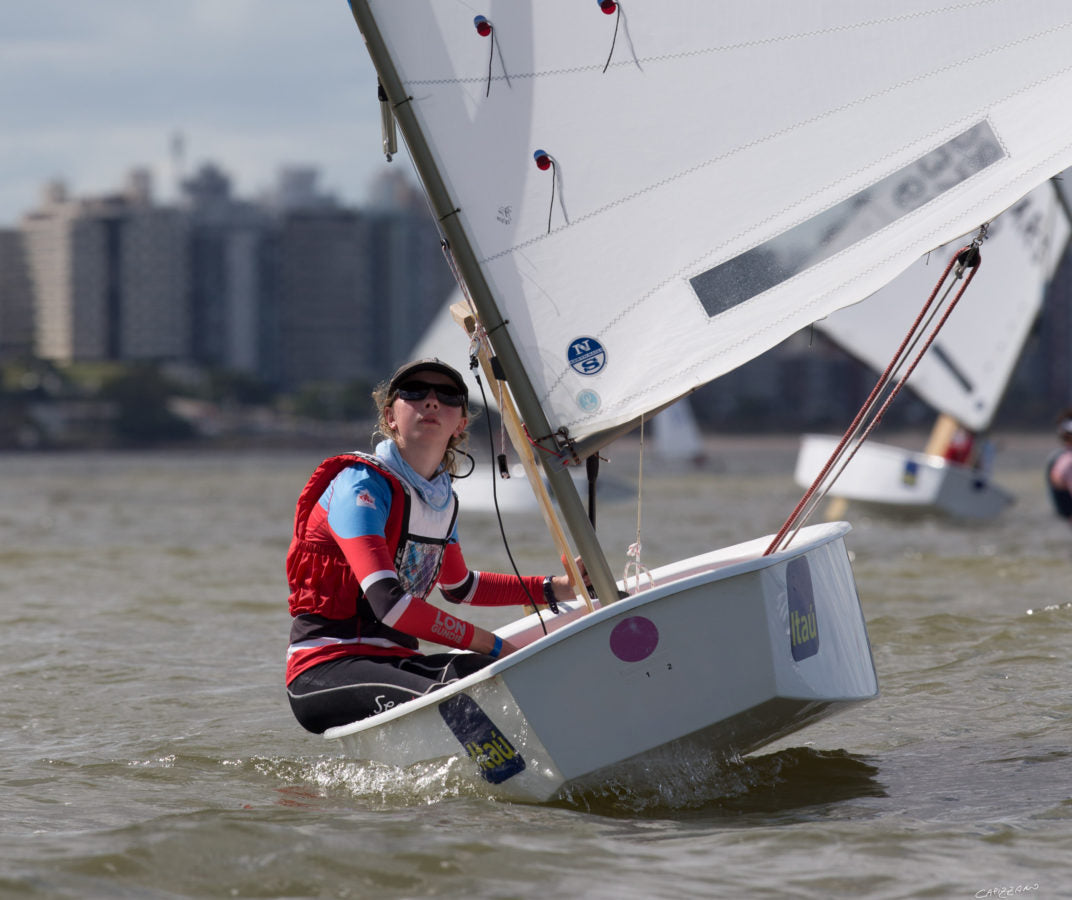
GROWING UP RACING THE OPTI
Racing all over the world, here's what she had to say about her experience and goals in her sailing career so far.
READ MORE
READ MORE
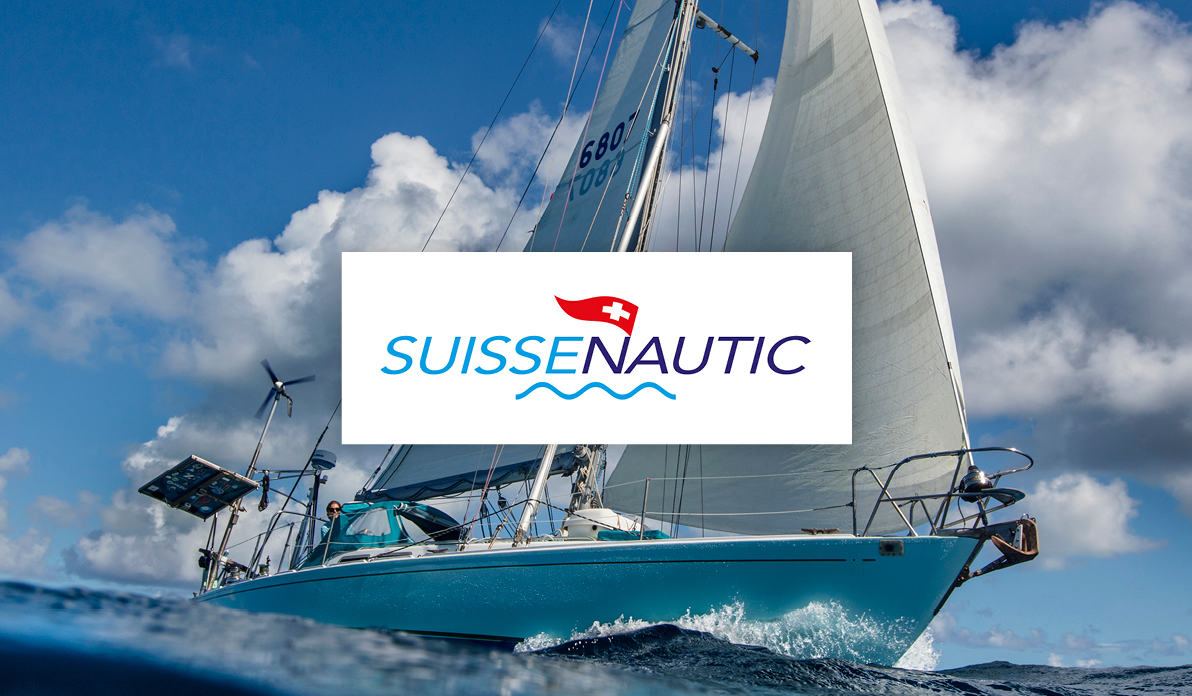
RENDEZ-VOUS AU SUISSENAUTIC DE BERNE DU 20 AU 24 FÉVRIER
Rendez-vous au SuisseNautic de Berne du 20 au 24 février
SuisseNautic, le plus grand et plus important salon national du nautisme et des sports nautiques destiné au grand public, a lieu tous les deux ans.
Du mercredi 20 au dimanche 24 février, votre équipe North Sails vous accueillera dans la Halle 3.2 sur le stand E02.
Nos collaborateurs seront à votre entière disposition pour répondre à vos questions, échanger sur votre saison passée et celle à venir, vous faire découvrir nos nouveautés ou encore vous faire profiter de nos "offres spéciales salon".
Horaire et billetterie:
Cliquez ici pour en savoir plus et acheter vos billets d’entrée. N'oubliez pas de contacter nos experts afin de bénéficier d’une réduction sur votre billet d’entrée !
Gammes 2019:
Découvrez déjà nos gammes de cette année en cliquant ici.
Nous vous souhaitons une belle saison de ski et nous nous réjouissons de vous accueillir à Berne!
READ MORE
READ MORE
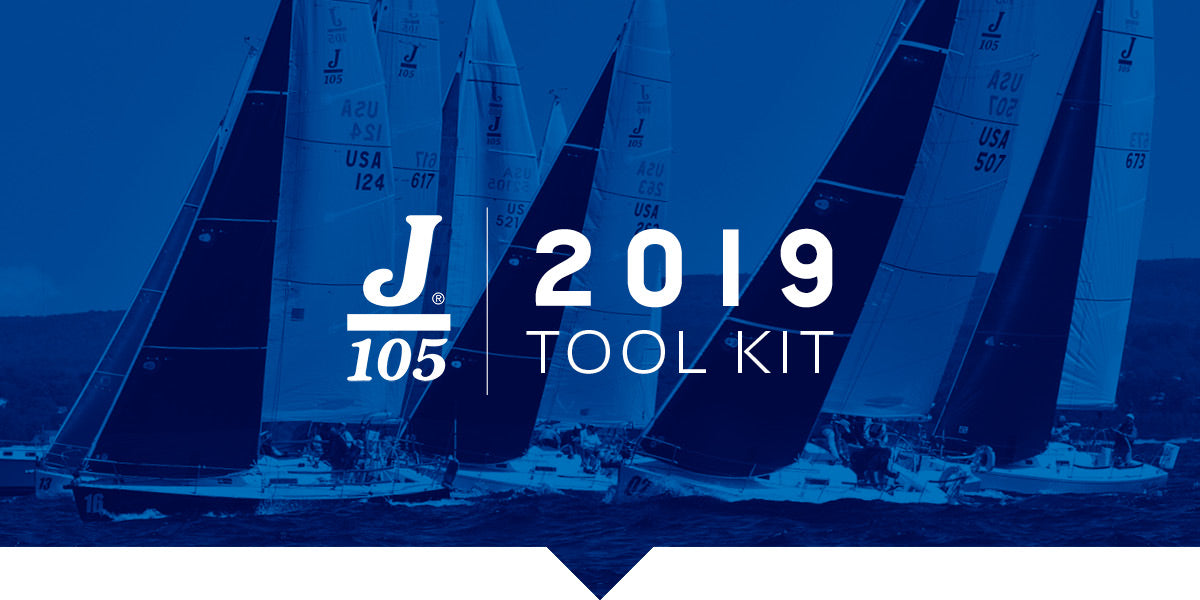
J/105 TOOL KIT
Get The Most From Your J/105
Your next regatta is just around the corner. Is your team ready? Our J/105 Tool Kit will help. Created just for J/105 sailors, by our expert team.
#NSVictoryList
There is no better performance test of a one design sail than the results it produces. In 2018 alone, North Sails J/105 inventories helped teams win regattas all over the US.
Tips From The Champ
Champion Terry McLaughlin shares some tips that helped team Mandate win the 2018 North Americans.
Downwind Tips & Tricks
How to sail as deep as possible while still keeping your speed up. Before your next regatta, read this downwind manual from expert Will Keyworth.
Define Your Speed
Pulling all the pieces together can be challenging. Our J/105 Speed Guide will help you leverage our expertise to make the most of your sailing.
Fine Tune With North
Find your groove. Get your numbers. Be confident in all wind conditions. After countless hours of sailing, sail testing, and competing in the J/105, our championship winning sails will get you up to speed quickly.
Working With The Best
Our J/105 sails deliver the best results for our clients. Contact your local expert and join us at the front of the pack.
READ MORE
READ MORE
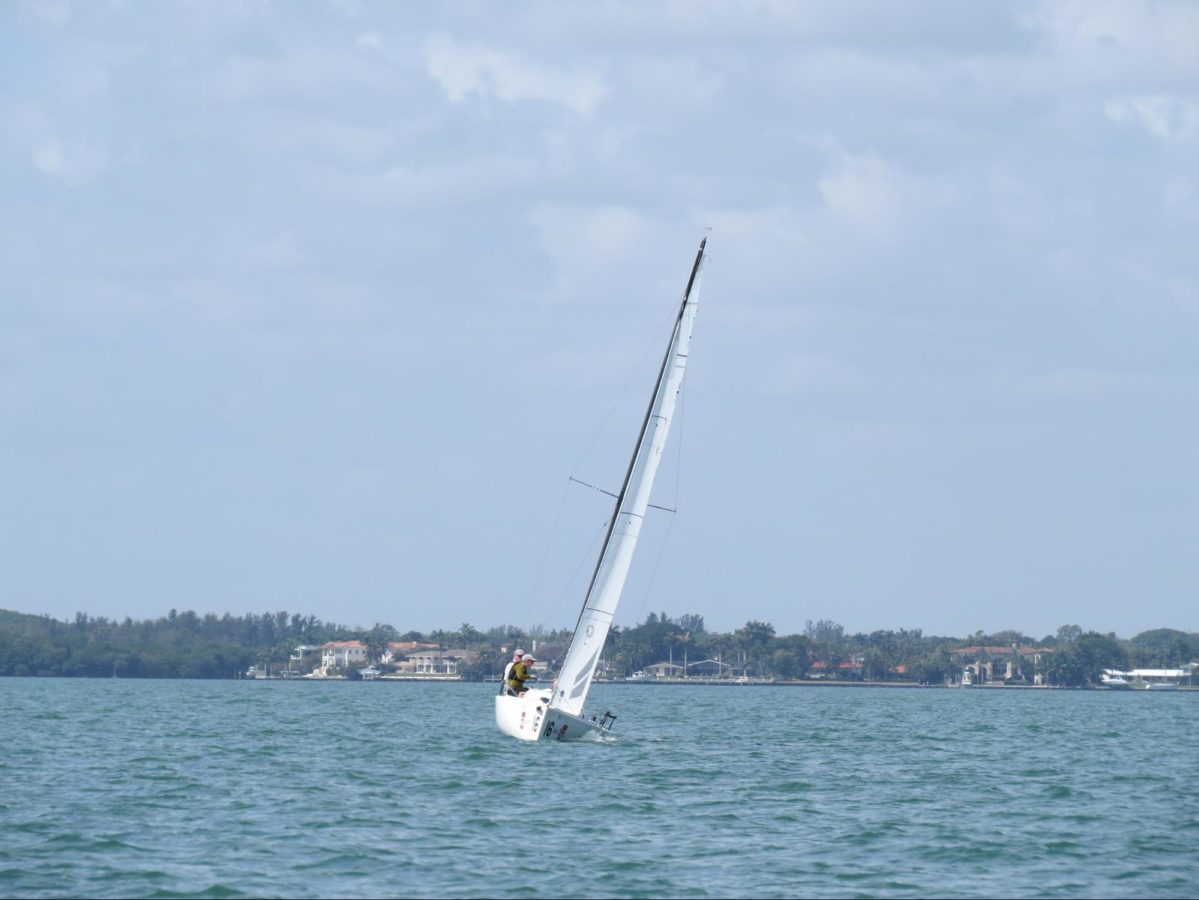
WHY IS HEADSTAY SAG FAST UPWIND IN LIGHT AIR?
WHY IS HEADSTAY SAG FAST UPWIND IN LIGHT AIR?
How Headstay Sag Affects Everything From Speed To Point
Sailboats with headstay sag often point higher and maintain boatspeed better in light-air conditions. One Design expert Tim Healy describes the rewards and the risks.
Many sailboat classes limit the number of jibs that a boat may carry, and some classes allow only a single jib. These limitations challenge competitors to find ways to maximize power in light air. One of the key methods to power up a sail is to induce sag in the headstay, also known as the forestay.
Headstay sag on a sailboat is the distance between the midpoint of the headstay if it were perfectly straight and the actual midpoint while sailing. The best way to estimate this measurement is when sailing upwind, sight up the forward side of the headstay and note how far the midpoint of the headstay has sagged when compared to the mast.
When the headstay sags, it not only sags to leeward but also sags aft, which puts the luff closer to the leech, thereby adding depth to the jib.
How to Increase Headstay Sag
The key controls for manipulating headstay sag are shroud tension, mainsheet tension, and in some cases, headstay length.
You would think that headstay length would be the primary variable, but that’s only the case on boats with keel-stepped masts, such as the Farr 40, Etchells, and Shields, that limit range of mast movement at the mast step and deck partners. On those boats, lengthening the headstay by easing the forestay turnbuckle or adding extra toggles can be an effective way to increase sag. In some classes, such as the J/24, a maximum headstay length is prescribed, limiting this adjustment. And on almost all classes, there are good and practical reasons not to overdo the lengthening of the headstay, including a negative effect on mainsail shape.
In light air, the number one adjustment for headstay sag on boats with either deck-stepped and keel-stepped masts is varying the shroud tension. More tension effectively pulls the mast aft—assuming the chainplates are aft of the mast. If the lower shrouds are farther aft, they will have the most effect; on boats with aft-swept spreaders (J/24, J/70, Melges 24), the uppers will have more effect.
The other way to induce headstay sag is to minimize mainsheet tension. If the mast is stiff, trimming the mainsheet will quickly increase headstay tension and reduce sag.
Ideally, in light and puffy conditions, when you ease the mainsheet in a lull, you’ll see the headstay sag to leeward, powering up the sail. If you don’t get that response when you ease in a lull on a Thistle, Lightning or J/70, your shroud tension is too tight.
One other way to check that your shroud tension isn’t too tight is to sight up the aft side of the mast while sailing upwind. If you see a small amount of sag to leeward in the middle of the mast, that’s a good sign that your shroud tension is right.
Easing off the rig isn’t the only way to increase headstay sag. On a Lightning, you can add a block behind your mast at the deck. On a Thistle, you can put wedges under the mast butt. On a Snipe, you can pull the mast forward at the partners. On a J/24, you can move the mast butt aft. And on an Etchells, you can do any or all of the above.
When you sag the headstay, the maximum draft in your jib moves forward. To compensate and keep the draft aft, ease halyard tension, which also creates additional power. If you increase headstay sag but the halyard remains too tight, you’ll get a big “knuckle” in the front of the sail and an entry that’s too deep, so you won’t gain the overall power you’re seeking. You should see horizontal wrinkles in the front of the sail.
What Headstay Sag Does to Sail Shape
When headstay sag is increased, the headsail becomes deeper and more powerful. If your boat is under-powered, this can make a big difference when it comes to developing speed, especially in choppy wave conditions.
The other major effect of increased headstay sag is that it effectively rotates the middle sail, changing angle of attack. The mid-luff of the sail moves to leeward as well as aft. At the same time the mid-leech rotates slightly inboard, similar to the effect of weather-sheeting, which increases pointing ability.
Once the boat becomes overpowered sag can become a liability, which is why tuning guides usually call for more rig tension as the wind increases.
What Too Much Headstay Sag Does To Sail Shape
You can have too much of a good thing. With too much headstay sag the leech will rotate inboard too far, becoming extra sensitive to sheet tension and stalling too easily. Equally problematic, the entry angle becomes too extreme; when you bear off to rebuild speed, you have to sheet out too much to power up the sail.
Another problem is that the angle of attack varies too much at the front of the sail from top and bottom. You may also see a knuckle in the front of the jib, regardless of halyard tension, and the middle of the sail becomes too flat, without generating significant power.
Light Air and Flat Water
Let’s review how this should work in two light-air conditions, starting with flat water. Here, it’s important to create power in the sail plan, and sagging the headstay is the easiest and most direct method to create depth in the jib.
This creates a scenario where the middle of the jib luff has a better angle of attack to the wind and because of that angle of attack and the inboard rotation of the mid-leech, you will be able to point slightly higher without luffing or losing flow over the front of the jib.
When you have this set up correctly, it is as important as ever to make sure the jib leech tell tales are flowing 90 to 100 percent of the time so that the airflow stays attached to the jib. That said, it is OK (and we actually encourage you) to test maximum trim by sheeting in periodically until you see the jib-leech telltales stall slightly, then ease out until fully streaming. This is your jib sheet trim range, which on some boats may be as little as 1” of sheet.
It is important to stay on top of your rig tensions in these conditions and find the settings that work best for your driving style. In addition, make sure you have some mast side sag at the spreaders, which is a signal that the mast is free to bend forward as well as to leeward. Forward bend creates a flatter main that can be sheeted tighter without stalling the leech, which will also help pointing ability.
Light Air and Chop
When chop is introduced into the picture, a loose rig is still good, but you may find that the rig will pump too much as the waves get larger. This is normal, but in order to temporarily stabilize the rig for a set of bigger waves, pull on enough backstay to snug it up. This should minimize the pumping of the rig and headstay and keep a more consistent sail shape through the chop. As soon as the patch of chop is over, release the backstay to put more sag back in the headstay.
On boats that employ in-haulers or weather sheet the jib to increase pointing ability, be careful not to overdo it. The jib leech can become prone to stalling, which can be particularly slow in waves.
We encourage you to experiment, not only with your headstay sag but with your sheeting technique. Keep notes of what works and what doesn’t, and you’ll quickly master the art of headstay sag.
READ MORE
READ MORE
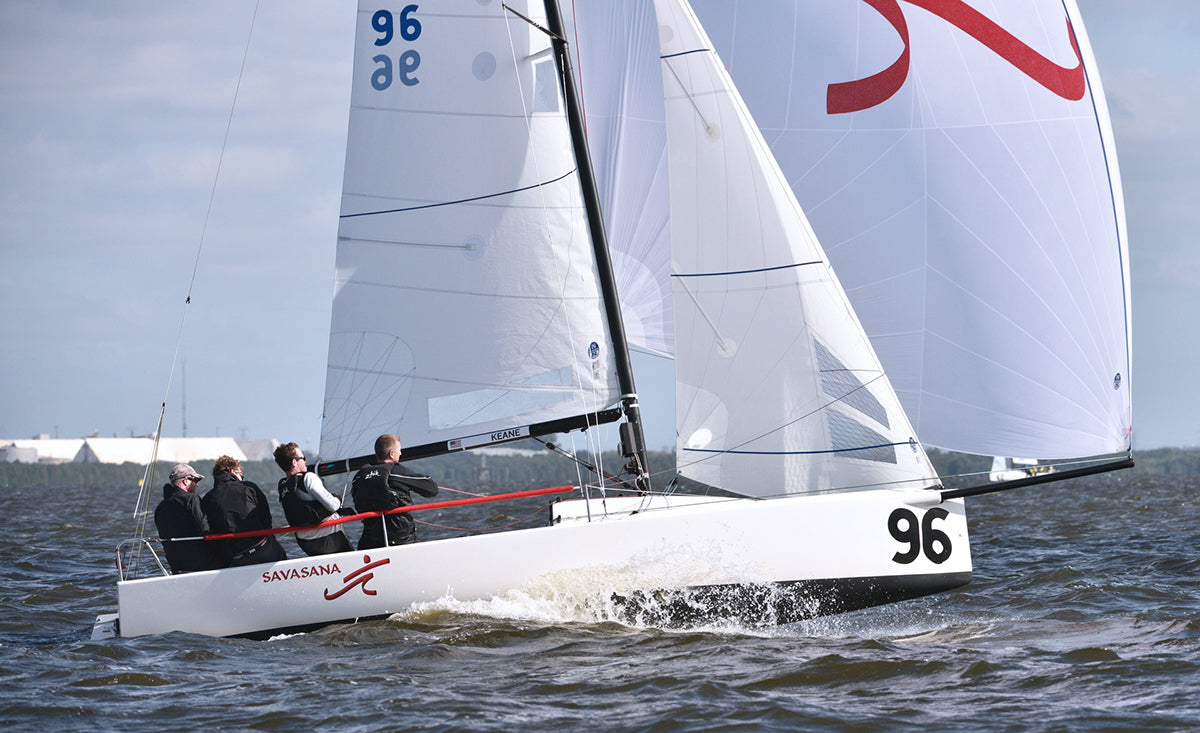
NORTH CLIENTS SWEEP J/70 DIYC WINTER SERIES
NORTH CLIENTS SWEEP J/70 DIYC WINTER SERIES
Versatility of North Designs Prevails. Congratulations Team Savasana!
Series winners at full power in Tampa Bay .©Photoboat.com
Sailing at the Davis Island J/70 Winter Series #3 was beautiful once again! The wind was strong out of the northeast on Saturday, 14-18 knots and a balmy 76 degrees. Sunday was just as nice with winds 8-14 knots and a high of 78 degrees. The race committee did a fantastic job to get the 50-boat fleet a total of seven races over the course of two days, making for a competitive weekend of racing.
Congratulations to Brian Keane and team Savasana for winning the weekend with four bullets on the scoreboard. The result secured Savasana the J/70 Winter Series overall victory. Keane used the North XCS-2 mainsail, J-6 jib and the AP-1 spinnaker.
We are especially happy for our clients finishing 1,2,4,5, taking the top two podium spots over the course of the series. When we asked Brian for his comments on the weekend, here’s what he said:
“We saw a variety of conditions throughout the Davis Island Winter Series which put a lot of demands on the sails. The versatility of North sails was key to our success in Davis Island. We could power up in the light air with flat sea state without inducing excessive drag. We could also quickly and efficiently de-power in windy conditions. Bottom line, we like working with North Sails because the versatility of their products allow us to consistently achieve top results.”
Our experts Tim Healy and Will Welles attended all the three events, helping clients and sharing everything they learned throughout the series. North Sails is a proud sponsor of the Davis Island Winter Series and the Friday Porch Series. Our team is happy to help competitors to get up to speed so they can be ready for the racing. Here are Tim and Will’s tips from the event #3:
Tim’s Tips: Acceleration Off The Starting Line
Preset controls: Set the backstay, outhaul, cunningham, and jib halyard before the start to minimize movement while boat is accelerating at start.
Mark sheets and know the powerup and full speed settings for that condition:
Take notice of your marks on both the windward and leeward jib sheets, as well as main sheet.
This is done prestart, always leave enough time to get to the race area and sail most of first beat to check marks, get heading numbers, and gauge speed with other boats.
When the boat is going well and trimmed for speed, make note of the position of your marks.
Acceleration Sequence:
Keep the vang loose for pre-start and only pull vang-on after you are fully sheeted in.
Your crew should hit the rail and hike. Try not to move in for adjustments, if possible.
Crew should quickly give speed and height feedback to driver and main trimmer.
Main trimmer makes the final trim on the main and the jib, while the forward two crew stay out on the rail keeping the boat steady.
Skipper should focus on accelerating and getting the boat up to max speed right at the start. Pointing will come after target speed is met.
Will’s Tips: Shifting Gears In Puffy Conditions
De-powering Sequence:
Drop the traveler down.
Pull backstay on.
Vang sheet.
Pull main cunningham on.
Pull jib halyard on if wind speed has increased on average.
Weather sheet off in the puffs. Pull back in the lulls.
(In light to medium breeze we play the leeward sheet and leave the weather sheet on).
The reverse of this sequence is used when we look for power. Main cunningham is the last thing we pull on and the first thing that comes off when looking for power. In a big lull we also ease a little backstay and bring the traveler up a couple inches. The key is to get good wind information from the crew on the rail, so you can prepare for the puff. I like to hear about the big puffs and the long lulls, which allows me to keep the boat at a constant angle of heel, making it easier to maintain maximum boat speed.
In case you missed our notes from event one and two: Tips from Series Opener | Takeaways from event #2
Get ready for the Spring sailing season with the fastest J/70 sails from North. Contact your local J/70 expert today!
Will Welles’ New Wave, 2nd Place. ©Chris Howell
Greiner Hobbs’ Dark Horse, 9th place. ©Chris Howell
Douglas Strebel’s Black River Racing. ©Chris Howell
READ MORE
READ MORE
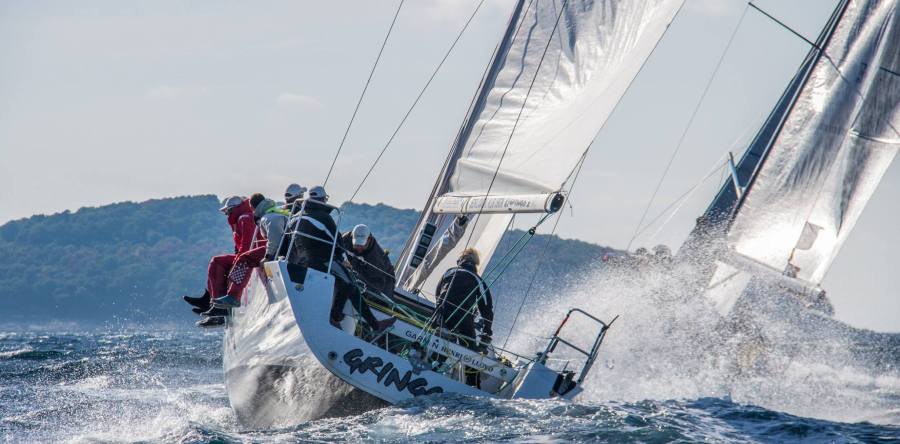
ORC PLANOVI ZA JADRAN U 2019.
ORC PLANOVI ZA JADRAN U 2019.
foto: Hrvoje Duvančić - www.regate.com.hr
Udruga ORC jedriličara u nastojanjima da još više populariziraju sustav po kojem rade su za sezonu 2019. pripremili još jednu novost. U stvari riječ je o malo razrađenijem pristupu lanjskoj inicijativi, a u svakom slučaju o akciji koja bi mogla biti zanimljiva još širem krugu jedriličara na krstašima.
U sezoni 2018. pokrenuta je rang ljestvica koje je rangirala jedriličare koji su bili sudionici na deset regata koje su se bodovale po ORC Club sustavu razvrstanja, regatama koje nisu u sklopu D-Marin CRO ORC Cup-a koji se jedri po ORC International-u.
Osnovna ideja je bila povezati regate koje jedre na duljim rutama i da po mogućnosti budu "offshore" što je više moguće. Kako takvih regata koje bi u potpunosti zadovoljavale tu definiciju nije bilo previše, a i u cilju bolje promocije odlučeno je da se uključe i regate koje se već dulje vremena jedre po ORC-u i na kojim se generalni pobjednik dobiva iz ove skupine.
Tako se dobila lista na kojoj su se našle Jadranska, Komiška, Južnodalmatinska, Trka oko Krka, Regata 1000 otoka, Galijola, Viška, Regata oko Dugog otoka i Jabuka. Iako je u nazivu ove ljestvice stajalo "offshore" ipak zbog Komiške, Južodalmatinske i Viške to nije bila baš "čista" ljestvica regata koje se jedre na stvarno dugim rutama.
Unatoč tome, cijela akcija je dobila pozitivne reakcije jedriličara uz određene sugestije da se još više približi većini koja ipak nije toliko zaražena višednevnim jurcanjima na dugim relacijama. Zato se unutar Udruge ORC jedriličara ove godine odlučilo formirati i tzv. "inshore" ljestvicu regata koje se jedre po ORC Club-u, a za ekipe koje više vole otvoreno more da se pročisti njihov popis regata.
Izvorni popis dugih regata skraćen je za spomenute tri regate koje se u principu ne uklapaju u ovaj koncept, a dodana je jedna novost iz Kvarnerskog akvatorija. Članovi YC Croatia iz Opatije su odlučili napraviti još jednu pravu zimsku dugu regatu, kombinaciju Jabuke i Sv.Nikole. Ruta je vrlo jednostavna... start ispred marine Ičići, baze YC Croatia, pa oko otočića Suska i natrag u Ičiće. Promotivno izdanje regate će biti oglašeno za posade, a ovisno o interesu jedriličara organizatori razmišljaju i o otvaranju regate za dvojce. Ova regata bi bila posljednja za offshore ljestvicu u 2019. dok cijeli popis izgleda ovako:
Datum
Regata
Okvirna duljina
26.04 - 01.05.
13. Jadranska regata
220 NM
20.09 - 22.09.
6. Trka oko Krka
55 NM
22.09 - 25.09.
6. Regata 1000 otoka - 1. etapa
280 NM
26.09 - 29.09.
6. Regata 1000 otoka - 2. etapa
280 NM
27.09 - 29.09.
37. Galijola
80 NM
25.10 - 27.10.
5. Regata oko Dugog otoka
110 NM
08.11 - 10.11.
16. Jabuka
90 NM
22.11 - 24.11.
Susak za posade
100 NM
Sustav bodovanja ostaje jednak sustavu iz 2018. i količina skupljenih bodova najviše ovisi o duljini rute na kojoj se regata jedrila. Ideja je jednostavna, što je regata dulja veća je vrijednost osvojenog mjesta.
foto: Hrvoje Duvančić - www.regate.com.hr
Tri regate koje su maknute s offshore ljestvice prebačene su na inshore ljestvicu. Uz njih su dodane još četiri koje su također popularne među našim jedriličarima, a neke od njih imaju dugu povijest bodovanja po ORC-u.
Također se nastojalo da se zastupe regate po cijelom Jadranu, pa ih ima od Kvarnera do Dubrovnika, a za razliku od gornje tablice u kojoj se može primijetiti da su regate većinom smještene u jesen, inshore su raspoređene od proljeća do jeseni:
Datum
Regata
01.03 - 03.03.
Karnevalska regata
06.04 - 06.04.
Gladuša 2019
27.04 - 28.04.
17. Zlarinska regata krstaša
24.05 - 26.05.
28. Komiška regata
02.08 - 04.08.
Južnodalmatinska regata
13.09 - 15.09.
Lošinjska regata
18.10 - 20.10.
75. Viška regata
Princip bodovanja je drugačiji nego kod navigacijskih regata. Temeljna prednost koju će neka od regata imati je broj sudionika prijavljenih po ORC-u. Što ih bude više vrijednost bodova za osvojeno pojedino mjesto će biti veća.
Formula po kojoj će se taj element uzimati u obzir izgleda ovako:
BROJ BODOVA = 100 + 300*LOG(BROJ SUDIONIKA NA REGATI) - 200*LOG(MJESTO OSVOJENO NA REGATI)
Istina, nije baš uobičajeno logaritme i slične matematičke funkcije viđati prilikom slaganja rang ljestvica ali treba napomenuti da gornja formula nije izmišljena za ovu prigodu već je preuzeta od "modelara" koji ovakav način bodovanja za svoju rang ljestvicu koriste već više od desetljeća.
Prvi bodovi će se podijeliti već za mjesec dana na Karnevalskoj regati u Biogradu i to će ujedno biti prva regata u 2019. koja je uključena na jednu od ORC ljestvica.
Obje ljestvice će bodove dodjeljivati jedrilicama, a ne kormilarima. Drugim riječima, otvara se prostor kalkulacijama i lakšem planiranju osvajanja vrha ljestvica, pogotovo ako ekipe koriste jedrilice iz chartera. Element vlasništva je ovdje posve nebitan, a nije loše spomenuti da je velika većina jedrilica u charteru je uredno premjerena i posjeduje potrebni certifikat.
A za kraj je ostala bazična ljestvica za čije osvajanje jedre sudionici D-Marin CRO ORC Cupa.
Kao što se iz imena vidi, sponzor ovog natjecanja je još uvijek D-Marin koji i dalje sponzorira regate za Cup koje se jedre u nekoj od njihovih marina, a to bi u principu bile sve osim Uskrsne regate koja je pod kapom PBZ Leasinga.
foto: Hrvoje Duvančić - www.regate.com.hr
Sponzorstvo D-Marina se i dalje koristi za smanjivanje troškova održavanja regate, pa su svi oni koji uplate godišnju članarinu u Udruzi ORC jedriličara i dalje pošteđeni startnine na regatama (osim Prvenstva Hrvatske gdje participiraju s dosta manjim iznosom). S druge strane od ove godine na Uskrsnoj regati se ponovno plaća startnina koje također nije bilo u posljednje vrijeme. Također više neće biti ni Open skupine, već će se jedriti isključivo po ORC-u, tako da ako planirate do Hvara u travnju provjerite da li imate valjan ORC certifikat!
Broj regata koje će se ove godine jedriti za Cup je smanjen za čak dvije. Dosadašnja praksa je pokazala da regate koje se organiziraju u rujnu i listopadu imaju veliki problem s okupljanjem dovoljnog broja posada koje su najčešće spriječene obavezama u charteru. Tako su u službenom kalendaru ostale samo proljetne regate, a na jesen će se jedriti samo Prvenstvo Hrvatske:
Datum
Regata
09.03 - 10.03.
Zadar ORC Cup
10.04 - 13.04.
23. Uskrsna regata
03.05 - 05.05.
Šibenik ORC Cup - Pre worlds
13.11 - 15.11.
Prvenstvo Hrvatske
S obzirom na ovogodišnje ORC Svjetsko prvenstvo koje će se jedriti u Šibeniku od 31. svibnja do 8. lipnja u Udruzi se nadaju značajnijem porastu broja sudionika na regatama za Cup, dok bi se na Šibenik ORC Cupu u svibnju mogla naći međunarodna konkurencija na regatnom polju pored Zlarina.
U svakom slučaju, bar po pitanju ORC-a, očekuje nas zanimljiva sezona!
READ MORE
READ MORE
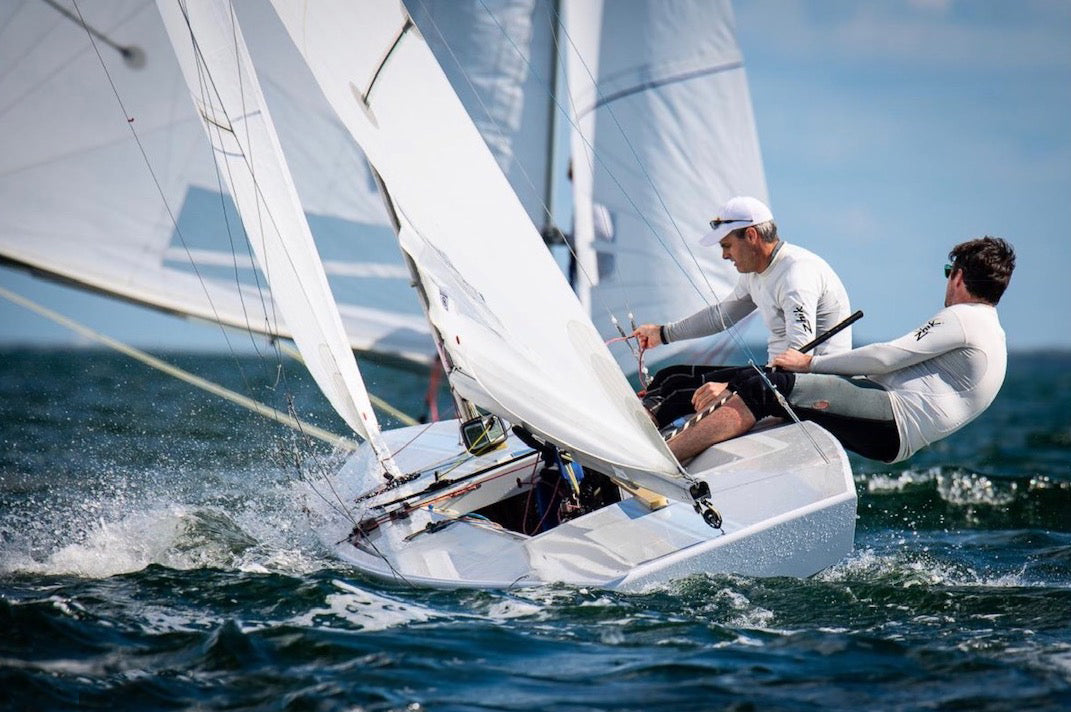
LOCAL STAR SAILORS MAKE WAVES IN USA
LOCAL SAILORS MAKE WAVES IN MIAMI, FL, USA
© Martina Orsini / Star Class
North Sails Ireland would like to congratulate Robert and Peter O'Leary for a fantastic result at the Star Class Junior World Championships in Miami. For this regatta Robert and Peter swapped positions in the boat with Robert taking the helm. Competition was extremely tough as it always is in the Star class but the Brothers just got better and better as they became more comfortable with their new roles winning the final race of the regatta. Imagine what they could have achieved with some real solid practice!
Talking to Robert and Peter after the regatta they were quick to praise their boat speed generated in part by their North Sails. Peter has been a Star customer of North Sails since 2010 and has played a large part in developing the sails they are using today. To echo his own words, "once you have confidence in the kit it's easier to spend more time with your head out of the boat."
Now straight after the Junior Worlds the Brothers are swapping back to their more familiar roles with Robert back in the crew seat for the Walker Cup and the MidWinters.
North Sails Ireland would like to wish them all the best going into the final races of the Star midwinters today in Miami. We will be watching. Good Luck!
© Martina Orsini / Star Class
READ MORE
READ MORE
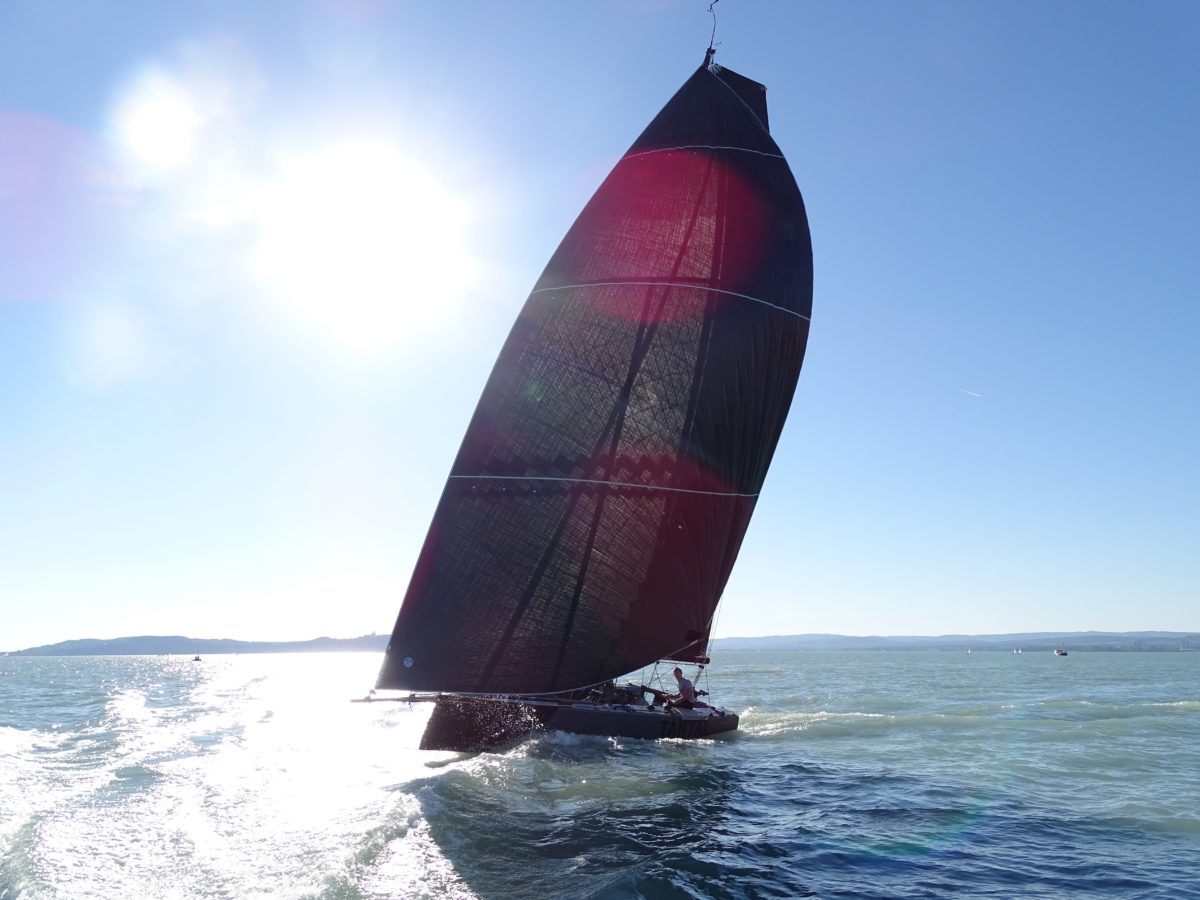
CODE VITORLÁK
CODE VITORLÁK - FUTTATOTT ÉS ÉLES MENETEKHEZ
„CODE” vitorláknak a specializált, gyors, lapos, betekerhető bőszeles vitorlákat nevezünk, amiknek a keresztmérete 50%-75%-a az alsóélnek. Ezek a vitorlák az Upwind orrvitorlák és a bőszeles vitorlák (spinnakerek/gennakerek) közé esnek. CODE vitorlák különösen hatékonyak a nagyteljesítményű egy- és többtestű hajóknál. A CODE Zero 75%-os keresztméretének köszönhetően, bizonyos osztályokban spinnakerként is felmérhető. A személyre szabott vitorlaformák, az elsőélre terhelő vitorlastruktúrának köszönhetően páratlan sebességet és stabilitást nyújtanak. 3Di CODE vitorlákban magas felbontású teherviselő szálak alkotják a szerkezet. A paneles vitorlák esetén a legoptimálisabb panelelrendezés, a választott anyagnak megfelelően.
VÁLTOZATOK
Code Zero (75% smg) spinnakerként felmérhető
Code 70 (70-74% smg) bőszeles VMG
Code 60 (60-69% smg) „Reacher”
Code 50 (50-59% smg) „Tight Reacher”
JELLEMZŐK
• Helix Luff (Code Zero)
• optiomalizált vitorlaforma
• elsőélterhelésre tervezett struktúra
• Soft Clew
• állítható élkötelek
• vitorlaszám, országjelzés
• hitelesített felmérés
• North zipzáras zsák
OPCIONÁLIS
• Helix Luff (Code 70)
• Future Fibres Torquelite betekerős elsőél
• SailKote Plus
• egyedi grafika
READ MORE
READ MORE

3Di ENDURANCE
3Di ENDURANCE - GYORS, ELLENÁLLÓ, SOKOLDALÚ
Föld Körül Vagy A Versenypályán
3Di Endurance a legellenállóbb változata a 3D formázott kompozit vitorláinknak. Az ENDURANCE az eredeti 3Di változat folyamatos továbbfejlesztése, ami legjobb teljesítményt a legnagyobb tartóssággal egyesíti. Az összes 3Di termék előnyét ötvözve az ENDURANCE vitorlákat egy speciális, felszíni gyantával, átitatott külső burkolat még ellenállóbbá teszi a külső, mechanikus behatások ellen (lobogás, hajtogatás, gyűrés, súrlódás és UV sugárzás). Sok vitorlázónak ez komoly előny, az enyhe súly és vastagság növekedés ellenére is.
3Di ENDURANCE ideális választás:
• amennyiben a legfejlettebb túravitorlákat szeretné
• ha tartós nagyteljesítményű versenyzésre is alkalmas vitorlát szeretne
• egy szett vitorlát használna versenyzésre és túrázásra egyaránt
VÁLTOZATOK + AJÁNLOTT FELHASZNÁLÁS
ENDURANCE 760 : Ultra PE / Aramid
ENDURANCE 780 : Ultra PE / Carbon / Aramid
tavi túrázás, tengeri túrázás, tavi versenyzés, tengeri versenyzés, óceáni versenyzés, többtestűek
ELÉRHETŐ VITORLATÍPUSOK
standard nagyvitorla / átmenőlatnis nagyvitorla / árboc és boom betekerős nagyvitorlák / betekerős és nem betekerős orrvitorlák
ENDURANCE ELŐNYEI
• 3D formázott kompozit szerkezet
• legellenállóbb 3Di vitorlák
• meghatározó teljesítmény a tengeri vitorlák között
READ MORE
READ MORE
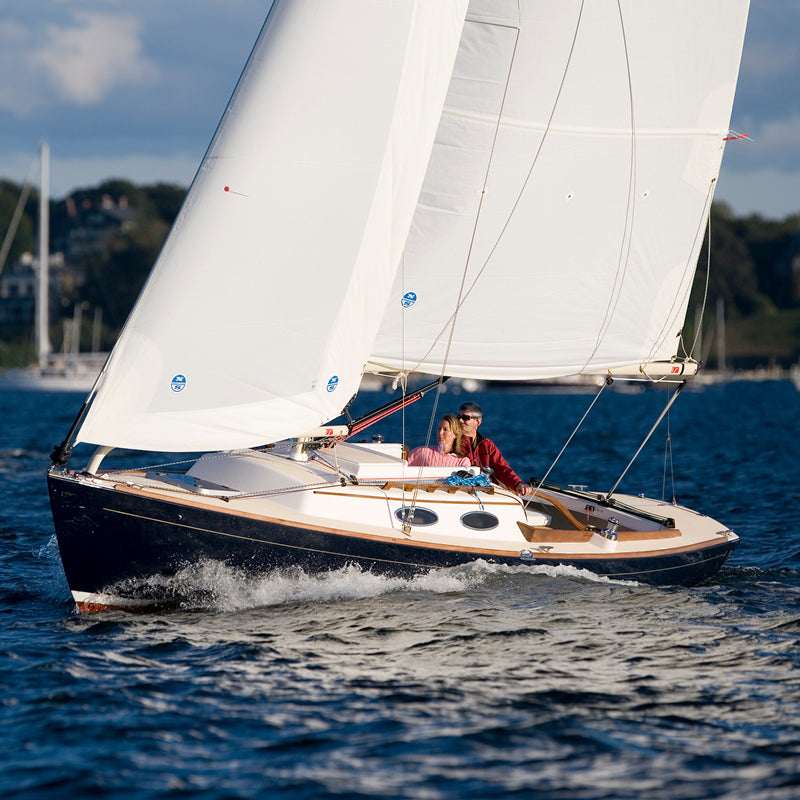
CROSS-CUT
CROSS-CUT - KÖNNYEN ELÉRHETŐ TARTÓSSÁG
Mindennapi és Általános Használatra
NPC Horizontál szabású vitorlákat nagy szakítószilárdságú NorDac Fill™ Polyester szövetből készítjük. North Sails már több mint 50 éve finomítja a NorDac anyagokat, jellemzőjük a lehető legsűrűbb szövés, a jó alaktartás, a kiemelkedő ellenállás a mechanikai behatásokra és a magas UV ellenállóság.
NPC CROSS-CUT ideális választás:
• olyan csúcsminőségű vitorlát szeretne, amelyek megfelel a költségvetésnek
• magas élettartamú vitorlát szeretne
• könnyedén, egyszerűen vitorlázna
VÁLTOZATOK + AJÁNLOTT FELHASZNÁLÁS
NorDac Fill Low Aspect (LA) : 2.5/1-nél kissebb magasság/szélesség arányú vitrolákhoz tervezve
NorDac Fill high Aspect (HA) : különösen alkalmas magasabb, keskenyebb vitorlákhoz.
taví túrázás, tengeri túrázás, óceáni túrázás, klub versenyzés
ELÉRHETŐ VITORLATÍPUSOK
standard nagyvitorla/átmenőlatnis nagyvitorla/árbocba és boomba tekerős nagyvitorlák/betekerős és nem betekerős orrvitorlák
NPC CROSS-CUT ELŐNYEI
• magas minőségű dacron szövet
• könnyen kezelhető
• versenyváltozatok sebességre és tartósságraoptimalizálva
• széles spektrumú szélviszonyokra
• horizontál szabással, a hátsóéllel párhuzamosra igazítva a legalacsonyabb nyúlás érdekében
READ MORE
READ MORE
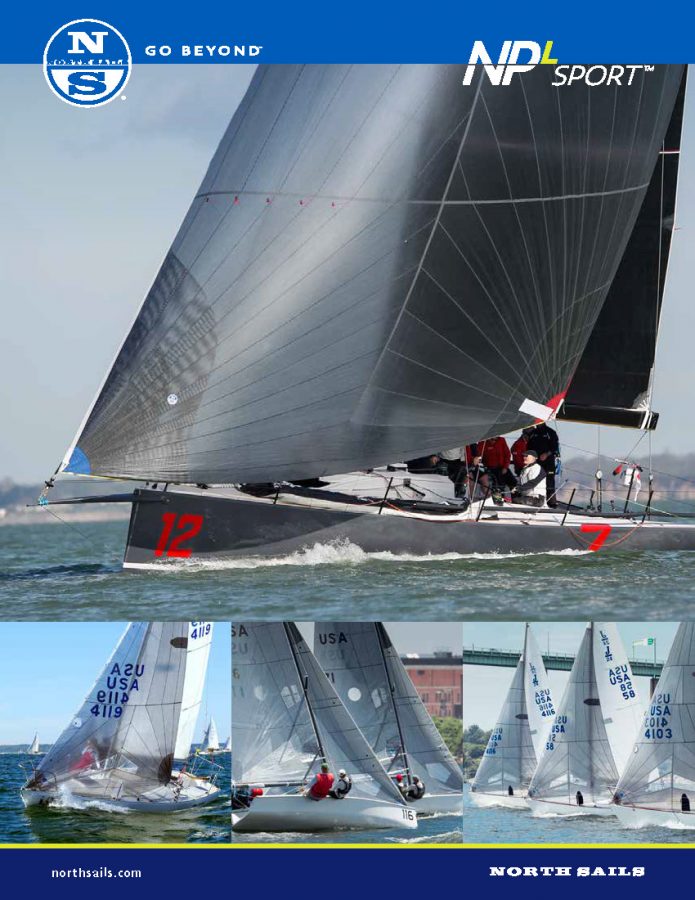
NPL SPORT
NPL SPORT - VILÁGVEZETŐ LAMINÁLT ANYAGOK
Verseny Paneles Vitorlák
NPL SPORT vitorlákat a nagyteljesítményű NORTH SAILS Xi Race laminált anyagból készítjük, amit a világ legfejlettebb gyártósorán állítunk elő. Az eredmény: kivételes minőségű kötés, minimális agasztóanyag felhasználásával. Az iparágban egyedülálló eXact™ eljárás lehetővé teszi, hogy gyártás közben módosítsuk a teherviselő szálak irányát a teherviselő hálón belül. A precíziós eXact eljárás előnye a hagyományos fix szövésű hálóval szemben, az anyagba fektetetett kevesebb, de hatékonyabb teherviselő réteg.
NPL SPORT ideális választás:
• osztályelőírás nem engedi a 3Di technológiát
• kedvezőbb árú vitorlákat szeretne versenyzéshez
• magas teljesítményű ”CODE” vitorlákhoz
VÁLTOZATOK + AJÁNLOTT FELHASZNÁLÁS
Xi RACE : tiszta Mylar külső rétegek, fekete Twaron/Technora® teherviselő szálak, eXact X-háló
Xi RACE T : kiegészítő egyoldalas taffeta
Xi CODE : könnyebb (0.75mil) külső film
Xi CODE T : kiegészítő egyoldalas könnyű taffeta
one design/tavi versenyzés/tengeri versenyzés
ELÉRHETŐ VITORLATÍPUSOK
standard nagyvitorla / átmenőlatnis nagyvitorla / square
top nagyvitorla / verseny orrvitorlák / CODE vitorlák
NPL SPORT ELŐNYEI
• vezető paneles vitorla a one design és klub versenyzésben
• erősebb, könnyebb, kisebb nyúlás a többi laminált anyaghoz képest
• egyedülálló mélynyomásos gyártósor, integrált eXact variálható hálókészítővel
READ MORE
READ MORE

3Di NORDAC
3Di NorDac - ERŐS, LETISZTULT , VARRÁS NÉLKÜL
A Dacron Vitorla Újrafeltalálva
3Di NorDac egyesíti a kompozit 3D sablonon formázott technológiát a megbízható, tartós polyester szálakkal, amiket a vitorlázók évtizedek óta bizalommal használnak. Az eredmény egy innovatív vitorla, simább felülettel és permanens aerodinamikai formával. Az exkluzív gyártástechnológiának köszönhetően, magasabb teljesítményt lehet elérni a hagyományos teherviselő szálakkal.
North Sails kifejezetten a kisebb és közepes méretű hajók számára fejlesztette a 3Di NorDac-ot. 3Di NorDac gyorsabb, könnyebben kezelhető, elérhető árú és nagyon tartós.
3Di NORDAC ideális választás:
• értékeli a nagyszerű formájú vitorlákat
• szeretné hajójából kihozni a legnagyobb teljesítményt
• tartósságot és a kitűnő értéket várja
• paneles szövet vitorláknál nagyobb teljesítményt szeretne
VÁLTOZATOK + AJÁNLOTT FELHASZNÁLÁS
3Di NORDAC : 100% Polyester
tavi, tengeri és földkerülő, kis és közepes méretű hajókra
ELÉRHETŐ VITORLATÍPUSOK
standard nagyvitorla/átmenőlatnis nagyvitorla/árbocba
és boomba tekerős nagyvitorlák/
betekerős és nem betekerős orrvitorlák
3DI NORDAC ELŐNYEI
• egy részből álló, 3D formázott kompozit vitorla
• 100% polyester, a legtartósabb anyag
• fehér szín, kiváló ellenállással a mechanikus behatásokra
• változó anyagsűrűség, irány és rétegek a terhelések szerint
• integrált latnizsákok, erősítések és reff struktúra
• magas UV tűrés
READ MORE
READ MORE
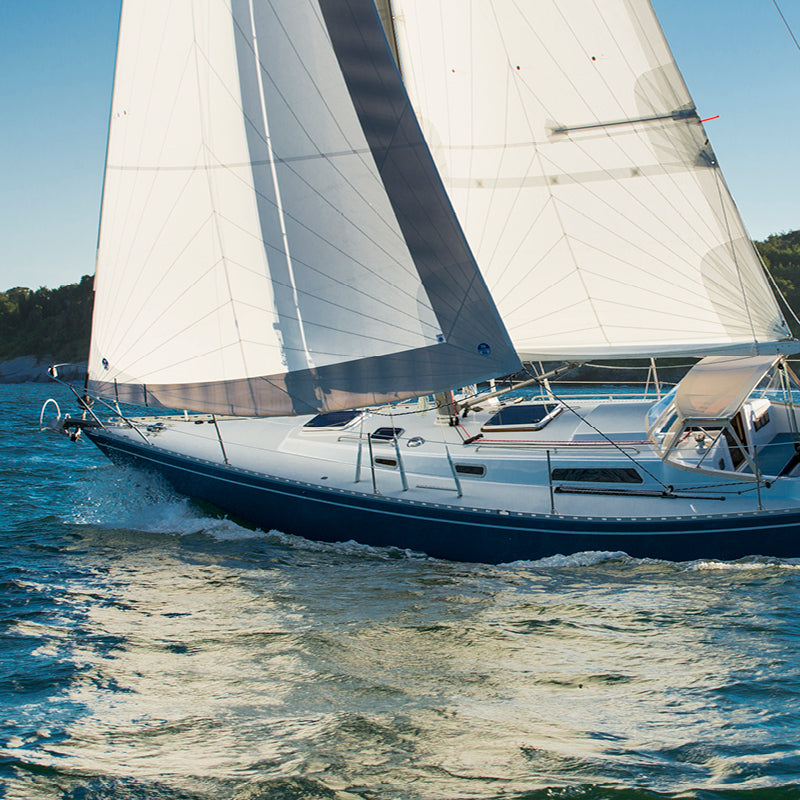
RADIAN
RADIAN - RADIÁL SZÖVÉSŰ FORRADALOM
Alacsony Nyúlás A Szövetvitorlákban
Saját szabadalmú NPC Radian egyedi vitorlaszövetünk, nem laminált polyester, radiál paneles konstrukciókhoz készül. A hosszirányú, egyenes szálak közé, speciálisan formázott keresztszálakat fonunk. Ez teszi lehetővé, hogy a vitorlákat radiál szabással, szofisztikáltabb panel elrendezéssel készítsük, mint a hagyományos horizontál szabásúakat. NPC Radiannal vitorlázók film és ragasztás mentesen élvezhetik a szabás előnyeit és az alacsonyabb nyúlást.
NPC RADIAN ideális választás:
• szeretné a polyester szövet tartósságát
• szeretné a triradiál szabás fejlettebb szerkezetét, nagyobb formastabilitását
• kis, közepes méretű verseny, túraverseny hajója van
• one design osztályban versenyez, ahol előírás a szövet anyaga
VÁLTOZATOK + AJÁNLOTT FELHASZNÁLÁS
NorDac Radian : magas szakítószilárdságú polyester, szabadalmaztatott szövésminta, melemine impregnált bevonat NorDac Radian OLY : exkluzív „magas molekula tömegű” urethane „OLY” bevonat (One Design vitorlákon)
tavi túrázás, tengeri túrázás, tavi versenyzés, tengeri versenyzés, one design és klub versenyzés
ELÉRHETŐ VITORLATÍPUSOK
standard nagyvitorlák / átmenőlatnis nagyvitorlák / square top nagyvitorlák / árbocba és boomba betekerős nagyvitorlák / betekerős orrvitorlák / nem betekerős orrvitorlák
NPC RADIAN ELŐNYEI
• polyester szövet bizonyított tartóssága
• magas szakítószilárdságú polyester
szabadalmaztatott szövéssel
• magas ellenállás a mechanikai hatások és az UV károsodás ellen
• one design verseny nyerő teljesítmény
READ MORE
READ MORE
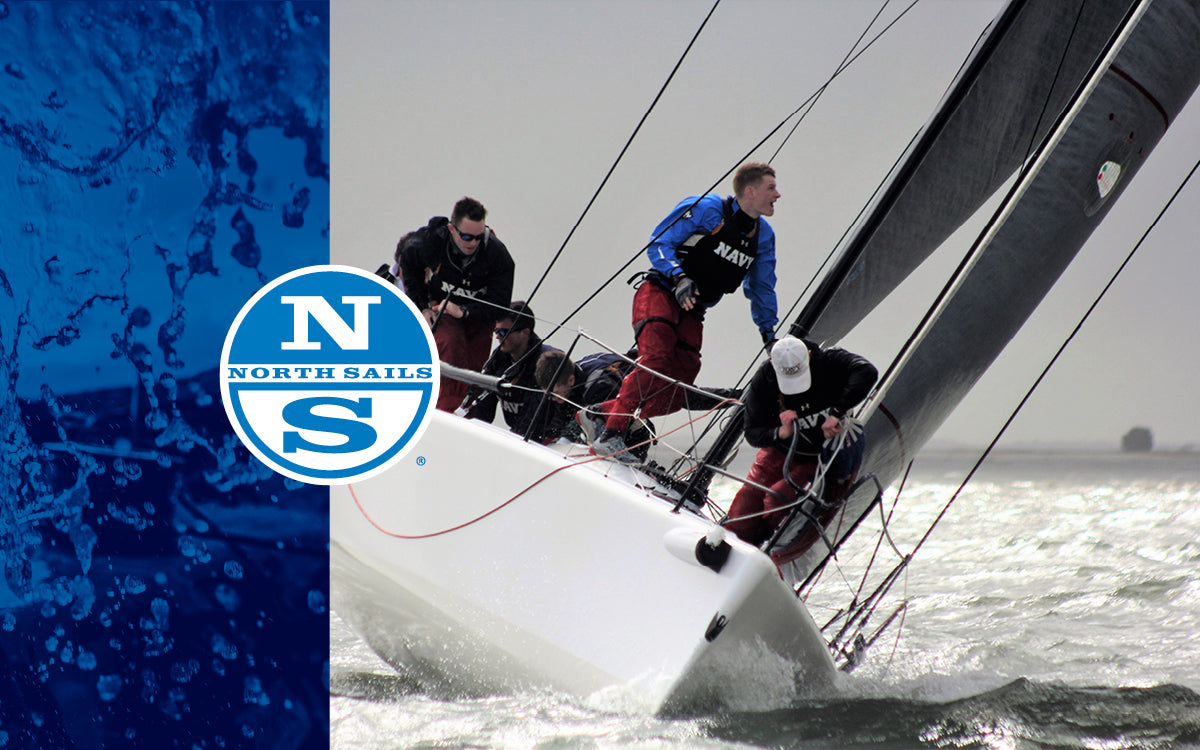
SCOR REGATTA 2019
PREPARATION FOR THE SCOR REGATTA
North Sails Charleston Is Always On Your Team
2018 SCOR Regatta 📸 Priscilla Parker
The North Sails team in Charleston will be on hand to lend support to all teams in preparation for the the upcoming SCOR Regatta. Taking place February 15 - 17, all teams will have the support of local experts John Bowden, Tripp Fellabom and Ervin Grove as they prepare their crews and boats for the collegiate regatta.
Kicking off on February 15th at 1pm in Carolina Yacht Club, the North experts will be available to provide guidance on crew handling, placement and maneuvers. | Notice of Race
Carolina Yacht Club Sailing Center | Friday February 15th | 1pm
READ MORE
READ MORE
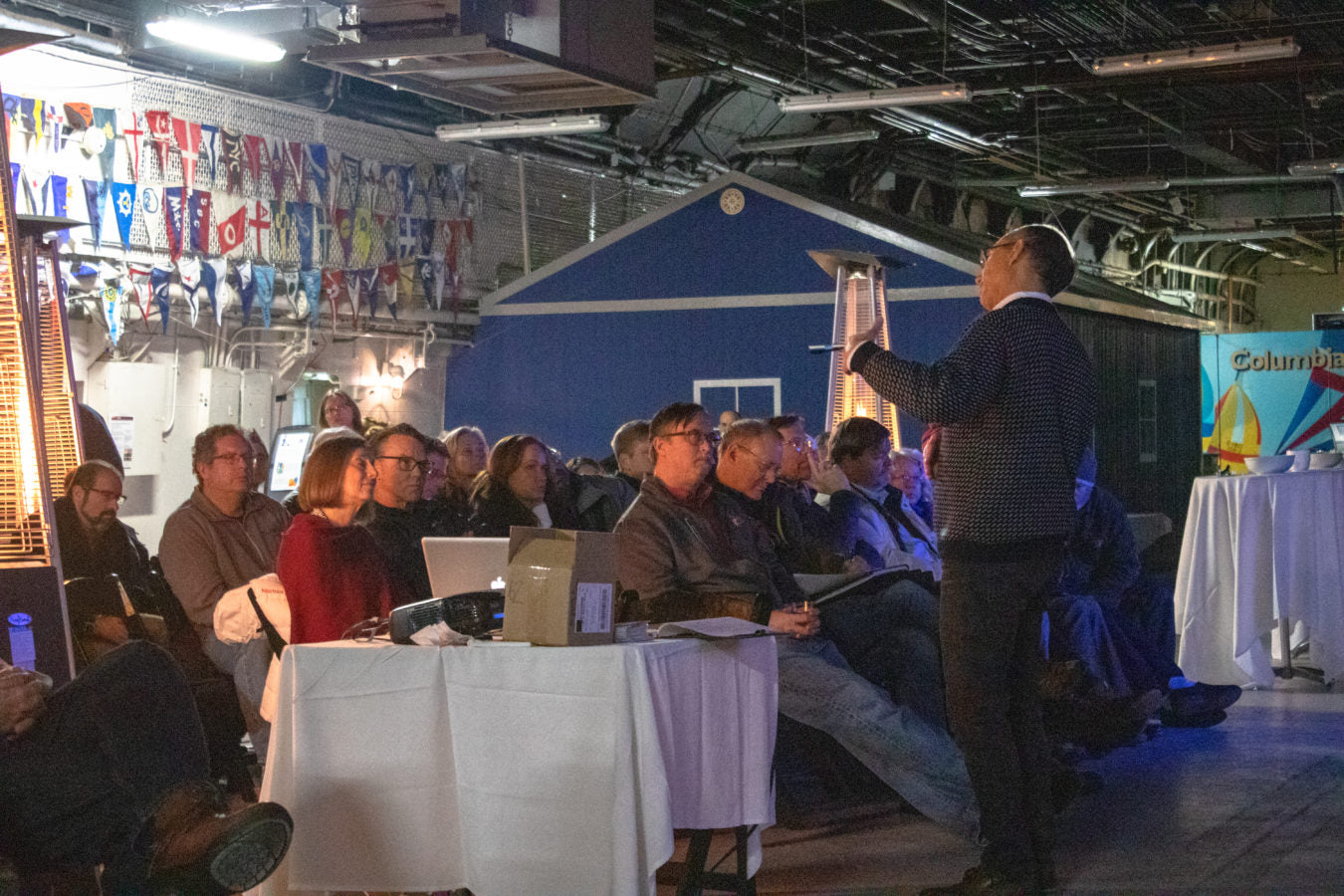
NORTH U AT COLUMBIA YACHT CLUB
NORTH U AT COLUMBIA YACHT CLUB
Bill Gladstone Shares Advice on Tactics & Speed
It was great to have our old friend & former Evanston resident Bill Gladstone back in Chicago at Columbia Yacht Club for the first of our winter seminars. In conjunction with CASRA and Columbia Yacht Club, our objective this winter is to give all involved sailors the opportunity to invest time in the development of their sailing knowledge base.
"If nothing else, it helps keep the memory of warmer sailing days alive as we wait for the next season on the water. We are inspired when knowledgeable sailors let us know they came away with a few bits of clarification or a deeper knowledge of tactics at these events."
We had 80+ participants on a cold, snowy Wednesday night for Bill’s introductory North U. survey seminar on “Tactics Tips & Go Fast Topics”. The North U courses take a full day, each discussing Speed and then Tactics, so Bill had his work cut out trying to fit as much as he could into two hours.
Bill began his seminar with the “pyramid of success” for sailboat racing. Starting with a foundation of Boat Handling, he emphasized the importance of practicing with specific drills and tips on increasing proficiency of captain and crew alike. With better Boat Handling, you can then start to focus on increasing your Boat Speed, which in turn will allow you spend more effort on maximizing your Position on the race course.
Sailboat racing is a bit like chess, in that the maximum enjoyment comes from mastering the mental aspects of the game; but you cannot get to that point until you first know how all the pieces can move! Those sailing components include boat handling, crew teamwork, boat & equipment prep, understanding sail shape & trim, steering, & more – all topics that are dealt with, in detail, at the full North U Speed course.
Thank you, Bill, for a very enjoyable learning experience. We hope to see in March at another event!
Upcoming events include:
March 2: Chicago
March 3: Milwaukee
March 3: Chicago - CYC Monroe Meet'n'Greet
March 13: Chicago - Chicago Mac Strategy Seminar
READ MORE
READ MORE
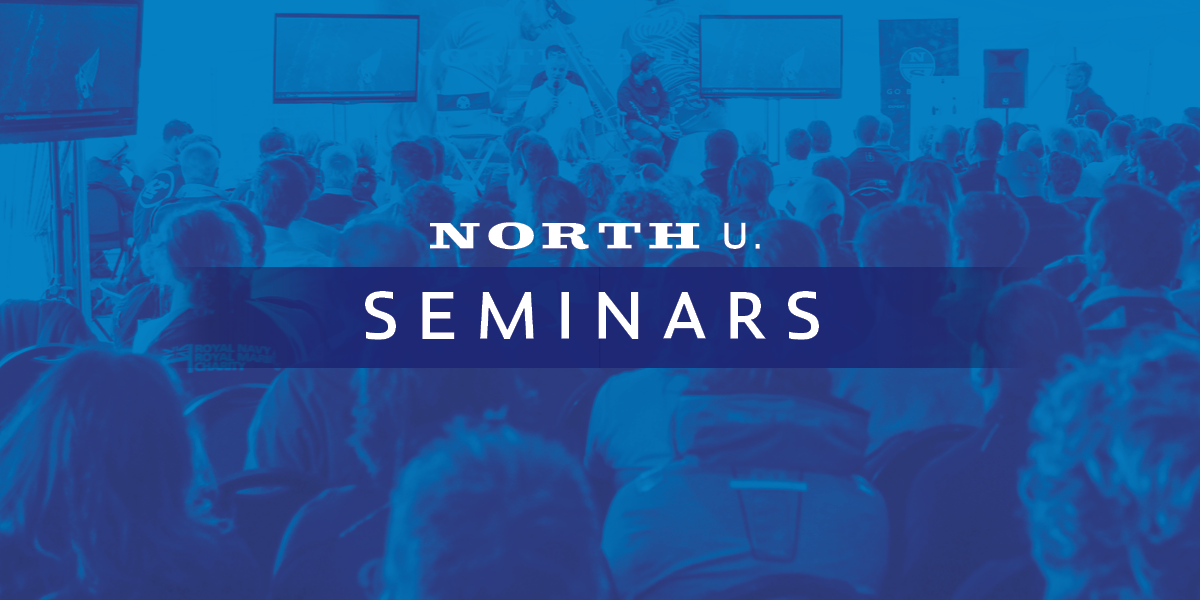
STRATEGY, SAIL TRIM & TUNING SEMINAR
STARTING STRATEGIES, SAIL TRIM + TUNING
New Year, New Skills With Your Local Experts
Wednesday March 20 | 6:00PM
The margin between a mid-fleet finish and winning is often less than 2%. At our racing seminars, you will learn the fundamental concepts and nuanced techniques that can deliver your winning margin. Join North Sails experts Chuck Allen, Tim Healy, Will Welles, and Mike Marshall for a night dedicated to starting strategies, sail trim and tuning. RSVP today for this complimentary seminar, open to all boats, and join us in March at the Portsmouth, RI loft
READ MORE
READ MORE
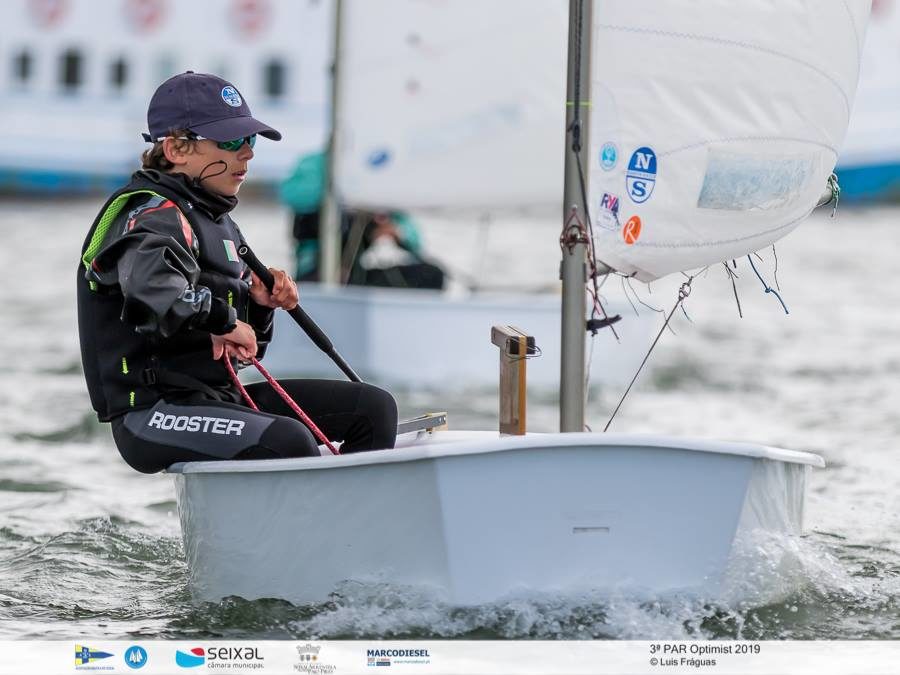
NORTH SAILS NO PODIUM DA 3ª PAR CENTRO OPTIMIST
PARABÉNS A TODOS OS VELEJADORES NORTH SAILS PELOS RESULTADOS NO SEIXAL
Na regata do passado fim-de-semana, o Francisco Uva e o Augusto Castelo Branco tiveram uma grande prestação e subiram ao podium como 2º e 3º classificados, respectivamente.
Francisco Uva Photo Credits:Luis Fráguas
Augusto Castelo Branco Photo Credits: Luis Fráguas
As velejadoras Katharina Leite e Matilde Bandeira fizeram, também, um excelente trabalho!
A Katharina conquistou o 1º lugar e a Matilde o 3ºlugar, em Feminino.
Katharina Leite Photo Credits: Luis Fráguas
Matilde Bandeira Photo Credits: Luis Fráguas
Entre os onze primeiros classificados foram 6 os velejadores North Sails.
Competiram com os modelos de vela R-1 o Francisco Uva e a Matilde Bandeira, com a R-2 o Augusto Castelo Branco, com a R-4 o Salvador Baptista-Fernandes e o Maxx de Groot e com a R-5 a Katharina Leite. Não podemos deixar de referir que o velejador Maxx de Groot está na sua primeira época de competição. Parabéns pelo bom trabalho!
No final, o Francisco Uva consolidou, assim, a sua posição no ranking centro, mantendo-se no primeiro lugar da tabela.
Agora é continuar a treinar com empenho, pois Vilamoura está mesmo à porta! Até lá, não deixem de nos consultar para mais informações sobre as North Sails.
Photo Credits: Luis Fráguas
Contacte-nos já hoje!
Sail Fast and Good Luck!
READ MORE
READ MORE
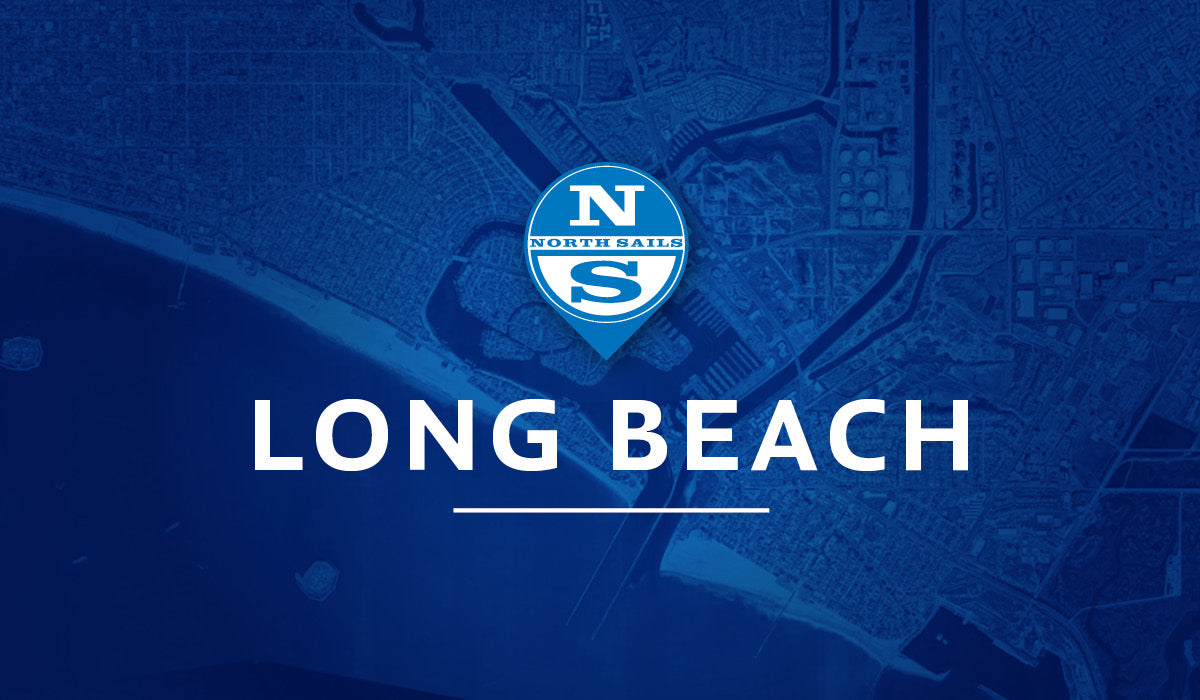
THE NEW NORTH SAILS LONG BEACH
THE NEW NORTH SAILS LONG BEACH
Your Team Has Moved To Long Beach. Visit Our New Location, Open Now
North Sails is excited to announce the opening of our new loft in Long Beach, CA. Managed by local experts Bill Herrschaft and Zack Maxam, the North Sails loft previously based in Costa Mesa has moved operations to a new location: 5752 E 2nd Street, Long Beach, CA 90903.
Open now, the new loft is ideally located in Long Beach, the racing hub of central California and is in close proximity to serve local clubs including Long Beach Yacht Club and ABYC. The new location will be convenient for sail pickup and drop off and service work on the extensive dinghy fleet in the area. Working in close partnership with North's West coast superyacht hub in San Diego, the majority of larger sails will be transported and serviced in San Diego where the extensive floor space is designed to handle any service needs.
North Sails has a long history in the Long Beach area, stemming from the original location in the late 70's. The team is excited to return to the area as the new location allows full coverage and support for clients based in Marina Del Rey down through to Dana Point, with Long Beach as the central hub.
"One of the many benefits for everyone in the relocation effort is that we can now provide customer service to a broader range of territory, and we have a great location for clients to visit and talk about their sails"
- Bill Herrschaft, Loft Manager
The new loft is a fresh addition to the downtown Long Beach area and a prime space for clients to meet with the sales and design team. Contact your local team at 949-645-4660 and make sure you stop in and visit.
READ MORE
READ MORE
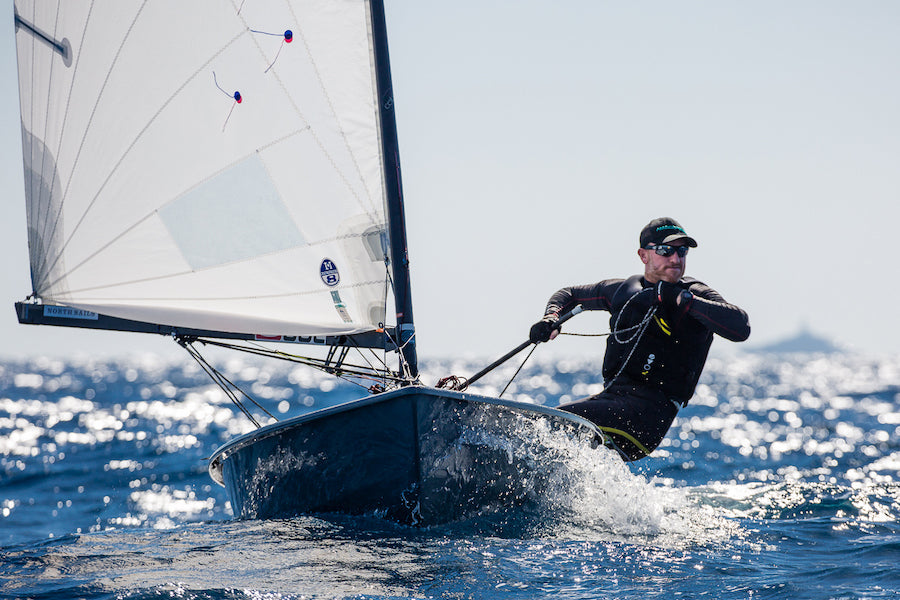
NEW OK DINGHY CLASS LEADER
NEW OK DINGHY CLASS LEADER
Singlehanded Champion Takes Lead In Sail Development
© Robert Deaves
Charlie Cumbley came into sailing through his family. “My grandpa worked for a boat builder, and then I got started just for leisure,” he says. “I wasn’t involved in any junior race teams. I just went out and found any boats I could sail, and that’s how it progressed until I got relatively serious in Finn sailing in my late teens and ended up meeting Paul Hobson. For my sins,” he adds, laughing.
Hobson invited him to join North Sails One Design in 2006, which Charlie describes as “an awful long time ago.” Today his title is One Design Sales Manager for the UK and gets involved in “everything from Optimists to J/80s.” He’s recently been named class leader in the OK Dinghy.
By his own estimate, Charlie has won something like fifteen national championships “across a little range of vessels.” He earned a spot on the podium at many international OK events the last couple of years and was winning the 2018 OK Dinghy Europeans until the last race, when he lost a tight battle with Star champion Freddy Loof. Though he feels he has the most experience in singlehanded boats, Charlie also sails Etchells and J/70s. “Nothing gets too stale, which is quite nice. And,” he adds, laughing, “I’ve got someone else to blame.”
© Robert Deaves
OK Resurgence
When Charlie first started sailing the OK, the fifty year old class was just starting what he calls its second wind. “130 boats at the 2018 Worlds; it’s definitely on the up.” Older designs like the OK are coming back, he thinks, because people get tired of just going fast. “They like getting back into a boat where the racing’s really close and really tactical.” And unlike the Finn, “you don’t need to be a monster of a guy” to sail the OK, though there are plenty of Olympians (like Loof) in the fleet.
“Sailors who maybe aren’t quite as strong as they used to be can get involved in this class, and if they’re good, they can have some decent results. People always like doing well, don’t they?”
The OK offers enough tweakability for retired Finn and Star sailors, thanks to its origins as a trainer for the singlehanded Olympic class. The masts are carbon, “not quite as exotic as the Finn mast, so it’s not like a small mortgage to buy one, but they’re quite nicely refined now. The new boats they’re knocking out are really nice bits of kit.”
© Robert Deaves
Sail Development
The class is strong in northern Europe and also in New Zealand and Australia. Charlie says having design groups in both hemispheres helps ensure year-round progress. “They can push on things through their summer, when it’s our winter and a bit quieter, and vice versa. They give help and feedback and design input, and then I compare it to what we’re getting over here, and then we make a decision on where we go. So, there’s been quite a lot of development in 2018. The sail that won the Worlds was the Kiwi design, which was great. Our UK design was third and leading up until the last race.”
North offers three different OK sail designs, so there’s something for everyone regardless of “where you sail, how heavy you are, and how stiff your mast is.” For big events, each competitor can measure in two sails. “You could quite happily measure in a full and a flat sail, which is what I do and what other guys do. You end up with a two sail inventory.” And each design has a large crossover, he clarifies, “so that you don’t get into that situation where you’re sailing round in five knots with a sail that’s designed purely for 20 knots and pulling your hair out.”
Mast stiffness used to be a large variable, but over the last few years the masts have become more one design—which means sail design can be more refined as well. “All the sails are built with custom luff curves to fit the mast,” Charlie says, “ just like we do in the Finns for the Olympic guys. It’s pretty customizable.”
Charlie travels quite a bit to sail, so when he’s home he tries to spend as much time as possible with his wife and two kids. His older daughter is almost big enough for Optimists, which means “I’ll become an Optimist parent. Scary things happen then!”
As for the OK Dinghy, Charlie hopes to one day step on to the top of the Worlds podium—but not in 2019, since he couldn’t make it to New Zealand. “Hopefully, the Kiwi guys nail the Worlds and we’ll sit down after that and have a little chat and see things we can improve on,” he says.
“Work on through the season. With more good sailors coming in, you need to keep pushing, getting those little details right.”
© Robert Deaves
READ MORE
READ MORE

DEPOWERING & POWERING-UP
SAIL POWER: DEPOWERING & POWERING-UP
By Bill Gladstone
This article is derived from the North U Trim Seminar. North U offers seminars, clinics, books, media, online training, and coaching. Visit NorthU.com to Learn More
In the previous segment we explored sail shape and sail power in moderate air, and how proper shape varies with sea state. In this segment we explore Angle of Attack in moderate air trim and also techniques for de-powering in heavy air and powering-up in light air.
Moderate Air Trim
Angle of Attack
At full power in moderate air we adjust the mix of depth and twist to suit the conditions – adding depth and twist as chop increasing to improve acceleration and create a wider steering groove, or trimming with less depth and less twist for higher pointing and higher speed in smooth water.
Meanwhile we adjust and fine tune angle of attack through steering and traveler to maintain full power, speed, and balance. Much of the time this falls largely to the driver – footing off when underpowered or feathering up when overpowered to keep the boat at full power.
As we push to the high end of moderate air, and particularly in puffy conditions, a helm response alone is not enough. In these conditions playing the traveler is also critical to maintaining proper heel, balance, and speed. (On boats without a traveler there are alternate techniques, covered in Sail Controls, later.) When the main trimmer is doing a great job the angle of heel and helm load will not change – the trimmer will play the traveler as the wind changes, down in the puffs and up in the lulls. When perfectly executed the main trimmer is really driving the boat upwind, with the rudder following along as a trim tab.
Fig. 401 Angle of attack is controlled both by the driver and sail trimmers. Increase power by bearing off or trimming in; reduce power by feathering up or lowering the traveller down. Pulling the traveller up and sailing higher might provide the same speed at a higher angle. It would be worth a try…
Heavy Air
De-Powering
In overpowering conditions sail power can be reduced by reducing angle of attack, by flattening the sail depth, or by increasing twist. Each reduces power, but which is preferred? Often it is best to start to de-power by flattening sails while keeping closed leeches to maintain pointing ability. This is the case as the wind often builds more quickly than the waves, so we get relatively smooth water in a building breeze.
In chop or waves it may be preferred to use twist to control power while maintaining depth for acceleration. If steering is difficult, then de-powering with twist can create a wider, more forgiving steering groove. Most commonly, the de-powering progression would include changes in both depth and twist.
Angle of attack is played moment to moment by the driver and trimmers to maintain speed, pointing and balance at full power: neither overpowered nor under-powered. A core challenge of upwind sail trim is achieving not just the correct total power, but the correct blend of angle of attack, depth and twist; and then adjusting total power and the mix to keep up with ever-changing conditions.
Fig. 402. The boat shows great trim in fresh breeze, with sails flat and twisted, and the traveler down. Note the modest heel and balanced helm. Note also matching shape of the jib and main.
Steering in Waves
When the boat is difficult to steer in the waves that often means it is out of trim. If you’re underpowered as you squeeze up and knocked on your ear as you bear off it is not bad steering – it’s poor trim. Adding some twist and depth will create a wider steering groove and provide more punch to get through the waves. We are often told to steer up the faces and bear off down the backs of waves. We’re going to change that: If the boat is well trimmed it will find its own best path through the waves. You can help by playing the traveler (or sheet if vang sheeting) rather than steering with the rudder.
Fig. 403. For best performance in waves set up with some depth for punch and with twist to provide a more gradual onset and release of power.
Light Air Trim
Less than Full Power
And what about light air, when we don’t have power to trade? When sailing in underpowered conditions we sail with a wide angle of attack to increase power, a deep sail shape for added power, and as little twist as possible without stalling airflow. As we’ve seen in earlier segments, trimming to the wind gradient often requires substantial twist in light air. The wide angle of attack and deep sail shape that add power in light air are also prone to stalling, so substantial twist in needed in lighter winds to encourage airflow and prevent stalling.
Fig. 404. In light air we maximize power with a wide angle of attack, deep sail shape, and just enough twist to prevent a stall.
Re-Powering
In a fading wind the chop will often linger so power is added with depth as the breeze fades while twist is maintained to preserve a wide steering groove.
One final bit
We’ll see more on this theme of Mix of Power throughout the remaining Upwind Trim segments. We’ll also address the balance of power between the main and jib as part of our ongoing mix of power discussion.
Pro Tip (wink wink)
To protect your reputation as a sail trim expert NEVER make a change in trim as the breeze fades. Here’s why:
In a building breeze pretty much any change you make will improve speed, so when you see a puff coming, make a change. The puff hits and voila – performance and your reputation improve.
In a fading breeze, no matter what you do, performance will suffer. If you make a change as the breeze fades then your reputation will suffer along with performance – DON’T do it.
© Copyright Bill Gladstone
READ MORE
READ MORE
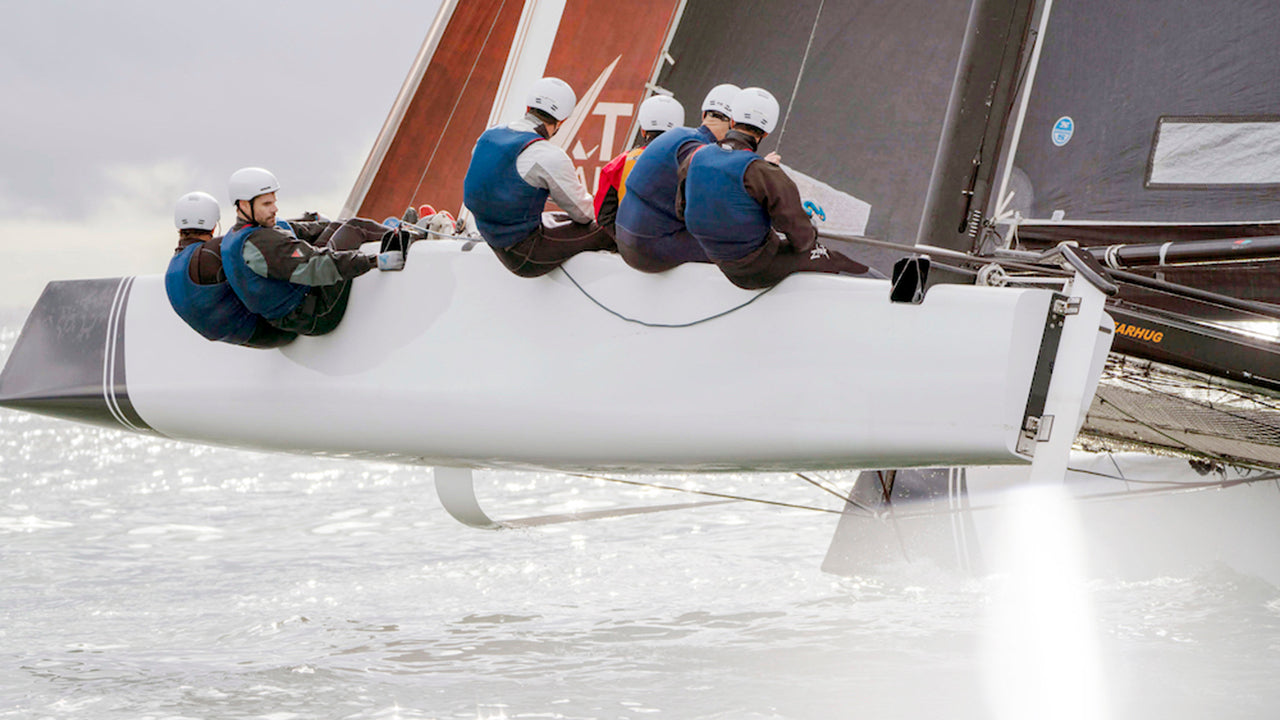
STARS + STRIPES SELECT NORTH SAILS
NORTH SAILS CONFIRMED AS SUPPLIER TO STAR + STRIPES TEAM USA
The New, All-American Team Have Picked The World’s Leading Sailmaker In Its Quest For A Historic Victory
📸 Stars + Stripes Team USA
North Sails is proud to announce they have been selected to supply sails and design expertise to Stars + Stripes Team USA, one of the American challengers for the 36th America’s Cup. This follows the news (Nov 2018 ) that North Sails is the sailmaker of choice for defender Emirates Team New Zealand, and Challengers Prada Luna Rossa and INEOS TEAM UK, who are all vying to win the oldest trophy in international sport.
JB Braun, Director of Design and Engineering for North Sails, will also serve as technical director for Stars + Stripes Team USA. In doing so, JB joins an enviable roster of North Sails designers who are currently embedded with North Sails’ confirmed teams. They all bring with them expertise and innovation to a highly complex and competitive challenge in building a boat to win this event. As part of his role, JB will be looking at how to maximize all the elements that make the ‘Engine above Deck’ on these powerful foiling monohulls. He will also lead further development and optimization of the design package Star + Stripes Team USA have purchased from Emirates Team New Zealand.
📸 Stars + Stripes Team USA
JB Braun commented: “I have been involved in the America’s Cup for over 18 years and in that time I have seen technology and innovation change things beyond recognition. But one thing remains the same – the fastest boat wins. That means every part of your boat, from the carbon hull and foils to the mast and sails, with an emphasis on the sailing team, have to be the very best and able to sail faster and smarter.”
“Our challenge this time, with a new boat and much to learn, is how we ensure we are sailing the boat close to optimum trim a higher percentage of the time than our competition. I am excited to be a part of Stars + Stripes Team USA and see how we develop the boat and team into a winning unit.”
Braun’s expertise with America’s Cup programs is rivaled by few. His America’s Cup career began with Young America in 2000, then he joined Stars + Stripes in 2003, followed by 12 years with Oracle Team USA. Braun was an integral part of the aero design and analysis that helped Oracle Team USA make their famous comeback during the 34th America’s Cup in San Francisco.
Staying true to their American roots, Stars + Stripes Team USA will work closely with the North Sails design and construction team in Minden, Nevada, the birthplace for North’s 3D sailmaking innovation.
Ken Read, President of North Sails, commented: “We pride ourselves at North Sails as having the best minds, known for pushing boundaries and finding answers to challenging problems. There is no doubt that this new boat will be cutting edge and very fast, but how you combine this new aero package with crew limitations and reliability will be the key to victory. JB is a proven success in the America’s Cup but more than that, he understands how to bring all the elements of design, technology and innovation together to create something that delivers. I am delighted that he has been able to join another Stars + Stripes team, this time with a new generation of sailors and a whole different ball game. I can only look forward to watching how things move from the design process to the sailing stage and where the teams get to with this new rule.”
Stars + Stripes Team USA Co-Founder Mike Buckley (L) and Helmsman Taylor Canfield (R) 📸 Stars + Stripes Team USA
READ MORE
READ MORE
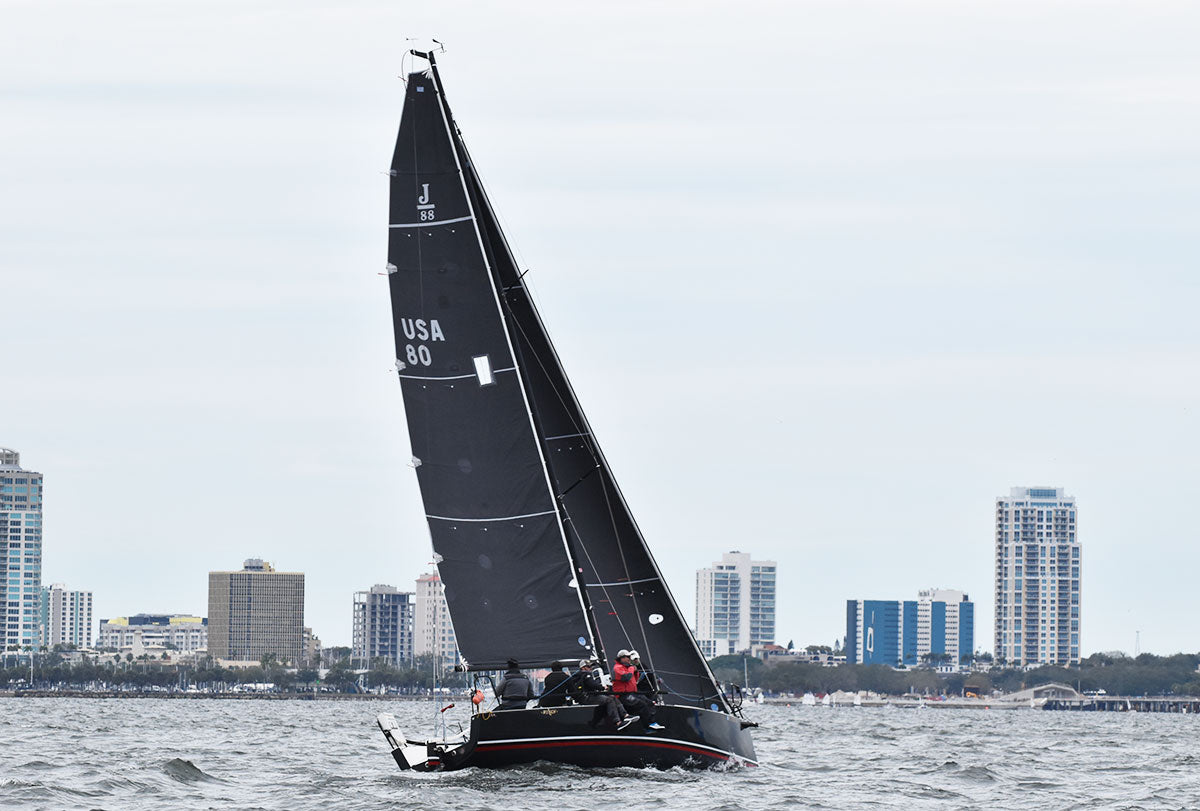
WINGS WIN J/88 MIDWINTERS IN ST. PETE
3Di BRINGS WINGS TO NEW HEIGHTS AT THE J/88 MIDWINTERS
Five Bullets Guarantees The Title in St. Pete
© Chris Howell
Taking on a new sailing challenge is nothing new for Mike Bruno. Through nearly 3 decades of racing he and his team have raced, and succeeded, in several different boats. So when the J/88 launched onto the scene Mike jumped in and the Wings program had a new sailing challenge to conquer. Fresh of their recent win at JFest in St. Petersburg we wanted to know more about the Wings team and their thoughts on their 3Di sails.
Mike, first of congratulations to you and your team on Wings for your continued success in the J88. Can you share with us a little bit about your sailing background and how long have you been sailing in the J88 class?
Thanks! We are having fun with Wings and continue to learn more and more about sailing the J88 fast. As how we got this far, I started out as casual cruising sailor and began racing about 25 years ago. I would say that in the past 15 years or so we have gotten fairly serious about racing and being competitive. We had a Jonmeri 40’ named Karjala, which I built and raced for many years, then a series of ‘Wings’. First was a J/124 I raced for 2 years. It was a nice boat but we found it to have a tough rating to sail, so we traded it for a J/122. The J/122 really was a great step and I successfully campaigned that boat, with a few partners, for 8 years initially, as a one design. The J/122 program brought us some great results including winning the North American title twice and a Rolex award at a NYYC regatta. That brought us to the current Wings, the J/88, which I bought the 3 years ago. We have really enjoyed this program and had great wins including the inaugural J88 North Americans as well as a big win at Key West Race Week.
The pictures from the JFest Regatta in St. Petersburg made it appear that you had good breeze for the event. Did the conditions match up with the pictures throughout the championship?
St. Petersburg Yacht Club runs excellent events and Tampa Bay can be a bit “challenging” so you really never know what you will get on any given day, especially in the winter. That said, the sailing conditions at the JFest were certainly fair. Across the entire event I’d say the breeze ranged from 8-20 knots. I think the cooler conditions (locals may call it “unseasonable”) played a role in how much pressure we had throughout the weekend. Also, Tampa Bay is quite shallow so there was a reasonable amount of sea state but the very steady breeze overall and significant shifts kept every team on their toes and working hard looking for opportunities to be gained via tactics and gear changing.
Can you tell us a little bit about your team, who does what and how long have you all been together?
The team is really made up of a large group of great friends and awesome sailors and, like many others, we find we are rotating in and jumbling pieces for any particular event to make sure we, not only do well, but have fun. For JFest Midwinters I held the tiller and had Chris Morgan, a local Floridian, trim main and work with me on our overall speed. Stu Johnstone was our tactician and really had a great feel for the bay the entire weekend. Tim Randall ran the pit for us while Mike Booker did all the headsail trimming and Stephen Yip ran the bow.
Looking back through the weekend what were the keys to your success at the mid-winters?
It’s a great question as it forces me to look back and try to pinpoint a few things I think we did really well.
1. The biggest thing was we were just able to sail a bit higher and faster than the fleet much of the time. A lot goes into that for sure. The team really worked hard on proper rig tune and working the sails and trim constantly to maximize the boats potential but our new North 3Di sails were probably the most significant difference in our ability to make that happen.
2. Our crew work was excellent! As a skipper knowing that your team can execute any maneuver at a seconds notice and pull it off without a hitch is a huge confidence builder for the entire boat. It seems that at almost every mark rounding we seemed to gain 1-3 boat lengths.
3. I mentioned earlier that Stu Johnstone called or tactics for the weekend and he was really on tactically this regatta Stu didn’t miss anything which also gave us terrific confidence. We did make a few mistakes in the event, including being over early at the start in 2 races.In the last race we were over (again) and we started, probably, 300 yards behind fleet but Stu kept us in the game, and we kept using our boat speed and crew work to do all we could to gain distance and we still nearly won the race!! I guess maybe the new saying is “When you have a great team and fast sails it’s never over until it’s over!”.
What are your 2019 sailing plans for the J88?
Wings has a very full 2019 sailing calendar. We have already done the Egmont Key Race and St. Pete J Fest. Up next in February is the St Pete NOODs then we head up to Charleston Race Week in April. From there the team will go back north for the American Yacht Club Spring and Fall, Cedar Point One Design Regatta, Block Island Race Week, possibly the New York Yacht Club 175th Regatta as well as J Fest in Newport with a focus on the J88 NAs in mid October.
Thanks Mike and congratulations again. Sounds like you have a full schedule set with an awesome team. Good luck the rest of the year, have fun and sail fast!
Learn about North 3Di products for the J/88 Class.
READ MORE
READ MORE

DIE NÄCHSTE MESSE STEHT VOR DER TÜR!
DIE NÄCHSTE MESSE STEHT VOR DER TÜR
SuisseNautic in Bern
Vom 20. - 24. Februar finden Sie uns an der SuisseNautic in Bern in der Halle 3.2 am Stand E02.
Gerne können Sie schon heute einen Termin mit uns abmachen: 071 680 00 80
READ MORE
READ MORE

TOP HONOURS AT THE BAY OF ISLANDS SAILING WEEK
NORTH SAILS TAKE TOP HONOURS AT THE BAY OF ISLANDS SAILING WEEK
A record-breaking number of boats turned out for the 2019 CRC Bay of Islands Sailing Week, with yachts carrying North Sails taking top honours in many divisions.
Ker 40 Icebreaker 📸 Lissa Reyden
A total of 116 yachts entered this year, up from just over 100 in 2018, and an extra Island Racing division had to be created to accommodate all the entries.
The biggest winner of the regatta was local boat Kia Kaha, skippered by Chris Hornell, an older TP52 which took out the South Pacific PHRF Championships trophy with a local crew and an inventory including many North sails. Division A was won on line by TP52 Mayhem, with a full North Sails wardrobe.
But everyone was a winner who got to spend three days sailing around one of New Zealand’s most beautiful bays, enjoying near perfect conditions with 8–12 knots and sunny skies every day.
North Sails designer Magnus Doole, sales and marketing manager Andrew Wills, loft manager Guy Hewson and master sailmaker Casey Bellingham raced on different boats in the highly competitive B division. Doole and the crew on Ker 40 Icebreaker came out on top, winning on line, PHRF and general handicap, after taking out every race on line.
Doole says conditions were perfectly suited to Icebreaker, which was utilising a new North 3Di mainsail and number 1.5 jib.
"The 1.5 design is based on the latest-generation TP52 Super Series mould, and we definitely had a noticeable VMG gain in its range," he says. "We decided that with the configuration changes we had made to the boat, we wouldn’t get a new number 1, but get a 1.5 and focus on having a great result in this regatta, where we knew conditions were often in that 8–12 knot range."
There was a slight hiccup on the last day, when Icebreaker started prematurely and had to go back, but they quickly managed to get back out in front, before the first mark.
"We had boat-speed to burn when we needed it," Doole says, adding that the Bay of Islands "is a pretty great place to go yachting."
Also in the B division, Stomp 38 Titanium (now owned by Bellingham and his brother) finished second and Clockwork (with Hewson aboard) third on PHRF, while Soto 40 Alegre, with Wills in her crew, finished second on line.
📸 Lissa Reyden
Boats with North sails also took honours in the various Island Racing divisions, where yachts sail longer courses around the beautiful Bay. Ran Tan, with North general manager Richard Bicknell on board, won Island Racing A on PHRF and general handicap, with Bull Rush third on general; First Picasso took out general handicap in Island Racing B; Rattle n Rum was first on PHRF in Island Racing C, and Black Magic first on PHRF in Island Racing F.
The sportsboat division provided some close and exciting racing, with pro sailor Stu Wilson and his crew on Shaw 7 Angry Dragon, using North sails, taking out line and handicap honours. North One Design manager Derek Scott steered Magic 25 w-8 Up to second place on general handicap.
There was also tight racing in the Young 88 division, where North Sails expert Matt Kelway sailed aboard Flash Gordon, using a North Sails main cut to the new radial design.
"We had a really great week, doing two windward-leewards and a harbour race each day," he says. "It was all tied up going into the last day and we had close racing the whole time."
Kelway says it’s great to see Bay of Islands continuing to be so well supported by local sailors, with the fleet this year reaching record numbers in the event’s 17th year.
"It’s fantastic that there were so many boats, and so much interest in the island racing divisions. You can do windward-leewards anywhere, but people want to get out and see the islands and what the Bay has to offer."
READ MORE
READ MORE
